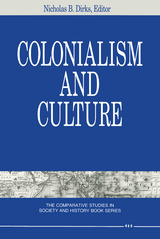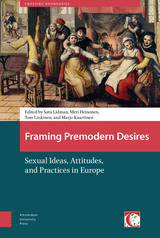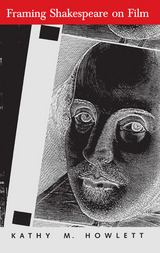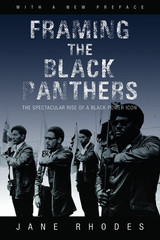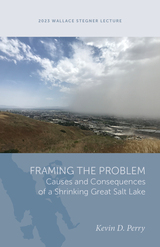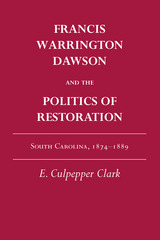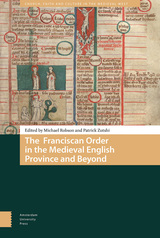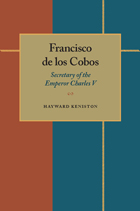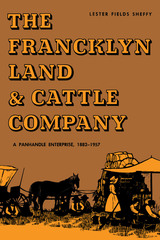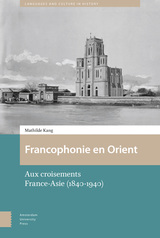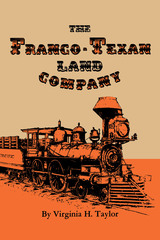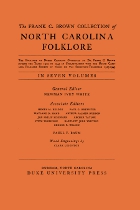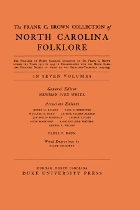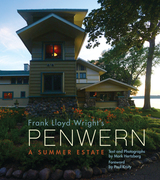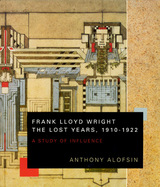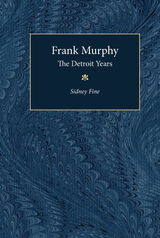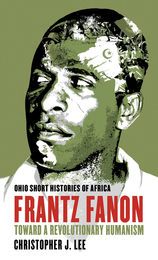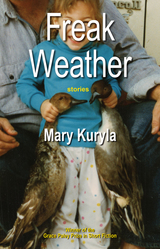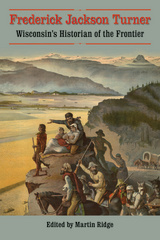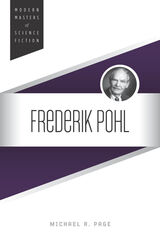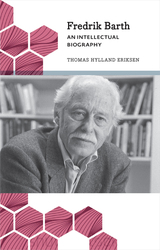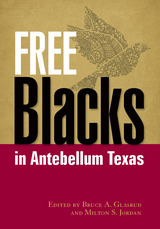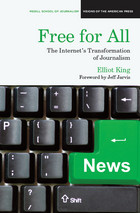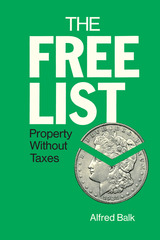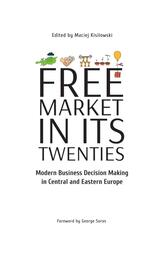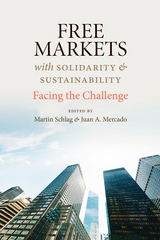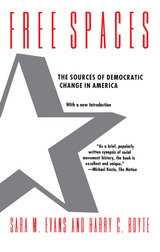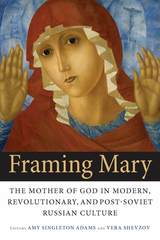 Framing Mary: The Mother of God in Modern, Revolutionary, and Post-Soviet Russian Culture
Edited by Amy Singleton Adams and Vera Shevzov
Northern Illinois University Press, 2018 Despite the continued fascination with the Virgin Mary in modern and contemporary times, very little of the resulting scholarship on this topic extends to Russia. Russia’s Mary, however, who is virtually unknown in the West, has long played a formative role in Russian society and culture. Framing Mary introduces readers to the cultural life of Mary from the seventeenth century to the post-Soviet era. It examines a broad spectrum of engagements among a variety of people—pilgrims and poets, clergy and laity, politicians and political activists—and the woman they knew as the Bogoroditsa.
In this collection of well-integrated and illuminating essays, leading scholars of imperial, Soviet, and post-Soviet Russia trace Mary’s irrepressible pull and inexhaustible promise from multiple disciplinary perspectives. Focusing in particular on the ways in which both visual and narrative images of Mary frame perceptions of Russian and Soviet space and inform discourse about women and motherhood, these essays explore Mary’s rich and complex role in Russia’s religion, philosophy, history, politics, literature, and art. Framing Mary will appeal to Russian studies scholars, historians, and general readers interested in religion and Russian culture.
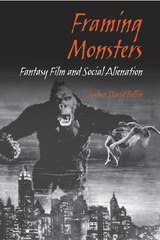 Framing Monsters: Fantasy Film and Social Alienation
Joshua David Bellin
Southern Illinois University Press, 2005 The canon of popular cinema has long been rife with fantastic tales, yet critical studies have too often expediently mixed the fantasy genre with its kindred science fiction and horror films or dismissed it altogether as escapist fare. Framing Monsters: Fantasy Film and Social Alienation reconsiders the cultural significance of this storytelling mode by investigating how films seemingly divorced from reality and presented in a context of timelessness are, in fact, encoded with the social practices and beliefs of their era of production.
Situating representative fantasy films within their cultural moments, Joshua David Bellin illustrates how fantastic visions of monstrous others seek to propagate negative stereotypes of despised groups and support invidious hierarchies of social control. In constructing such an argument, Framing Monsters not only contests dismissive attitudes toward fantasy but also challenges the psychoanalytic criticism that has thus far dominated its limited critical study.
Beginning with celebrated classics, Bellin locates King Kong (1933) within the era of lynching to evince how the film protects whiteness against supposed aggressions of a black predator and reviews The Wizard of Oz (1939) as a product of the Depression’s economic anxieties. From there, the study moves to the cult classic animated Sinbad Trilogy (1958–1977) of Ray Harryhausen, films rampant with xenophobic fears of the Middle East as relevant today as when the series was originally produced.
Advancing to more recent subjects, Bellin focuses on the image of the monstrous woman and the threat of reproductive freedom found in Aliens (1986), Jurassic Park (1993), and Species (1995) and on depictions of the mentally ill as dangerous deviants in 12 Monkeys (1996) and The Cell (2000). An investigation into physical freakishness guides his approach to Edward Scissorhands (1990) and Beauty and the Beast (1991). He concludes with a discussion of X-Men (2000) and Lord of the Rings (2001–2003), commercial giants that extend a recent trend toward critical self-reflection within the genre while still participating in the continuity of social alienation.
Written to enhance rather than undermine our understanding of fantastic cinema, Framing Monsters invites filmmakers, critics, and fans alike to reassess this tremendously popular and influential film type and the monsters that populate it.
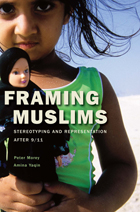 Framing Muslims: Stereotyping and Representation after 9/11
Peter Morey and Amina Yaqin
Harvard University Press, 2011 Can Muslims ever fully be citizens of the West? Can the values of Islam ever be brought into accord with the individual freedoms central to the civic identity of Western nations? Not if you believe what you see on TV. Whether the bearded fanatic, the veiled, oppressed female, or the shadowy terrorist plotting our destruction, crude stereotypes permeate public representations of Muslims in the United States and western Europe. But these "Muslims" are caricatures—distorted abstractions, wrought in the most garish colors, that serve to reduce the diversity and complexity of the Muslim world to a set of fixed objects suitable for sound bites and not much else.
In Framing Muslims: Stereotyping and Representation after 9/11, Peter Morey and Amina Yaqin dissect the ways in which stereotypes depicting Muslims as an inherently problematic presence in the West are constructed, deployed, and circulated in the public imagination, producing an immense gulf between representation and a considerably more complex reality. Crucially, they show that these stereotypes are not solely the province of crude-minded demagogues and their tabloid megaphones, but multiply as well from the lips of supposedly progressive elites, even those who presume to speak "from within," on Muslims' behalf. Based on nuanced analyses of cultural representations in both the United States and the UK, the authors draw our attention to a circulation of stereotypes about Muslims that sometimes globalizes local biases and, at other times, brings national differences into sharper relief.
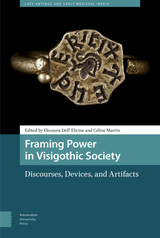 Framing Power in Visigothic Society: Discourses, Devices, and Artifacts
Eleonora Dell' Elicine
Amsterdam University Press, 2020 This volume examines how power was framed in Visigothic society and how a diverse population with a complex and often conflicting cultural inheritance was thereby held together as a single kingdom. Indeed, through this dynamic process a new, early medieval society emerged. Understanding this transformation is no simple matter, as it involved the deployment of an array of political and cultural resources: the production of knowledge, the appropriation of Patristic literature, controlling and administering rural populations, reconceptualizing the sacred, capital punishment and exile, controlling the manufacture of currency, and defining Visigothic society in relation to other polities such as the neighbouring Byzantine state. In order to achieve an analysis of these different phenomena, this volume brings together researchers from a variety of disciplines. This interdisciplinary approach therefore expands the available sources and reformulates topics of traditional scholarship in order to engage with a renewal of Visigothic Studies and reformulate the paradigm of study itself. As a result, this volume rethinks frameworks of power in the Peninsula along not only historical and archaeological but also anthropological terms, presenting the reader with a new understanding of Iberian society as a whole.
Framing Premodern Desires: Sexual Ideas, Attitudes, and Practices in Europe
Edited by Satu Lidman, Tom Linkinen, and Marjo Kaartinen
Amsterdam University Press, 2017 The way that we have perceived, described, and understood sexual desire has changed dramatically over time and across cultures. This collection brings together a group of experts from a variety of disciplines to explore the history of sexual desires and the transformation of sexual ideas, attitudes, and practices in premodern Europe. Among the topics considered are the visibility of sexual offenses and the construction of passions; the geographical range extends to Great Britain, with extended attention also to France as well as Northern and Eastern Europe. The result is a groundbreaking volume that adds significantly to our understanding of premodern European history, history of sexualities, gender studies, religious history, and many other fields.
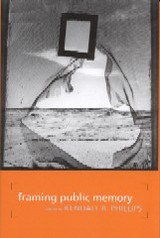 Framing Public Memory
Edited by Kendall R. Phillips
University of Alabama Press, 2007 A collection of essays by prominent scholars from many disciplines on the construction of public memories The study of public memory has grown rapidly across numerous disciplines in recent years, among them American studies, history, philosophy, sociology, architecture, and communications. As scholars probe acts of collective remembrance, they have shed light on the cultural processes of memory. Essays contained in this volume address issues such as the scope of public memory, the ways we forget, the relationship between politics and memory, and the material practices of memory. Stephen Browne’s contribution studies the alternative to memory erasure, silence, and forgetting as posited by Hannah Arendt in her classic Eichmann in Jerusalem. Rosa Eberly writes about the Texas tower shootings of 1966, memories of which have been minimized by local officials. Charles Morris examines public reactions to Larry Kramer’s declaration that Abraham Lincoln was homosexual, horrifying the guardians of Lincoln’s public memory. And Barbie Zelizer considers the impact on public memory of visual images, specifically still photographs of individuals about to perish (e.g., people falling from the World Trade Center) and the sense of communal loss they manifest. Whether addressing the transitory and mutable nature of collective memories over time or the ways various groups maintain, engender, or resist those memories, this work constitutes a major contribution to our understanding of how public memory has been and might continue to be framed.
Framing Questions, Constructing Answers: Linking Research with Education Policy for Developing Countries
Noel F. McGinn and Allison M. Borden
Harvard University Press, 1995 This workbook is an innovative example of an interactive expert system that simulates the relationship between an education policy maker and an informed consultant. A key lesson in this book shows that these issues are affected by several interrelated and complex factors policy makers must consider when implementing changes to their educational systems. All aspects of basic education systems are covered: finance, teachers, assessment, curriculum, material, buildings, and administration.
Framing Shakespeare on Film: How the Frame Reveals Meaning
Kathy M. Howlett
Ohio University Press, 2000 The aesthetics of frame theory form the basis of Framing Shakespeare on Film. This groundbreaking work expands on the discussion of film constructivists in its claim that the spectacle of Shakespeare on film is a problem-solving activity. Kathy Howlett demonstrates convincingly how viewers’ expectations for understanding Shakespeare on film can be manipulated by the director’s cinematic technique. Emphasizing that the successful film can transform Shakespeare’s text while remaining rooted in Shakespearean conceptions, Howlett raises the question of how directors and audiences understand the genre of Shakespeare on film and reveals how the medium alters the patterns through which the audience views Shakespeare.
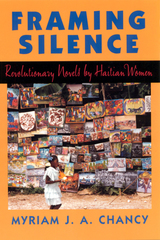 Framing Silence: Revolutionary Novels by Haitian Women
Chancy, Myriam J
Rutgers University Press, 1992 Raped and colonized, coerced and silenced--this has been the position of Haitian women within their own society, as well as how they have been seen by foreign occupiers. Romanticized symbols of nationhood, they have served, however unwillingly, as a politicized site of contestation between opposing forces. In this first book-length study in English devoted exclusively to Haitian women's literature, Myriam Chancy finds that Haitian women have their own history, traditions, and stories to tell, tales that they are unwilling to suppress or subordinate to narratives of national autonomy. Issues of race, class, color, caste, nationality, and sexuality are all central to their fiction--as is an urgent sense of the historical place of women between the two U.S. occupations of the country. Their novels interrogate women's social and political stance in Haiti from an explicitly female point of view, forcefully responding to overt sexual and political violence within the nation's ambivalent political climate. Through daring and sensitive readings, simultaneously historical, fictional and autobiographical, Chancy explores this literature, seeking to uncover answers to the current crisis facing these women today, both within their country and in exile.The writers surveyed include Anne-christine d'Adesky, Ghislaine Rey Charlier, Marie Chauvet, Jan J. Dominique, Nadine Magloire, and Edwidge Danticat, whose work has recently achieved such high acclaim.
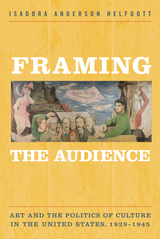 Framing the Audience: Art and the Politics of Culture in the United States, 1929-1945
Isadora Helfgott
Temple University Press, 2015 Framing the Audience explores the cultural politics of the Great Depression and World War II through the prism of art appreciation. Isadora Helfgott interrogates the ideological and political motivations for breaking down barriers between fine art and popular culture. She charts the impact that changes in art appreciation had on the broader political, social, cultural, and artistic landscape. Framing the Audience argues that efforts to expand the social basis of art became intertwined with—and helped shape—broader debates about national identity and the future of American political economy. Helfgott chronicles artists’ efforts toinfluence the conditions of artistic production and display. She highlights the influence of the Federal Art Project, the impact of the Museum of Modern Art as an institutional home for modernism in America and as an organizer of traveling exhibitions, and the efforts by LIFE and Fortune magazines to integrate art education into their visual record of modern life. In doing so, Helfgott makes critical observations about the changing relationship between art and the American public.
Framing the Black Panthers: The Spectacular Rise of a Black Power Icon
Jane Rhodes
University of Illinois Press, 2017 A potent symbol of black power and radical inspiration, the Black Panthers still evoke strong emotions. This edition of Jane Rhodes's acclaimed study examines the extraordinary staying power of the Black Panthers in the American imagination. Probing the group's longtime relationship to the media, Rhodes traces how the Panthers articulated their message through symbols and tactics the mass media could not resist. By exploiting press coverage through everything from posters to public appearances to photo ops, the Panthers created a linguistic and symbolic universe as salient today as during the group's heyday. They also pioneered a sophisticated version of mass media activism that powers contemporary African American protest. Featuring a timely new preface by the author, Framing the Black Panthers is a breakthrough reconsideration of a fascinating phenomenon.
 Framing the Holocaust
Edited by Valerie Hébert
University of Wisconsin Press, 2023 In December 1941, German police and their local collaborators shot 2,749 Jews at the beach in Šķēde, near Liepāja, Latvia. Twelve photographs were taken at the scene. These now-infamous images show people in extreme distress, sometimes without clothing. Some capture the very moments when women and children confronted their imminent deaths, while others show their dead bodies. They are nearly unbearable to look at—so why should we? Framing the Holocaust offers a multidimensional response to this question.
While photographs are central to our memory of modern historical events, they often inhabit an ambivalent intellectual space. What separates the sincere desire to understand from voyeuristic curiosity? Comprehending atrocity photographs requires viewers to place themselves in the very positions of the perpetrators who took the images. When we engage with these photographs, do we risk replicating the original violence? In this tightly organized book, scholars of history, photography, language, gender, photojournalism, and pedagogy examine the images of the Šķēde atrocity along with other difficult images, giving historical, political, and ethical depth to the acts of looking and interpreting.
With a foreword by Edward Anders, who narrowly escaped the December 1941 shooting, Framing the Holocaust represents an original approach to an iconic series of Holocaust photographs. This book will contribute to compelling debates in the emerging field of visual history, including the challenges and responsibilities of using photographs to teach about atrocity.
 Framing the Past: The Historiograpy of German Cinema and Television
Edited by Bruce A. Murray and Christopher J. Wickham
Southern Illinois University Press, 1992 This collection of essays was selected from those presented in October 1988 at a conference sponsored by the National Endowment for the Humanities, "Concepts of History in German Cinema." The contributors include notable historians, film scholars, and German studies specialists who explore the complex network of social, political, and religious institutions that have influenced the historiography of German cinema and television. Before the turn of the century, Germans began to employ the medium of film to represent the past when they attempted to document their Prussian heritage. Since then, German cinema and television have promoted history as a component of personal, cultural, and national identity by consistently providing prominent treatment of historical subjects. Although it is relatively easy to document changes in the selection and handling of these subjects, it is more difficult to determine precisely which factors have motivated those changes. In attempting to define these factors, the link between German cinema, television, and history has developed around three interrelated issues: (1) the reception of Weimar cinema, which for most film scholars continues to be mediated to one extent or another by Siegfried Kracauer’s work; (2) the inscribing of fascism in cinema and television; and (3) the nature of, and potential for, alternatives to mainstream cinema and television.
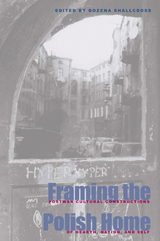 Framing the Polish Home: Postwar Cultural Constructions of Hearth, Nation, and Self
Bozena Shallcross
Ohio University Press, 2002 As the subject of ideological, aesthetic, and existential manipulations, the Polish home and its representation is an ever-changing phenomenon that absorbs new tendencies and, at the same time, retains its centrality to Polish literature, whether written in Poland or abroad. Framing the Polish Home is a pioneering work that explores the idea of home as fundamental to the question of cultural and national identity within Poland's recent history and its tradition.
In this inaugural volume of the Polish and Polish-American Studies Series, the Polish home emerges in its rich verbal and visual representations and multiple material embodiments, as the discussion moves from the loss of the home during wartime to the Sovietized politics of housing and from the exilic strategies of having a home to the the idyllic evocation of the abodes of the past.
Although, as Bożena Shallcross notes in her introduction, “few concepts seem to have such universal appeal as the notion of the home,” this area of study is still seriously underdeveloped. In essays from sixteen scholars, Framing the Polish Home takes a significant step to correct that oversight, covering a broad range of issues pertinent to the discourse on the home and demonstrating the complexity of the home in Polish literature and culture.
Framing the Problem: Causes and Consequences of a Shrinking Great Salt Lake
Kevin D. Perry
University of Utah Press, 2024 The Great Salt Lake ecosystem is on the verge of collapse due to unsustainably large water diversions, the ongoing megadrought, and climate change. Plummeting lake levels will result in a cascade of tremendous economic, ecological, and human health problems if no action is taken. One consequence of particular concern to the public is the potential for exposure to arsenic-laden dust emanating from the exposed portions of the Great Salt Lake lakebed. Framing the Problem explores how climate change has affected the lake, the consequences of low lake levels, and potential strategies for saving this ecological oasis.
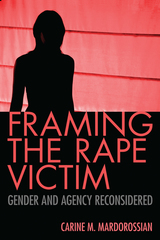 Framing the Rape Victim: Gender and Agency Reconsidered
Mardorossian, Carine M
Rutgers University Press, 2014 Winner of the 2016 Nonfiction Category from The Authors' Zone
In recent years, members of legal, law enforcement, media and academic circles have portrayed rape as a special kind of crime distinct from other forms of violence. In Framing the Rape Victim, Carine M. Mardorossian argues that this differential treatment of rape has exacerbated the ghettoizing of sexual violence along gendered lines and has repeatedly led to women’s being accused of triggering, if not causing, rape through immodest behavior, comportment, passivity, or weakness.
Contesting the notion that rape is the result of deviant behaviors of victims or perpetrators, Mardorossian argues that rape saturates our culture and defines masculinity’s relation to femininity, both of which are structural positions rather than biologically derived ones. Using diverse examples throughout, Mardorossian draws from Hollywood film and popular culture to contemporary women’s fiction and hospitalized birth emphasizing that the position of dominant masculinity can be occupied by men, women, or institutions, while structural femininity is a position that may define and subordinate men, minorities, and other marginalized groups just as effectively as it does women. Highlighting the legacies of the politically correct debates of the 1990s and the terrorist attacks of 9/11, the book illustrates how the framing of the term “victim” has played a fundamental role in constructing notions of agency that valorize autonomy and support exclusionary, especially masculine, models of American selfhood.
The gendering of rape, including by well-meaning, sometimes feminist, voices that claim to have victims’ best interests at heart, ultimately obscures its true role in our culture. Both a critical analysis and a call to action, Framing the Rape Victim shows that rape is not a special interest issue that pertains just to women but a pervasive one that affects our society as a whole.
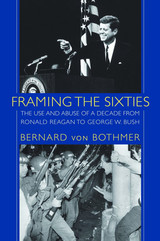 Framing the Sixties: The Use and Abuse of a Decade from Ronald Reagan to George W. Bush
Bernard von Bothmer
University of Massachusetts Press, 2010 Over the past quarter century, American liberals and conservatives alike have invoked memories of the 1960s to define their respective ideological positions and to influence voters. Liberals recall the positive associations of what might be called the "good Sixties"—the "Camelot" years of JFK, the early civil rights movement, and the dreams of the Great Society—while conservatives conjure images of the "bad Sixties"—a time of urban riots, antiwar protests, and countercultural revolt.
In Framing the Sixties, Bernard von Bothmer examines this battle over the collective memory of the decade primarily through the lens of presidential politics. He shows how four presidents—Ronald Reagan, George H. W. Bush, Bill Clinton, and George W. Bush—each sought to advance his political agenda by consciously shaping public understanding of the meaning of "the Sixties." He compares not only the way that each depicted the decade as a whole, but also their commentary on a set of specific topics: the presidency of John F. Kennedy, Lyndon Johnson's "Great Society" initiatives, the civil rights movement, and the Vietnam War.
In addition to analyzing the pronouncements of the presidents themselves, von Bothmer draws on interviews he conducted with more than one hundred and twenty cabinet members, speechwriters, advisers, strategists, historians, journalists, and activists from across the political spectrum—from Julian Bond, Daniel Ellsberg, Todd Gitlin, and Arthur Schlesinger to James Baker, Robert Bork, Phyllis Schlafly, and Paul Weyrich.
It is no secret that the upheavals of the 1960s opened fissures within American society that have continued to affect the nation's politics and to intensify its so-called culture wars. What this book documents is the extent to which political leaders, left and right, consciously exploited those divisions by "framing" the memory of that turbulent decade to serve their own partisan interests.
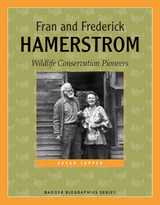 Fran and Frederick Hamerstrom: Wildlife Conservation Pioneers
Susan Tupper
Wisconsin Historical Society Press, 2016 Learn how Fran and Frederick Hamerstrom worked to save the greater prairie chicken from extinction in the Wisconsin Historical Society Press’s new book for young readers, "Fran and Frederick Hamerstrom: Wildlife Conservation Pioneers." Fran and Frederick grew up in New England, and married in 1935. They both loved nature and wanted to dedicate their lives to understanding and preserving wildlife. As students of the famous naturalist, Aldo Leopold, they learned about new ways for humans to think about saving land for animals. Fran was a brave, outgoing woman who cared more about interacting with animals than wearing pretty dresses. Frederick was a calm, thoughtful man who loved to study and conduct research. Together, they spent over thirty years mentoring many future scientists, and working to save the greater prairie chicken, and other animals, from extinction. "Fran and Frederick Hamerstrom: Wildlife Conservation Pioneers" is the newest addition to the Society Press’s Badger Biographies Series.
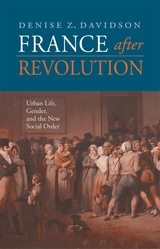 France after Revolution: Urban Life, Gender, and the New Social Order
Denise Z. Davidson
Harvard University Press, 2007 The decades following the French Revolution saw unprecedented political and social experimentation. As the Napoleonic and Restoration regimes attempted to build a stable order, ordinary city dwellers began to create their own sense of how society operated through everyday activities. Interactions between men and women--in theaters, cafes, and other public settings--helped to fashion new social norms.
In this extensively researched work, Denise Z. Davidson offers a powerful reevaluation of the effects of the French Revolution, especially on women. Arguing against the view that the Revolution forced women from the public realm of informed political discussion, Davidson demonstrates that women remained highly visible in urban public life. Women of all classes moved out of the domestic sphere to participate in the spectacle of city life, inviting frequent commentary on their behavior. This began to change only in the 1820s, when economic and social developments intensified class distinctions and made the bourgeoisie fear the "dangerous classes."
This book provides an important corrective to prevailing views on the ramifications of the French Revolution, while shedding light on how ordinary people understood, shaped, and contested the social transformations taking place around them.
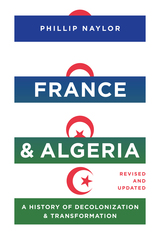 France and Algeria: A History of Decolonization and Transformation
Phillip Naylor
University of Texas Press, 2024 An examination of the complicated history between France and Algeria since the latter’s independence.
While most related studies concentrate on the colonial era and Algeria's War of Independence, France and Algeria details the nations' postcolonial relationship. Phillip Naylor provides a philosophical approach, contending that France reformulated, rather than repudiated, “essential” strategic values during decolonization. It thus continued to pursue grandeur and independence, especially with regard to the Third World and Algeria, an essentialism that expedited France’s postcolonial transformation. But as a new nation, Algeria needed to pursue the “existential” project of self-definition. It became involved in state-building while also promulgating socialism, and it recognized how French oil concessions in the Sahara impeded its independence, leading to the industry's postcolonial decolonization. Finally, the postcolonial relationship has featured a human dimension involving immigrants, pieds-noirs (colonial settlers), and harkis (Algerian soldiers loyal to France), all of them central to bilateral relations. In this revised and updated edition of his seminal work, first published over twenty years ago, Naylor expands his coverage of the decolonization era, drawing on new information while continuing to study the ever-evolving relationship between the two countries. These new additions expose the continually shifting relations of power, perception, and identity between the two states.
 France and her Eastern Allies, 1919-1925: French-Czechoslovak-Polish Relations from the Paris Peace Conference in Locarno
Piotr S. Wandycz
University of Minnesota Press, 1962
France and her Eastern Allies, 1919–1925 was first published in 1962. Minnesota Archive Editions uses digital technology to make long-unavailable books once again accessible, and are published unaltered from the original University of Minnesota Press editions.
Relations between France, Czechoslovakia, and Poland occupied an important position in European diplomacy in the years between World War I and World War II. Beginning with the breakdown of the old political, social, and economic order on the Continent during the first World War, these relations went through many changes. This book deals with the crucial period from the Paris Peace Conference of 1919 to the signing of the Locarno Pact in 1925. During this time France attempted to establish an eastern barrier of buffer states with Poland and Czechoslovakia at the core, with the aim of keeping Germany and Bolshevik Russia apart. This, France hoped, would guarantee European peace and security. Although an effective eastern barrier was never realized, the attempt to create one was a worthy and important undertaking.
Professor Wandycz considers in detail the various aspects of the complex relationship between France and the two western Slav states — geographic, economic, social, and political. In addition, he provides a clear and interesting picture of some of the personalities involved. Through the use of hitherto unpublished source material, he throws new light on many events of general European diplomatic history as well as on Polish, French, and Czechoslovak foreign policy in particular.
France at the Polls, 1981 and 1986
Howard R. Penniman, ed.
Duke University Press, 1988 At the Polls is a series of national election studies prepared by the American Enterprise Institute for Public Policy and Research. Books in the series include volumes on some thirty national democratic elections around the world. Distinguished foreign and American scholars have contributed to the studies.
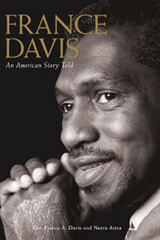 France Davis: An American Story Told
Davis, France
University of Utah Press, 2007 As I was coming up, it was painful to me not to have been given my own nickname. It made me feel different, or rather that I was being treated differently from other family members. I wondered why everybody else was spoken to in terms of their identity, their character, their behavior, and I was simply identified by the 'tag,' my given name. But then, when I read in a book that France meant free, I began to think of it as imbuing me with a sense of flight, of movement. Ultimately, I came to believe my name spoke for itself and that I did not need any other.'—from the book Imbued with rich detail of family life in a rural community, as well as a system of values at a time of transition in American history, this is the life story of France Davis, the dynamic pastor of the Calvary Baptist Church in Salt Lake City. It is an engaging story of courage and vision that describes coming of age in the segregation-era South, of dreaming, enduring with honor, and living at the forefront of major issues within the United States. Recorded and skillfully written by Nayra Atiya, France Davis: An American Story Told, is an oral history, ethnography, memoir, perhaps even a life-enhancing sermon delivered with the strong voice of a preacher. The gathered strands of a life lived with conviction and grace will appeal to a broad spectrum of readers from the curious to those seeking inspiration.
Winner of the Utah Book Award in Nonfiction.
 France, Fin de Siècle
Eugen Weber
Harvard University Press, 1986 The end of the nineteenth century in France was marked by political scandals, social unrest, dissension, and “decadence.” Yet the fin de siècle was also an era of great social and scientific progress, a time when advantages previously reserved for the privileged began to be shared by the many. Public transportation, electrical illumination, standard time, and an improved water supply radically altered the life of the modest folk, who found time for travel and leisure activities—including sports such as cycling. Change became the nature of things, and people believed that further improvement was not only possible but inevitable.
In this thoroughly engaging history, Eugen Weber describes ways of life, not as recorded by general history, but as contemporaries experienced them. He writes about political atmosphere and public prejudices rather than standard political history. Water and washing, bicycles and public transportation engage him more than great scientific discoveries. He discusses academic painting and poster art, the popular stage and music halls, at greater length than avant-garde and classic theater or opera. In this book the importance of telephones, plumbing, and central heating outranks such traditional subjects as international developments, the rise of organized labor, and the spread of socialism.
Weber does not neglect the darker side of the fin de siècle. The discrepancy between material advance and spiritual dejection, characteristic of our own times, interests him as much as the idea of progress, and he reminds us that for most people the period was far from elegant. In the lurid context of military defeat, political instability, public scandal, and clamorous social criticism, one had also to contend with civic dirt, unsanitary food, mob violence, and the seeds of modern-day scourges: pollution, drugs, sensationalism, debased art, the erosion of moral character. Yet millions of fin de siècle French lived as only thousands had lived fifty years before; while their advance was slow, their right to improvement was conceded.
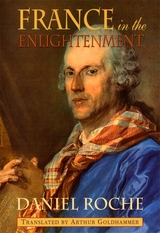 France in the Enlightenment
Daniel Roche
Harvard University Press, 1998 A panorama of a whole civilization, a world on the verge of cataclysm, unfolds in this magisterial work by the foremost historian of eighteenth-century France. Since Tocqueville’s account of the Old Regime, historians have struggled to understand the social, cultural, and political intricacies of this efflorescence of French society before the Revolution. France in the Enlightenment is a brilliant addition to this historical interest.
France in the Enlightenment brings the Old Regime to life by showing how its institutions operated and how they were understood by the people who worked within them. Daniel Roche begins with a map of space and time, depicting France as a mosaic of overlapping geographical units, with people and goods traversing it to the rhythms of everyday life. He fills this frame with the patterns of rural life, urban culture, and government institutions. Here as never before we see the eighteenth-century French “culture of appearances”: the organization of social life, the diffusion of ideas, the accoutrements of ordinary people in the folkways of ordinary living—their food and clothing, living quarters, reading material. Roche shows us the eighteenth-century France of the peasant, the merchant, the noble, the King, from Paris to the provinces, from the public space to the private home.
By placing politics and material culture at the heart of historical change, Roche captures the complexity and depth of the Enlightenment. From the finest detail to the widest view, from the isolated event to the sweeping trend, his masterly book offers an unparalleled picture of a society in motion, flush with the transformation that will be its own demise.
 France on Trial: The Case of Marshal Pétain
Julian Jackson
Harvard University Press, 2023 A Telegraph, Spectator, Prospect, and Times Best Book of the Year
“This is a story not just about Pétain but about war and resistance, the moral compromises of leadership, and the meaning of France itself.”―Margaret MacMillan
“This is a finely tuned history…Those who enjoy tales of the sparring among excellent lawyers arguing an important case will find this book riveting. And for those who want to understand contemporary France and its intricate politics, France on Trial provides…a vibrant analysis of a trial and verdict that remain contentious almost eight decades later.”—Ronald C. Rosbottom, Wall Street Journal
“Shows Jackson at his best—precise in detail, vivid in imagery, alert to irony, firm in judgment—and carefully disentangles the questions surrounding the Vichy regime that continue to vex French society.” —Robert O. Paxton, Harper’s
In the terrible month of October 1940, few things were more shocking than the sight of Marshal Philippe Pétain—supremely decorated hero of the First World War, now head of the French government—shaking hands with Hitler. Pétain announced that France would henceforth collaborate with Germany. “This is my policy,” he intoned. “My ministers are responsible to me. It is I alone who will be judged by History.”
Five years later, Pétain was put on trial for his conduct during the war. He stood accused of treason, charged with heading a conspiracy to destroy France’s democratic government and collaborating with Nazi Germany.
Award-winning author Julian Jackson uses Pétain’s three-week trial as a lens through which to examine one of history’s great moral dilemmas. Was the policy of collaboration “four years to erase from our history,” as the prosecution claimed? Or was it, as conservative politicians insist to this day, a sacrifice that placed pragmatism above moral purity? As head of the Vichy regime, Pétain became the lightning rod for collective guilt and retribution. But he has also been an icon of the nationalist right ever since. In France on Trial, Jackson blends courtroom drama, political intrigue, and brilliant narrative history to highlight the hard choices and moral compromises leaders make in times of war.
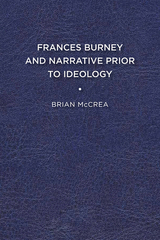 Frances Burney and Narrative Prior to Ideology
Brian McCrea
University of Delaware Press, 2014 Frances Burney and Narrative Prior to Ideology works between Burney’s Journals and Letters and her fiction more thoroughly than any study of her in the past twenty-five years. By doing so, it offers significant reinterpretations of Burney’s four novels: Evelina, Cecilia, Camilla, and The Wanderer. It describes Burney’s eluding the major modern–isms through which critics have tried to read her: Feminism (with its “gendering” of beauty and reversal of gender roles); Capitalism and its Marxist critique (here the details of Burney’s housekeeping become important); Professionalism (as a response to status inconsistency and class conflict); and Ian Watt’s “Formal Realism” (Burney perhaps saved the novel from a sharp decline it suffered in the 1770s, even as she tried to distance herself from the genre). Burney’s most successful writing appeared before the coining of “ideology.” But her standing “prior to ideology” is not a matter of chronological accident. Rather, she quietly but forcefully resisted shared explanations—domesticity as model for household management, debt as basis for family finance, professional status as a means to social confidence, the novel as the dominant literary genre—that became popular during her long and eventful life. Frederic Jameson has described Paul de Man, “in private conversation,” claiming, “Marxism . . . has no way of understanding the eighteenth century.” Frances Burney and Narrative Prior to Ideology conjoins Burney’s “eighteenth-centuryness” with her modernity. Published by University of Delaware Press. Distributed worldwide by Rutgers University Press.
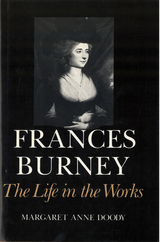 Frances Burney: The Life in the Works
Doody, Margaret A
Rutgers University Press, 1988 Treating Frances Burney (1752-1840) with the seriousness usually reserved for later novelists of the nineteenth and twentieth centuries, Margaret Anne Doody combines biographical narrative with informed literary criticism as she analyzes not only Burney's published novels, but her plays, fragments of novels, poems, and other works never published. Doody also draws upon a mine of letters and diaries for detailed and sometimes surprising biographical information. Burney's feelings and emotions forcefully emerge in her sophisticated and complex late novels, Camilla and The Wanderer. Her novels all relate to personal experience; as an artist she is attracted to the violent, the grotesque, and the macabre. She is a powerful comic writer, but her comedy is far from reflecting a shallow cheerfulness. Bringing a novelist's perspective to her material, in this 1989 book Doody shows an appreciation of the many dimensions of a predecessor's writings and she tells her story with force and conviction.
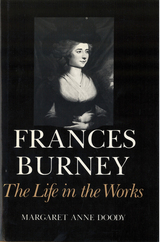 Frances Burney: The Life in the Works
Doody, Margaret A
Rutgers University Press, 1988 Treating Frances Burney (1752-1840) with the seriousness usually reserved for later novelists of the nineteenth and twentieth centuries, Margaret Anne Doody combines biographical narrative with informed literary criticism as she analyzes not only Burney's published novels, but her plays, fragments of novels, poems, and other works never published. Doody also draws upon a mine of letters and diaries for detailed and sometimes surprising biographical information. Burney's feelings and emotions forcefully emerge in her sophisticated and complex late novels, Camilla and The Wanderer. Her novels all relate to personal experience; as an artist she is attracted to the violent, the grotesque, and the macabre. She is a powerful comic writer, but her comedy is far from reflecting a shallow cheerfulness. Bringing a novelist's perspective to her material, in this 1989 book Doody shows an appreciation of the many dimensions of a predecessor's writings and she tells her story with force and conviction.
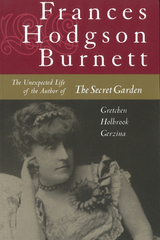 Frances Hodgson Burnett: The Unexpected Life of the Author of the Secret Garden
Gerzina, Gretchen H
Rutgers University Press, 2006 Hugely successful in her own time for adult novels and plays, Frances Hodgson Burnett (1849-1924) would be astounded to find out she is remembered for a handful of books for children, but most of all for the enormously popular Secret Garden. This fascinating biography-the first to have the full cooperation of Burnett's descendants and relatives-examines her life with lively intelligence, sensitivity, and fascinating new, never-before-published material. Burnett's life was full of those reversals of fortune that mark her work. Following modest beginnings in mid-Victorian Manchester, she arrived in post-Civil War Tennessee at the age of fifteen with her widowed mother and two sisters. Burnett was the breadwinner of the family from the age of seventeen, eventually publishing a total of fifty-two books and writing and producing thirteen plays. She made and spent a fortune in her lifetime, was generous and profligate, yet anxious about money and obsessively hardworking. Constantly restless and inventive, Burnett's personal life was as complex as her professional one. Her first marriage to a southern doctor disintegrated as a result of her notorious flirtations and a scandalous affair, and her subsequent marriage to an English doctor turned actor suffered a similar fate. She understood the intensity and loneliness of the thoughtful child, but was herself a largely absent mother of two sons-overwhelmed by guilt when tragedy struck one of them; the other one never got over being the model for Little Lord Fauntleroy. A woman of contrasts and paradoxes, this quintessentially British writer was equally at home in the United States, which honored her with a memorial in Central Park. Frances Hodgson Burnett reinvented for herself and for generations to come in both countries the magic and the mystery of the childhood she never had.
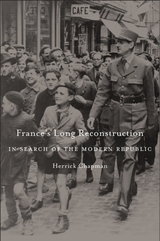 France’s Long Reconstruction: In Search of the Modern Republic
Herrick Chapman
Harvard University Press, 2018 At the end of World War II, France’s greatest challenge was to repair a civil society torn asunder by Nazi occupation and total war. Recovery required the nation’s complete economic and social transformation. But just what form this “new France” should take remained the burning question at the heart of French political combat until the Algerian War ended, over a decade later. Herrick Chapman charts the course of France’s long reconstruction from 1944 to 1962, offering fresh insights into the ways the expansion of state power, intended to spearhead recovery, produced fierce controversies at home and unintended consequences abroad in France’s crumbling empire.
Abetted after Liberation by a new elite of technocratic experts, the burgeoning French state infiltrated areas of economic and social life traditionally free from government intervention. Politicians and intellectuals wrestled with how to reconcile state-directed modernization with the need to renew democratic participation and bolster civil society after years spent under the Nazi and Vichy yokes. But rather than resolving the tension, the conflict between top-down technocrats and grassroots democrats became institutionalized as a way of framing the problems facing Charles de Gaulle’s Fifth Republic.
Uniquely among European countries, France pursued domestic recovery while simultaneously fighting full-scale colonial wars. France’s Long Reconstruction shows how the Algerian War led to the further consolidation of state authority and cemented repressive immigration policies that now appear shortsighted and counterproductive.
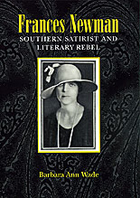 Frances Newman: Southern Satirist and Literary Rebel
Barbara Ann Wade
University of Alabama Press, 1998 This first biographical and literary assessment of Frances Newman highlights one of the most experimental writers of the Southern Renaissance
Novelist, translator, critic, and acerbic book reviewer Frances Newman (1883–1928) was praised by Virginia novelist James Branch Cabell and critic H. L. Mencken. Her experimental novels The Hard-Boiled Virgin (1926) and Dead Lovers Are Faithful Lovers (1928), have recently begun to receive serious critical attention, but this is the first book-length study to focus both on Newman’s life and on her fiction. Frances Newman was born into a prominent Atlanta family and was educated at private schools in the South and the Northeast. Her first novel, The Hard-Boiled Virgin, was hailed by James Branch Cabell as “the most brilliant, the most candid, the most civilized, and the most profound yet written by any American woman.” Cabell and H. L. Mencken became Newman’s literary mentors and loyally supported her satire of southern culture, which revealed the racism, class prejudice, and religious intolerance that reinforced the idealized image of the white southern lady. Writing within a nearly forgotten feminist tradition of southern women’s fiction, Newman portrayed the widely acclaimed social change in the early part of the century in the South as superficial rather than substantial, with its continued restrictive roles for women in courtship and marriage and limited educational and career opportunities. Barbara Wade explores Newman’s place in the feminist literary tradition by comparing her novels with those of her contemporaries Ellen Glasgow, Mary Johnston, and Isa Glenn. Wade draws from Newman’s personal correspondence and newspaper articles to reveal a vibrant, independent woman who simultaneously defied and was influenced by the traditional southern society she satirized in her writing.
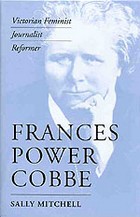 Frances Power Cobbe: Victorian Feminist, Journalist, Reformer
Sally Mitchell
University of Virginia Press, 2004 Frances Power Cobbe (1822-1904) is the most important nineteenth-century British writer and activist not heretofore treated in a full-length biography. An independent professional woman, she worked to improve conditions for delinquent girls and for the sick poor, promoted university degrees for women, roused support for the Union during the American Civil War, advocated for victims of marital violence, campaigned for women's suffrage, and engaged in a long-running battle with leading physicians decrying the use of animals in medical experiments. She was centrally located among the circle of London intellectuals who engaged the era's significant debates and was a respected religious and moral thinker as well. Bridging the gap between "high" and "low" journalism, she published in prestigious journals as well as in popular monthly magazines. At long last, Sally Mitchell gives this remarkable woman her due.
The only source of information about Cobbe's life has been her 1894 autobiography--and even that is considered by many scholars to be less than forthcoming. Over the past several years, Mitchell has unearthed extensive material by or related to Cobbe, dramatically increasing and updating the information now available about this major figure in social and literary history. She has transcribed hundreds of Cobbe's unpublished letters, drawn on archival papers and records for information about Cobbe's family and places where she lived and worked, and supplemented all the newly available material with instructive selections from Cobbe's anonymous journalism as well as other publications. Further, through the cooperation of Cobbe's heirs, Mitchell has been able to use significant materials that remain in private hands, including family letters and account books, a diary Cobbe's father kept during her first thirty-four years, a manuscript account of her 1858 journey to Egypt and Palestine, and a number of Cobbe's sketchbooks and photograph albums.
An accessible narrative biography, Frances Power Cobbe traces the details of Cobbe's life and work, analyzes her writing, and sets both in the context of the social and intellectual debates of her time.
--------------------------------------------------------------------------------
Sally Mitchell, Professor of Women's Studies at Temple University, is the author of Daily Life in Victorian England and the Choice award-winning The New Girl: Girls' Culture in England, 1880-1915, among other works.
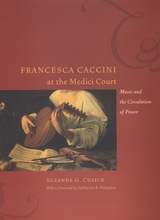 Francesca Caccini at the Medici Court: Music and the Circulation of Power
Suzanne G. Cusick
University of Chicago Press, 2009 A contemporary of Shakespeare and Monteverdi, and a colleague of Galileo and Artemisia Gentileschi at the Medici court, Francesca Caccini was a dominant musical figure there for thirty years. Dazzling listeners with the transformative power of her performances and the sparkling wit of the music she composed for more than a dozen court theatricals, Caccini is best remembered today as the first woman to have composed opera. Francesca Caccini at the Medici Court reveals for the first time how this multitalented composer established a fully professional musical career at a time when virtually no other women were able to achieve comparable success.
Suzanne G. Cusick argues that Caccini’s career depended on the usefulness of her talents to the political agenda of Grand Duchess Christine de Lorraine, Tuscany’s de facto regent from 1606 to 1636. Drawing on Classical and feminist theory, Cusick shows how the music Caccini made for the Medici court sustained the culture that enabled Christine’s power, thereby also supporting the sexual and political aims of its women.
In bringing Caccini’s surprising story so vividly to life, Cusick ultimately illuminates how music making functioned in early modern Italy as a significant medium for the circulation of power.
 Francesco Ignazio Lazzari’s Discrizione della villa pliniana: Visions of Antiquity in the Landscape of Umbria
Anatole Tchikine
Harvard University Press A cultivated patrician, a prolific playwright, and a passionate student of local antiquity, Francesco Ignazio Lazzari (1634–1717) was a mainstay of the artistic and intellectual life of Città di Castello, an Umbrian city that maintained a remarkable degree of cultural autonomy during the early modern period. He was also the first author to identify the correct location of the lost villa “in Tuscis” owned by the Roman writer and statesman Pliny the Younger and known through his celebrated description. Lazzari’s reconstruction of this ancient estate, in the form of a large-scale drawing and a textual commentary, adds a unique document to the history of Italian gardens while offering a fascinating perspective on the role of landscape in shaping his native region’s identity.
Published with an English translation for the first time since its creation, this manuscript is framed by the scholarly contributions of Anatole Tchikine and Pierre de la Ruffinière du Prey. At the core of their discussion is the interplay of two distinct ideas of antiquity—one embedded in the regional landscape and garden culture of Umbria and the other conveyed by the international tradition of Plinian architectural reconstructions—that provide the essential context for understanding Lazzari’s work.
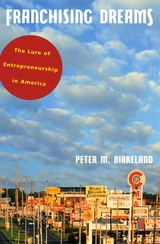 Franchising Dreams: The Lure of Entrepreneurship in America
Peter M. Birkeland
University of Chicago Press, 2002 McDonald's. Blockbuster Video. Jiffy Lube. Subway. Franchising has become an ever-present feature of the American landscape. One-third of the U.S. gross domestic product flows through franchises, and one out of every sixteen workers is employed by one. But how did franchising come to play such a dominant role in the American economy? What are the day-to-day experiences of franchisees and franchisers in the workplace? What challenges and pitfalls await them as they stake their claim to prosperity? These are just a few of the questions explored in Franchising Dreams, a documentary-like look into the frustrations and uncertainties that entrepreneurs face in their pursuit of the American dream.
Peter M. Birkeland worked for three years in the front-line operations of franchise units for three companies, met with CEOs and executives, and attended countless trade shows, seminars, and expositions. All this firsthand experience gave him unprecedented access to the hopes and aspirations of franchisees. His book closely traces different franchisees and follows them as their dreams of wealth and independence buckle beneath the weight of frustrating logistics and contractual technicalities. Through extensive interviews and research, Birkeland not only discovers what makes franchisees succeed or fail, he uncovers the difficulties in running a business according to someone else's system and values. Bearing witness to a market flooded with fierce competitors and dependent on the inscrutable whims of consumers, he uncovers the numerous challenges that franchisees face in making their businesses succeed.
 Francis Bacon and the Loss of Self
Ernst Van Alphen
Harvard University Press Since his death in April 12 Francis Bacon has been acclaimed as one of the very greatest of modern painters. Yet most analyses of Bacon actually neutralize his work by discussing it as an existential expression and as the horrifying communication of an isolated individual—which simply transfers the pain in the paintings back to Bacon himself. This study is the first attempt to account for the pain of the viewer.
It is also, most challengingly, an explanation of what Bacon’s art tells us about ourselves as individuals. For, during this very personal investigation, the author comes to realize that the effect of Bacon’s work is founded upon the way that each of us carves our identity, our “self,” from the inchoate evidence of our senses, using the conventions of representation as tools. It is in his warping of these conventions of the senses, rather than in the superficial distortion of his images, that Bacon most radically confronts “art,” and ourselves as individuals.
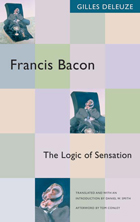 Francis Bacon: The Logic of Sensation
Gilles Deleuze
University of Minnesota Press, 2005 Translated and with an Introduction by Daniel W. Smith
Afterword by Tom Conley
Gilles Deleuze had several paintings by Francis Bacon hanging in his Paris apartment, and the painter’s method and style as well as his motifs of seriality, difference, and repetition influenced Deleuze’s work. This first English translation shows us one of the most original and important French philosophers of the twentieth century in intimate confrontation with one of that century’s most original and important painters.
In considering Bacon, Deleuze offers implicit and explicit insights into the origins and development of his own philosophical and aesthetic ideas, ideas that represent a turning point in his intellectual trajectory. First published in French in 1981, Francis Bacon has come to be recognized as one of Deleuze’s most significant texts in aesthetics. Anticipating his work on cinema, the baroque, and literary criticism, the book can be read not only as a study of Bacon’s paintings but also as a crucial text within Deleuze’s broader philosophy of art.
In it, Deleuze creates a series of philosophical concepts, each of which relates to a particular aspect of Bacon’s paintings but at the same time finds a place in the “general logic of sensation.” Illuminating Bacon’s paintings, the nonrational logic of sensation, and the act of painting itself, this work—presented in lucid and nuanced translation—also points beyond painting toward connections with other arts such as music, cinema, and literature. Francis Bacon is an indispensable entry point into the conceptual proliferation of Deleuze’s philosophy as a whole.
Gilles Deleuze (1925–1995) was professor of philosophy at the University of Paris, Vincennes–St. Denis. He coauthored Anti-Oedipus and A Thousand Plateaus with Félix Guattari. These works, as well as Cinema 1, Cinema 2, The Fold, Proust and Signs, and others, are published in English by Minnesota.
Daniel W. Smith teaches in the Department of Philosophy at Purdue University.
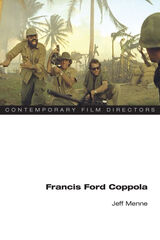 Francis Ford Coppola
Jeff Menne
University of Illinois Press, 2014 Acclaimed as one of the most influential and innovative American directors, Francis Ford Coppola is also lionized as a maverick auteur at war with Hollywood's power structure and an ardent critic of the postindustrial corporate America it reflects.
However, Jeff Menne argues that Coppola exemplifies the new breed of creative corporate person and sees the director's oeuvre as vital for reimagining the corporation in the transformation of Hollywood.
Reading auteur theory as the new American business theory, Menne reveals how Coppola's vision of a new kind of company has transformed the worker into a liberated and well-utilized artist, but has also commodified individual creativity at a level unprecedented in corporate history. Coppola negotiated the contradictory roles of shrewd businessman and creative artist by recognizing the two roles are fused in a postindustrial economy.
Analyzing films like The Godfather (1970) and the overlooked Tucker: The Man and His Dream (1988) through Coppola's use of opera, Menne illustrates how Coppola developed a defining musical aesthetic while making films that reflected the idea of a corporation as family--and how his studio American Zoetrope came to represent a new brand of auteurism and the model for post-Fordist Hollywood.
Francis Parkman
Howard Doughty
Harvard University Press, 1983 Best known as author of The Oregon Trail, Francis Parkman is now increasingly recognized as one of the greatest nineteenth–century American historians. In Pontiac, Pioneers, La Salle and Montcalm and Wolfe, Parkman, more than anyone else, first grasped the tragic element implicit in our pioneer heritage and placed the opening up of the great North American wilderness in broad historical perspective.
Handsome, brilliant, courageous, Parkman drove himself relentlessly. The result was a severe breakdown in his twenties, complicated in later years by other illnesses. This interpretative biography chronicles his triumph over these setbacks and sheds new light on the impressive histories that seem to become ever more contemporary with the passage of time.
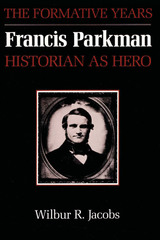 Francis Parkman, Historian as Hero: The Formative Years
By Wilbur R. Jacobs
University of Texas Press, 1991 A historian who lived the kind of history he wrote, Francis Parkman is a major—and controversial—figure in American historiography. His narrative style, while popular with readers wanting a "good story," has raised many questions with professional historians. Was Parkman writing history or historical fiction? Did he color historical figures with his own heroic self-image? Was his objectivity compromised by his "unbending, conservative, Brahmin" values? These are some of the many issues that Wilbur Jacobs treats in this thought-provoking study. Jacobs carefully considers the "apprenticeship" of Francis Parkman, first spent in facing the rigors of the Oregon Trail and later in struggling to write his histories despite a mysterious, frequently incapacitating illness. He shows how these events allowed Parkman to create a heroic self-image, which impelled his desire for fame as a historian and influenced his treatment of both the "noble" and the "savage" characters of his histories. In addition to assessing the influence of Parkman's development and personality on his histories, Jacobs comments on Parkman's relationship to basic social and cultural issues of the nineteenth century. These include the slavery question, Native American issues, expansion of the suffrage to new groups, including women, and anti-Catholicism.
Francis Warrington Dawson and the Politics of Restoration: South Carolina, 1874-1889
E. Culpepper Clark
University of Alabama Press, 1980 "This is a book that anyone interested in South Carolina history, the emergence of the New South, and the southern press, so important to the regional culture, will find valuable. Clark has researched all the important manuscript collections and a wide variety of other sources. He also writes in a style that is lucid and imaginative." —Journal of Southern History
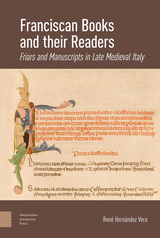 Franciscan Books and their Readers: Friars and Manuscripts in Late Medieval Italy
René Hernández
Amsterdam University Press, 2022 Franciscan Books and their Readers explores the manuscripts written, read and studied by Franciscan friars from the thirteenth to the fifteenth centuries in northern Italy, and specifically Padua, assessing four key aspects: ideal, space, form and readership. The ideal is studied through the regulations that determined what manuscripts should aim for. Space refers to the development and role of Franciscan libraries. The form is revealed by the assessment of the physical configuration of a set of representative manuscripts read, written and manufactured by the friars. Finally, the study of the readership shows how Franciscans were skilled readers who employed certain forms of the manuscript as a portable, personal library and as a tool for learning and pastoral care. By comparing the book collections of Padua’s reformed and unreformed medieval Franciscan libraries for the first time, this study reveals new features of the ground-breaking cultural agency of medieval friars.
 Franciscan Notes
Alan Williamson
Tupelo Press, 2019 The book begins with deaths: chiefly the poet’s mother’s, but also those of cherished mentors and friends. Poems explore living beyond those deaths and approaching old age, and then do some traveling. Williamson takes a pilgrimage to Japan and India, inspired by his practice of Zen meditation, and placed under the aegis of a saying from the great Rinzai Zen monastery at Daitoku-ji: “If you cannot endure this moment, what can you endure?” A theme then becomes enduring the public moment, with all its griefs and opportunities for growth. The reader is then transported with the poet to Italy. In 2000, Williamson began visiting Tuscany regularly, and eventually became a property owner there. The poems set in Italy dwell on an encounter with old culture, and its potential to encourage both resignation and mysticism, with moods that persist from the tutelary geniuses of two great Italian poets: the nihilistic Leopardi and the tentatively mystical Montale. Gathering around those experiences multiple lore from music, philosophy and science, it becomes an extended meditation on mental suffering, glimpses of the ecstatic, and the double nature of our life, “skull / and beatific face,” with “the immortal recombinants of fire and water.”
The Franciscan Order in the Medieval English Province and Beyond
Edited by Michael Robson and Patrick Zutshi
Amsterdam University Press, 2018 Commemorating John Moorman's immense contribution to Franciscan history across five decades, the essays in this collection reflect upon Moorman's diverse writings on biography, hagiography, history, art, and prosopography. Contributors draw upon Moorman's diaries and his materials for a biographical register of the Franciscans in medieval England. The volume is in tune with recent developments in Franciscan history in general, with a special interest in the English province. This is exemplified by studies on Franciscan iconography; the English province's impact of the wider order; the scholastic enterprise; prosopography; economy; sermons; the application of Canon Law to the debates at the papal court; and the evolution of John Moorman's studies on St Francis and his followers.
 Francisco De Miranda: Exile and Enlightenment
Edited by John Maher
University of London Press, 2006 Francisco de Miranda (1750-1816) was a monumental figure in the independence of Venezuela and Latin America. His physical and intellectual odyssey as an exile pursued by Spanish authorities made him the most significant proponent of Spanish-American independence in revolutionary America and Europe at the turn of the nineteenth century. This book considers Miranda as traveler (in the Americas and Europe), soldier (as a Spanish officer and later general in the French revolutionary army), intellectual (as connoisseur and creator of a great private library), and romantic figure (gentleman and lover). The authors reveal how these facets of Miranda's life shaped his constant struggle for Spanish-American independence. Contributors include David Bushnell (professor emeritus, University of Florida, USA), John Lynch (professor emeritus, University of London, UK), Edgardo Mondolfi Gudat (Universidad Metropolitana,Venezuela), Malcolm Deas (St.Antony's College, Oxford University, UK), and Karen Racine (University of Guelph, Canada).
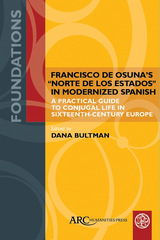 Francisco de Osuna’s "Norte de los estados" in Modernized Spanish: A Practical Guide to Conjugal Life in Sixteenth-Century Europe
Dana Bultman
Arc Humanities Press, 2019 Best known for his works on the mystical practice of meditative recollection, Franciscan friar Francisco de Osuna published his candid manual for lay life, Norte de los estados (North Star) in 1531 before leaving Spain to reside in Antwerp. True to its title, the book was intended as a North Star that would dependably guide readers through the stages of youth, marriage, and widowhood. Although the historical literature on these themes is dominated by the works of his humanist contemporaries, Erasmus of Rotterdam and Juan Luis Vives, Osuna’s close attention to women’s experiences and his critical awareness of social class are distinctive. This first modern edition in Spanish restores Osuna’s reformist voice and expansive vision to the animated conversations on marriage and family in which he engaged. His detailed attention to practical questions and his intense spiritualization of spousal love make it an invaluable resource for understanding conjugal relationships in the popular imagination of the early modern world.
 Francisco de Paula Brito: A Black Publisher in Imperial Brazil
Rodrigo Camargo de Godoi
Vanderbilt University Press, 2020 Francisco de Paula Brito is a biography of a merchant, printer, bookseller, and publisher who lived in Rio de Janeiro from his birth in 1809 until his death in 1861. That period was key to the history of Brazil, because it coincided with the relocation of the Portuguese Court from Lisbon to Rio de Janeiro (1808); the dawning of Brazilian Independence (1822) and the formation of the nation-state; the development of the press and of Brazilian literature; the expansion and elimination of the trans-Atlantic slave trade; and the growth of Rio de Janeiro’s population and the coffee economy. Nevertheless, although it covers five generations of Paula Brito’s family—men and women who left slavery in the eighteenth century—this book focuses on its protagonist’s activities between the 1830s and 1850s.
During that period, Francisco de Paula Brito became one of the central figures in the cultural and political scene in the Imperial capital, particularly through his work as a publisher. Paula Brito’s success was due in part to his ability to forge solid alliances with the Empire’s ruling elite—among them leading politicians responsible for the unification of the vast Brazilian territory and for the maintenance of slavery and the illegal trafficking of Africans. Consequently, through the books and newspapers he published, Francisco de Paula Brito became part of a much larger project.
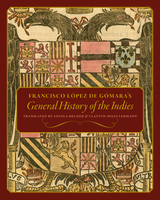 Francisco López de Gómara's General History of the Indies
Ángela Helmer
University Press of Colorado, 2023 This work is the first English translation of the entire text of part one of sixteenth-century Spanish historian Francisco López de Gómara’s General History of the Indies. Including substantial critical annotations and providing access to various readings and passages added to or removed from the successive editions of the 1550s, this translation expands the archive of texts available to English speakers reconsidering the various aspects of the European invasion of America.
General History of the Indies was the first universal history of the recent discoveries and conquests of the New World made available to the Old World audience. At publication it consisted of two parts: the first a general history of the European discovery, conquest, and settlement of the Americas, and the second a detailed description of Cortés’s conquest of Mexico. Part one—in the multiple Spanish editions and translations into Italian and French published at the time—was the most comprehensive, popular, and accessible account of the natural history and geography of the Americas, the ethnology of the peoples of the New World, and the history of the Spanish conquest, including the most recent developments in Peru. Despite its original and continued importance, however, it had never been translated into English.
Gómara’s history communicates Europeans’ general understanding of the New World throughout the middle and later sixteenth century. A lively, comparatively brief description of Europe’s expansion into the Americas with significant importance to today’s understanding of the early modern worldview, Francisco López de Gómara’s General History of the Indies will be of great interest to students of and specialists in Latin American history, Latin American literature, anthropology, and cultural studies, as well as specialists in Spanish American intellectual history and colonial Latin America.
Francisco Ribalta and His School
Delphine Fitz Darby
Harvard University Press Knowledge of the aims and accomplishment of Ribalta is essential to a better understanding of Velasquez and Murillo. The lack of a good monograph on his work is rather surprising in view of the fact that he has for three centuries maintained high rank among Spanish painters and stands today in deserved esteem in Spain. In preparing this volume, Delphine Darby has seen every attributed painting known to exist and has, wherever possible, made accurate measurements. This thorough familiarity with her subject, together with the mass of new facts and the large number of photographs she has assembled, will give her work an outstanding position in the literature of Spanish painting.
The Francklyn Land & Cattle Company: A Panhandle Enterprise, 1882-1957
By Lester Fields Sheffy
University of Texas Press, 1963 An intensive study of a large Texas ranch, particularly of its business and financial aspects, in which the author has utilized many company records and firsthand accounts by the men who were engaged in the difficult task of establishing and maintaining a major cattle and land operation in wild, relatively isolated, semidesert country.
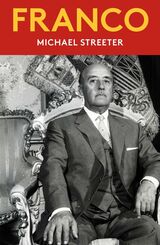 Franco
Michael Streeter
Haus Publishing, 2025 A narrative of the life of Francisco Franco, Spanish general and dictator.
Growing up in the wake of the Spanish military’s shattering defeat at the hands of the United States in 1898 over Cuba and having survived a bullet to the stomach while serving his country in Morocco, Francisco Franco’s fame and notoriety were eventually guaranteed by his ruthless pursuit of victory for the Nationalists in the Spanish Civil War.
Franco played a major role on the world stage until his death in 1975. At once intensely sentimental and affecting cool indifference at times of bad news, he emphasized the need to obey orders, the importance of individual bravery, absolute loyalty to the Fatherland, and the crucial role of the army. Franco was variously courted by the liberal democracies of Britain and France, the Fascist alliance of Hitler and Mussolini, and then by anti-communist administrations in Washington, but the memory of his successful policies, leading to rapid growth during a time of economic depression, is tempered by his government’s extreme repression of political opponents and perpetration of mass violence during the White Terror.
In Franco, Michael Streeter explores the Generalissimo’s legacy as the subject of a cult of personality in one of Europe’s longest-lasting modern dictatorships and considers his genesis, his successes (decades of relative stability and prosperity during a period of great European conflict), and the terrible cost at which they came.
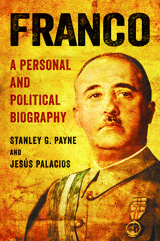 Franco: A Personal and Political Biography
Stanley G. Payne and Jesús Palacios
University of Wisconsin Press, 2018 General Francisco Franco ruled Spain for nearly forty years, as one of the most powerful and controversial leaders in that nation's long history. He has been the subject of many biographies, several of them more than a thousand pages in length, but all the preceding works have tended toward one extreme of interpretation or the other. This is the first comprehensive scholarly biography of Franco in English that is objective and balanced in its coverage, treating all three major aspects of his life—personal, military, and political. The coauthors, both renowned historians of Spain, present a deeply researched account that has made extensive use of the Franco Archive (long inaccessible to historians). They have also conducted in-depth interviews with his only daughter to explain better his family background, personal life, and marital environment, as well as his military and political career.
Franco: A Personal and Political Biography depicts his early life, explains his career and rise to prominence as an army officer who became Europe's youngest interwar brigadier general in 1926, and then discusses his role in the affairs of the troubled Second Spanish Republic (1931–36). Stanley G. Payne and Jesús Palacios examine in detail how Franco became dictator and how his leadership led to victory in the Spanish Civil War that consolidated his regime. They also explore Franco's role in the great repression that accompanied the Civil War—resulting in tens of thousands of executions—and examine at length his controversial role in World War II. This masterful biography highlights Franco's metamorphoses and adaptations to retain power as politics, culture, and economics shifted in the four decades of his dictatorship.
Best Books for General Audiences, selected by the American Association of School Librarians
Best Books for General Audiences, selected by the Public Library Reviewers
“An important book, destined to elicit a heated academic debate surrounding the man who ruled Spain for forty years and whose figure still casts a long shadow four decades after his death.”—Journal of Modern History
The Franco Regime, 1936–1975
Stanley G. Payne
University of Wisconsin Press, 2011 The history of modern Spain is dominated by the figure of Francisco Franco, who presided over one of the longest authoritarian regimes of the twentieth century. Between 1936 and the end of the regime in 1975, Franco’s Spain passed through several distinct phases of political, institutional, and economic development, moving from the original semi-fascist regime of 1936–45 to become the Catholic corporatist “organic democracy” under the monarchy from 1945 to 1957. Distinguished historian Stanley G. Payne offers deep insight into the career of this complex and formidable figure and the enormous changes that shaped Spanish history during his regime.
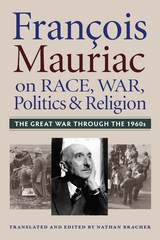 Francois Mauriac on Race, War, Politics and Religion
Nathan Bracher
Catholic University of America Press, 2016 Nathan Bracher's François Mauriac on Race, War, Politics, and Religion: The Great War Through the 1960s consists of a selection of some ninety editorials penned by the Catholic novelist and intellectual François Mauriac, who received the Nobel Prize for literature and who was admitted to the Académie Française in 1933. As is often the case for prominent writers and intellectuals in France, Mauriac became active in political punditry early in his career, at the time of the First World War. Intensifying notably in the tumultuous years of the 1930s on, this activity continues to expand over the next five decades. After 1952, Mauriac's editorials came to represent the most important dimension of his intellectual activity. He was, to cite the prominent journalist and intellectual Jean Daniel of Le Nouvel Observateur, Frances most distinguished and formidable editorialist of the twentieth century.
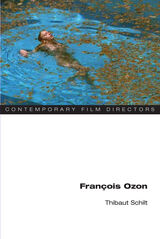 Francois Ozon
Thibaut Schilt
University of Illinois Press, 2011 In just over a decade, François Ozon has earned an international reputation as a successful and provocative filmmaker. A student of Eric Rohmer and Jean Douchet at the prestigious Fémis, Ozon made a number of critically acclaimed shorts in the 1990s and released his first feature film Sitcom in 1998. Two additional shorts and eleven feature films have followed, including international successes 8 femmes and Swimming Pool and more recent releases such as Angel, Ricky, and Le refuge. Ozon's originality lies in his filmmaking style, which draws on familiar cinematic traditions (the crime thriller, the musical, the psychological drama, the comedy, the period piece) but simultaneously mixes these recognizable genres and renders them unfamiliar. Despite tremendous diversity in cinematic choices, Ozon's oeuvre is surprisingly consistent in its desire to blur the traditional frontiers between the masculine and the feminine, gay and straight, reality and fantasy, auteur and commercial cinema. Thibaut Schilt provides an overview of François Ozon's career to date, highlighting the director's unrestrained, voracious cinephilia, his recurrent collaborations with women screenwriters and actresses, and the trademarks of his cinema including music, dance, and the clothes that accompany these now typically Ozonian episodes. Schilt contextualizes Ozon's filmmaking within the larger fields of French filmmaking and international queer cinema, and he discusses several major themes running through Ozon's work, including obsessions with inadequate fathers, various types of mourning, and a recurring taste for "the foreign." The volume also includes an insightful interview with the director.
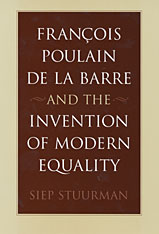 François Poulain de la Barre and the Invention of Modern Equality
Siep Stuurman
Harvard University Press, 2004 In a tour de force of intellectual history, Siep Stuurman rediscovers the remarkable early Enlightenment figure François Poulain de la Barre. A dropout from theology studies at the Sorbonne, Poulain embraced the philosophy of Descartes, became convinced of the injustice and absurdity of the subjection of women, and assembled an entirely original social philosophy. His writings challenging male supremacy and advocating gender and racial equality are the most radically egalitarian texts to appear in Europe before the French Revolution.
In exploring Poulain's breakthrough, Stuurman sheds new light on the origins of the Enlightenment, the history of feminism, the emergence of rational Christianity, and the social and political implications of Descartes's philosophy. This groundbreaking work, the first comprehensive study of Poulain, brings to life the men and women of the Radical Enlightenment, who pioneered ideas about equality that would shape humankind to this day. Impeccably researched, cogently argued, and lucidly written, this is truly a masterpiece of scholarship.
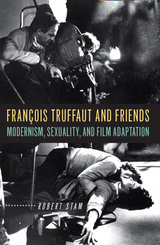 François Truffaut and Friends: Modernism, Sexuality, and Film Adaptation
Stam, Robert
Rutgers University Press, 2006 One of François Truffaut's most poignantly memorable films, Jules and Jim, adapted a novel by the French writer and art collector Henri-Pierre Roch. The characters and events of the 1960s film were based on a real-life romantic triangle, begun in the summer of 1920, which involved Roch himself, the German-Jewish writer Franz Hessel, and his wife, the journalist Helen Grund.
Drawing on this film and others by Truffaut, Robert Stam provides the first in-depth examination of the multifaceted relationship between Truffaut and Roch. In the process, he provides a unique lens through which to understand how adaptation works-from history to novel, and ultimately to film-and how each form of expression is inflected by the period in which it is created. Truffaut's adaptation of Roch's work, Stam suggests, demonstrates how reworkings can be much more than simply copies of their originals; rather, they can become an immensely creative enterprise-a form of writing in itself.
The book also moves beyond Truffaut's film and the mnage--trois involving Roch, Hessel, and Grund to explore the intertwined lives and work of other famous artists and intellectuals, including Marcel Duchamp, Walter Benjamin, and Charlotte Wolff. Tracing the tangled webs that linked these individuals' lives, Stam opens the door to an erotic/writerly territory where the complex interplay of various artistic sensibilities-all mulling over the same nucleus of feelings and events-vividly comes alive.
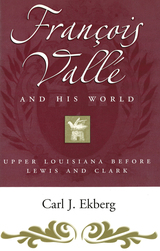 Francois Vallé and His World: Upper Louisiana before Lewis and Clark
Carl J. Ekberg
University of Missouri Press, 2002 Winner of the Kemper & Leila Williams Prize in Louisiana History for excellence in historical scholarship for the year 2002, awarded by The Historic New Orleans Collection, The Louisiana Historical Association. In François Vallé and His World, Carl Ekberg provides a fascinating biography of François Vallé (1716–1783), placing him within the context of his place and time. Vallé, who was born in Beauport, Canada, immigrated to Upper Louisiana (the Illinois Country) as a penniless common laborer sometime during the early 1740s. Engaged in agriculture, lead mining, and the Indian trade, he ultimately became the wealthiest and most powerful individual in Upper Louisiana, although he never learned to read or write.
Ekberg focuses on Upper Louisiana in colonial times, long before Lewis and Clark arrived in the Mississippi River valley and before American sovereignty had reached the eastern bank of the Mississippi. He vividly captures the ambience of life in the eighteenth-century frontier agricultural society that Vallé inhabited, shedding new light on the French and Spanish colonial regimes in Louisiana and on the Mississippi River frontier before the Americans arrived.
Based entirely on primary source documents—wills and testaments, parish registers of baptisms, marriages, and burials, and Spanish administrative correspondence—found in archives ranging from St. Louis and Ste. Genevieve to New Orleans and Seville, François Vallé and His World traces not only the life of François Vallé and the lives of his immediate family members, but also the lives of his slaves. In doing so, it provides a portrait of Missouri’s very first black families, something that has never before been attempted. Ekberg also analyzes how the illiterate Vallé became the richest person in all of Upper Louisiana, and how he rose in the sociopolitical hierarchy to become an important servant of the Spanish monarchy.
François Vallé and His World provides a useful corrective to the fallacious notion that Missouri’s history began with the arrival of Lewis and Clark at the turn of the nineteenth century. Anyone with an interest in colonial history or the history of the Mississippi River valley will find this book of great value.
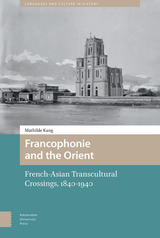 Francophonie and the Orient: French-Asian Transcultural Crossings (1840-1940)
Mathilde Kang
Amsterdam University Press, 2018 Based on transnational France-Asia approaches, this book studies Asian cultures once steeped in French civilisation but free of a colonial mode in order to highlight the transliterary examples of cultural transfer. This book is a pioneering study of the Francophone phenomenon within the context of cultures categorised as non-Francophone. Espousing a transcultural approach, Francophonie and the Orient examines the emergence of French heritage in the Far-East, the various forms of its manifestation, and the modes of its identification. Several thematic signposts guide the diverse pathways of the research. Firstly, the question is posed as to whether colonisation is the ultimate coat of arms for entry into Francophonie? Secondly, the book raises issues relative to Asian Francophone works: the emergence of literatures with French expression from Asian countries historically free of French domination. Finally, the study reconfigures the Asian Francophone heritage with new paradigms (transnational/global studies), which redefine the frontiers of Francophonie in Asia.
Francophonie en Orient: Aux croisements France-Asie (1840-1940)
Mathilde Kang
Amsterdam University Press, 2017 This book offers a pioneering study of Asian cultures that officially escaped from French colonisation but nonetheless were steeped in French civilisation in the colonial era and had heavily French-influenced, largely francophone literatures. It raises a number of provocative questions, including whether colonisation is the ultimate requirement for a culture's being defined as francophone, or how to think about francophone literatures that emerge from Asian nations that were historically free from French domination. The ultimate result is a redefining of the Asian francophone heritage according to new, transnational paradigms.
The Franco-Russian Alliance, 1890-1894
William L. Langer
Harvard University Press This book is a careful monographic study of an important chapter in the diplomatic history of modern Europe. It aims to do what no other work on the subject has done: to study the crucial alliance between Russia and France as a general European question. The author has made extensive use of the great wealth of documentary and other source material which has appeared during the last decade, but has also drawn heavily upon the unpublished diplomatic correspondence in the Vienna archives and upon the contemporary material. He has endeavored throughout to revive the viewpoint of the past and to explain the alliance by a consideration of the peculiar international situation existing at the time of its conclusion.
The Franco-Texan Land Company
By Virginia H. Taylor
University of Texas Press, 1969 The Franco-Texan Land Company was formed, ostensibly, by the French bondholders of the Memphis, El Paso, and Pacific Railroad in an attempt to salvage their investments through sale of lands in the railroad's Texas land grant. Most of the land company's wealth, however, went into the pockets of unscrupulous local managers and directors, and another railroad eventually built a road across Texas along the Memphis, El Paso, and Pacific right of way. Despite their unsavory histories, the land company and its railroad parent played an important part in the development of Northwest Texas. Virginia Taylor's account of their activities furthers the study of the role of land companies in the settlement of the United States and adds interesting sidelights on one of the immigrant groups that left the imprint of Europe on frontier Texas.
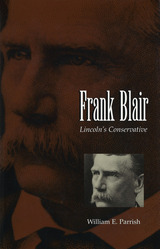 Frank Blair: Lincoln's Conservative
William E. Parrish
University of Missouri Press, 1998
Known for his fearlessness in both the political arena and the battlefield, Frank Blair is a Missouri legend. As a member of one of the most prominent and powerful political families in America during the nineteenth century, possibly the equivalent of the twentieth-century Kennedys, Frank was steeped in politics at an early age. The youngest son of Francis Preston Blair, editor of Andrew Jackson's Washington Globe and adviser to Presidents Andrew Jackson through Andrew Johnson, Frank Blair was greatly influenced by his father, who had high political expectations of him.
Volatile and combative, Blair was either strongly admired or hated by the public figures of his day. He held adamantly to his opinions and fought hard for his political causes. He was an ardent supporter of Abraham Lincoln and championed the president's program in Congress and in Missouri against the frequent assaults of the Radicals. Credited with being the principal leader in saving Missouri for the Union in 1861, Blair later served with great distinction at Vicksburg, Chattanooga, and in the Sherman campaigns throughout Georgia and the Carolinas. He is one of only two Missourians ever honored by his state in Statuary Hall in the U.S. Capitol.
Frank Blair: Lincoln's Conservative reveals the full extent of Blair's importance as a national political figure. Specialists in nineteenth-century America, students of Missouri history, and Civil War buffs will welcome this study, which will long stand as the definitive work on this influential and colorful character.
The Frank C. Brown Collection of NC Folklore: Vol. II: Folk Ballads from North Carolina
Frank C. Brown
Duke University Press Frank C. Brown organized the North Carolina Folklore Society in 1913. Both Dr. Brown and the Society collected stores from individuals—Brown through his classes at Duke University and through his summer expeditions in the North Carolina mountains, and the Society by interviewing its members—and also levied on the previous collections made by friends and members of the Society. The result was a large mass of texts and notes assembled over a period of nearly forty years and covering every aspect of local tradition.
The Frank C. Brown Collection of NC Folklore: Vol. V: The Music of the Folk Songs
Frank C. Brown
Duke University Press, 1970 Frank C. Brown organized the North Carolina Folklore Society in 1913. Both Dr. Brown and the Society collected stores from individuals—Brown through his classes at Duke University and through his summer expeditions in the North Carolina mountains, and the Society by interviewing its members—and also levied on the previous collections made by friends and members of the Society. The result was a large mass of texts and notes assembled over a period of nearly forty years and covering every aspect of local tradition.
The Frank C. Brown Collection of NC Folklore: Vol. VI: Popular Beliefs and Superstitions from North Carolina, pt. 1
Frank C. Brown
Duke University Press Frank C. Brown organized the North Carolina Folklore Society in 1913. Both Dr. Brown and the Society collected stores from individuals—Brown through his classes at Duke University and through his summer expeditions in the North Carolina mountains, and the Society by interviewing its members—and also levied on the previous collections made by friends and members of the Society. The result was a large mass of texts and notes assembled over a period of nearly forty years and covering every aspect of local tradition.
The Frank C. Brown Collection of NC Folklore: Vol. VII: Popular Beliefs and Superstitions from North Carolina, pt. 2
Frank C. Brown
Duke University Press, 1970 Frank C. Brown organized the North Carolina Folklore Society in 1913. Both Dr. Brown and the Society collected stores from individuals—Brown through his classes at Duke University and through his summer expeditions in the North Carolina mountains, and the Society by interviewing its members—and also levied on the previous collections made by friends and members of the Society. The result was a large mass of texts and notes assembled over a period of nearly forty years and covering every aspect of local tradition. members of the Society. The result was a large mass of texts and notes assembled over a period of nearly forty years and covering every aspect of local tradition.
 Frank Capra: Authorship and the Studio System
Robert Sklar
Temple University Press, 1998 Frank Capra's films have had a lasting impact on American culture. His powerful depiction of American values, myths, and ideals was central famous Hollywood films as It Happened One Night, Mr. Smith Goes to Washington, and It's a Wonderful Life. These pre-war films are remembered for their depiction of an individual's overcoming adversity, populist politics, and an unflappable optimist view of life.
This collection of nine essays by leading international film historians analyzes Capra's filmmaking during his most prolific period, from 1928 to 1939, taking a closer look at the more complex aspects of his work. They trace his struggles for autonomy against Columbia Pictures head Harry Cohn, his reputation as an amateur, and the ways in which working within studio modes of production my have enhanced the director's strengths.
The contributors also place their critiques within the context of the changing fortunes of the Hollywood studio system, the impact of the Depression, and Capra's working relationships with other studio staff and directors. The contributors' access to nineteen newly restored Capra films made at Columbia during this period fills this collection with some of the most comprehensive critiques available on the director's early body of work.
 Frank J. Cannon: Saint, Senator, Scoundrel
Val Holley
University of Utah Press, 2020 Utah’s path to statehood was the most tortuous in U.S. history, due in no small part to the Mormon practice of polygamy. Frank J. Cannon, newspaperman, Congressional delegate, and senator, guided Utah toward becoming the forty-fifth state in the Union in 1896. But when he lost favor with the LDS Church, his contributions fell into obscurity. In the 1880s, Congress dealt with the intransigence of the Church of Jesus Christ of Latter-day Saints over polygamy by enacting punitive new laws. Mormon lobbyists who pleaded for relief in Washington came home empty-handed before Cannon finally broke the logjam. He persuaded President Grover Cleveland to appoint judges who would deal mercifully with convicted polygamists and dissuaded Congress from disenfranchising all members by pledging that the church would abandon polygamy. But when Utah elected Mormon apostle Reed Smoot to the U.S. Senate in 1903, Cannon condemned what he called the reneging of LDS Church pledges to stay out of politics. He wrote scathing denunciations of Smoot and Mormon president Joseph F. Smith, co-authored the exposé Under the Prophet in Utah, and spearheaded the National Reform Association’s anti-Mormon crusade. Utah’s subsequent displeasure with Cannon ensured that his critical role in its statehood would be buried by omission.
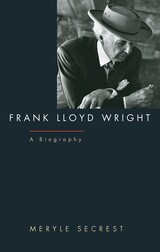 Frank Lloyd Wright: A Biography
Meryle Secrest
University of Chicago Press, 1998 Meryle Secrest's Frank Lloyd Wright: A Biography focuses on Wright's family history, personal adventures, and colorful friends and family. Secrest had unprecedented access to an archive of over one hundred thousand of Wright's letters, photographs, drawings, and books. She also interviewed surviving devotees, students, and relatives. The result is an explicit portrait of both the genius architect and the provocative con-man.
"Secrest seizes the themes most evocative of certain of our cultural myths, forging them into a coherent and emotionally plausible narrative."—New Republic
"An engaging narrative."—New York Times Book Review
"The real triumph of this biography . . . is the link it makes between Frank Lloyd Wright's personal life and his architecture."—The Economist
"Secrest's achievement is to etch Wright's character in sharp relief. . . . [She] presents Wright in his every guise."-Blair Kamin, Chicago Tribune
"An extremely engaging profile."—The Philadelphia Inquirer
"A spellbinding portrait."—Library Journal
"The best [biography] so far, a huge and definitive accumulation of fact."—Time
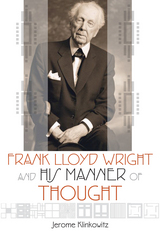 Frank Lloyd Wright and His Manner of Thought
Jerome Klinkowitz
University of Wisconsin Press, 2014 An iconic figure in American culture, Frank Lloyd Wright is famous throughout the world. Although his achievements in architecture are stunning, it is his importance in cultural history, Jerome Klinkowitz contends, that makes Wright the object of such avid and continuing interest. Designing more than just buildings, Wright offered a concept for living that still influences how people conduct their lives today. Wright's innovations in architecture have been widely studied, but this is the most comprehensive and sustained treatment of his thought.
Klinkowitz presents a critical biography driven by the architect's own work and intellectual growth, focusing on the evolution of Wright's thinking and writings from his first public addresses in 1894 to his last essay in 1959. Did Wright reject all of Victorian thinking about the home, or do his attentions to a minister's sermon on "the house beautiful" deserve closer attention? Was Wright echoing the Transcendentalism of Ralph Waldo Emerson, or was he more in step with the philosophy of William James? Did he reject the Arts and Crafts movement, or repurpose its beliefs and practices for new times? And, what can be said of his deep dissatisfaction with architectural concepts of his own era, the dominant modernism that became the International Style? Even the strongest advocates of Frank Lloyd Wright have been puzzled by his objections to so much that characterized the twentieth century, from ideas for building to styles of living.
In Frank Lloyd Wright and His Manner of Thought, Klinkowitz, a widely published authority on twentieth-century literature, thought, and culture, examines the full extent of Wright's books, essays, and lectures to show how he emerged from the nineteenth century to anticipate the twenty-first.
Outstanding Book, selected by the American Association of School Librarians
Best Books for General Audiences, selected by the Public Library Reviewers
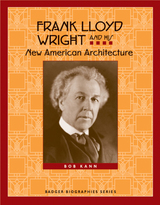 Frank Lloyd Wright and His New American Architecture
Bob Kann
Wisconsin Historical Society Press, 2010
From boyhood adventures to the creation of visionary buildings like the Guggenheim Museum, Frank Lloyd Wright and His New American Architecture chronicles the vibrant life of one of the world's most famous architects.
Wright's love of architecture was nurtured early on-from paintings of European cathedrals hung in his childhood room; to "Froebel Gifts" building blocks, which he crafted into crude structures; to long walks near the Wisconsin River, where his mother pointed out patterns and colors in nature. Wright also learned, from summers spent on his uncle's Spring Green farm, that adversity is part of life. And perhaps this helped him weather a life beset with both tragedy and triumph.
Wright's prolific career spanned more than 70 years, and he created more than 1,100 designs. Author Bob Kann brings readers into the eccentric stories behind some of Wright's landmark buildings. Find out about Wright's Oak Park home, known to locals as "the house with a tree growing through it;" the Robie House, which is shaped like a battleship; and Fallingwater, which is built on a waterfall. Learn how Wright successfully built the Imperial Hotel in Tokyo to withstand earthquakes, and how the Johnson Wax Building and Guggenheim Museum set new standards in institutional architecture.
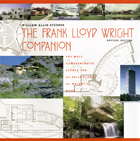 The Frank Lloyd Wright Companion, Revised Edition
William Allin Storrer
University of Chicago Press, 2006 The comprehensive source for as-built plans of Wright's work
Published to critical acclaim more than a decade ago, The Frank Lloyd Wright Companion brought together in one volume all the essential descriptions, photographs, and plans of everything built by America's most famous architect. Now, for this handsomely produced revised edition, William Allin Storrer brings the history of every Wright structure up to the present.
Storrer treats the full range of Wright's architecture—from vacation cottages in Montana and Michigan, to such monuments of modernism as the Johnson Wax Building and the Guggenheim Museum, to buildings completed after Wright’s death in 1959. Since the first edition, some of Wright’s buildings have been relocated, some have been refurbished, and, sadly, some have even been destroyed by Hurricane Katrina. Storrer documents these changes and includes new information about the extent of Wright’s work on the buildings, the contributions of his associates, and the details of his business arrangements. Wright aficionados will be especially pleased to find comprehensive coverage of the newly discovered Mitchell residence in Racine, Wisconsin.
Organized chronologically, The Frank Lloyd Wright Companion features a description of each building that details the history of its design, construction, and ownership. Floor plans allow readers intimate access to each of Wright’s built works. With nearly 1,000 photographs (many new to this edition), elevations, historical images, and floor plans that show changes in Wright’s preliminary plans, this reference is unmatched in its authority. The indispensable centerpiece of any Wright collection, the newly revised Companion is a must for any serious library of art and architecture.
Frank Lloyd Wright's Boulter House: The Cincinnati Story
Vanessa Misoon
University of Cincinnati Press, 2023 As the official resource of ABS, Issues in Race & Society is a double-blind, peer-reviewed academic journal. The biannual journal distinguishes itself as an interdisciplinary, comprehensive, and global examination of the increasingly racial and racialized world that connects us all. It provides a space where all voices can be heard and diverse conversations can occur about the relationship and interconnections between race, power, privilege, and location operating across cultures and societies.
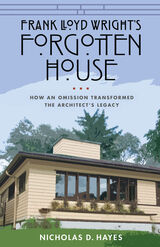 Frank Lloyd Wright's Forgotten House: How an Omission Transformed the Architect's Legacy
Nicholas D. Hayes
University of Wisconsin Press, 2021 While the grandiosity of Fallingwater and elegance of Taliesin are recognized universally, Frank Lloyd Wright’s first foray into affordable housing is frequently overlooked. Although Wright began work on his American System-Built Homes (ASBH, 1911–17) with great energy, the project fell apart following wartime shortages and disputes between the architect and his developer. While continuing to advocate for the design of affordable small homes, Wright never spoke publicly of ASBH. As a result, the heritage of many Wright-designed homes was forgotten.
When Nicholas and Angela Hayes became stewards of the unassuming Elizabeth Murphy House near Milwaukee, they began to unearth evidence that ultimately revealed a one-hundred-year-old fiasco fueled by competing ambitions and conflicting visions of America. The couple’s forensic pursuit of the truth untangled the ways Wright’s ASBH experiment led to the architect’s most productive, creative period. Frank Lloyd Wright’s Forgotten House includes a wealth of drawings and photographs, many of which have never been previously published. Historians, architecture buffs, and Wrightophiles alike will be fascinated by this untold history that fills a crucial gap in the architect’s oeuvre.
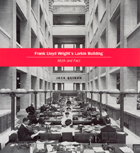 Frank Lloyd Wright's Larkin Building: Myth and Fact
Jack Quinan
University of Chicago Press, 2006 Frank Lloyd Wright’s Larkin Building has become an icon of modern architecture. And the fact that it was demolished only forty-six years after its 1904 completion makes Jack Quinan’s study of the building—which housed a Buffalo, New York, soap company—all the more valuable.
Quinan’s history draws on engineering documents, personal accounts of the building, and other papers he acquired from the family of Darwin D. Martin, a Larkin executive who proposed commissioning Wright to design the company’s offices. With access to these rare sources, Quinan reveals how a young Wright landed the commission and traces the evolution of his cutting-edge plans. Quinan then takes Wright studies to a new level, examining the Larkin Building as a structure at the center of economic and personal relationships.
Illustrated with more than one hundred photographs, floor plans, maps, and diagrams, Frank Lloyd Wright’s Larkin Building provides a concise but complete record of how the building was conceived, built, evaluated, and finally demolished in what has been called a tragic loss for American architecture.
Frank Lloyd Wright’s Penwern: A Summer Estate
Mark Hertzberg
Wisconsin Historical Society Press, 2019 Frank Lloyd Wright is best known for his urban and suburban houses. Lesser known are the more than 40 summer “cottages” he designed in Michigan, Wisconsin, and Ontario. Many of the early summer cottages have a rustic feel and are not as easily recognized as Wright’s prolific year-round domestic designs. Among them is a stunning estate on Delavan Lake in southern Wisconsin called Penwern. Commissioned by Chicago capitalist Fred B. Jones around 1900, Penwern has received both national and state recognition. The home’s current stewards have dedicated themselves to restoring the estate to Wright’s vision, ensuring its future. Featuring beautiful color photographs, plus vintage black and white pictures and original Wright drawings, this book transports readers back to the glory days of gracious living and entertaining on the lake.
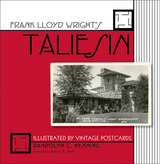 Frank Lloyd Wright’s Taliesin: Illustrated by Vintage Postcards
Randolph C. Henning
University of Wisconsin Press, 2011 The Wisconsin-born Frank Lloyd Wright (1867–1959) is recognized worldwide as an iconic architectural genius. In 1911 he designed Taliesin to use as his personal residence, architectural studio, and working farm. A century later Randolph C. Henning has assembled a splendid collection of rare vintage postcards, some never before published, that provides a revealing and visually unique journey through Wright’s work at Taliesin. Included are intimate images of Taliesin at various stages and views of the building just after the tragic 1914 fire. The postcards also depict nearby buildings designed by Wright, including the Romeo and Juliet windmill and two buildings for the Hillside Home School. Henning provides useful explanations that highlight relevant details and accompany each image. Frank Lloyd Wright’s Taliesin documents and celebrates Wright’s 100-year-old masterpiece.
Finalist, Midwest Book Awards for Cover Design and for Regional Interest Illustrated Book Best Books for General Audiences, selected by the American Association of School Librarians Best Books for General Audiences, selected by the Public Library Reviewers
Frank Lloyd Wright--the Lost Years, 1910-1922: A Study of Influence
Anthony Alofsin
University of Chicago Press, 1993 Frank Lloyd Wright: The Lost Years, 1910-1922 uncovers the real story of Wright's travels in Europe. By examining this elusive and influential period in Wright's development, Alofsin restores an important chapter to the history of modern architecture. Bringing new definition and insight to the story of Frank Lloyd Wright, this book has become a standard work on America's greatest architect.
"Alofsin has set out to explain the impact of European culture on Wright by integrating its artistic influence with the tumultuous events in his private life. . . . [He] succeeds in this ambitious goal."—Kevin Nute, Architects' Journal
"A convincing and well-documented case that these were in fact crucial and fruitful years in Wright's development as an architect. . . . Absorbing."—Catherine Maclay, San Jose Mercury News
"One of the best."—Robert Fulford, Toronto Globe and Mail
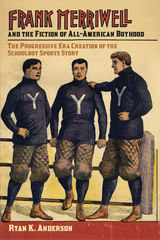 Frank Merriwell and the Fiction of All-American Boyhood: The Progressive Era Creation of the Schoolboy Sports Story
Ryan K. Anderson
University of Arkansas Press, 2015 Gilbert Patten, writing as Burt L. Standish, made a career of generating serialized twenty-thousand-word stories featuring his fictional creation Frank Merriwell, a student athlete at Yale University who inspired others to emulate his example of manly boyhood. Patten and his publisher, Street and Smith, initially had only a general idea about what would constitute Merriwell’s adventures and who would want to read about them when they introduced the hero in the dime novel Tip Top Weekly in 1896, but over the years what took shape was a story line that capitalized on middle-class fears about the insidious influence of modern life on the nation’s boys.
Merriwell came to symbolize the Progressive Era debate about how sport and school made boys into men. The saga featured the attractive Merriwell distinguishing between “good” and “bad” girls and focused on his squeaky-clean adventures in physical development and mentorship. By the serial’s conclusion, Merriwell had opened a school for “weak and wayward boys” that made him into a figure who taught readers how to approximate his example.
In Frank Merriwell and the Fiction of All-American Boyhood, Anderson treats Tip Top Weekly as a historical artifact, supplementing his reading of its text, illustrations, reader letters, and advertisements with his use of editorial correspondence, memoirs, trade journals, and legal documents. Anderson blends social and cultural history, with the history of business, gender, and sport, along with a general examination of childhood and youth in this fascinating study of how a fictional character was used to promote a homogeneous “normal” American boyhood rooted in an assumed pecking order of class, race, and gender.
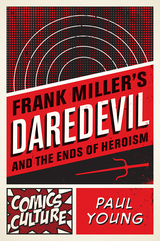 Frank Miller's Daredevil and the Ends of Heroism
Young, Paul
Rutgers University Press, 2016 2017 EISNER AWARD NOMINEE for Best Academic/Scholarly Work
In the late 1970s and early 1980s, writer-artist Frank Miller turned Daredevil from a tepid-selling comic into an industry-wide success story, doubling its sales within three years. Lawyer by day and costumed vigilante by night, the character of Daredevil was the perfect vehicle for the explorations of heroic ideals and violence that would come to define Miller’s work. Frank Miller’s Daredevil and the Ends of Heroism is both a rigorous study of Miller’s artistic influences and innovations and a reflection on how his visionary work on Daredevil impacted generations of comics publishers, creators, and fans. Paul Young explores the accomplishments of Miller the writer, who fused hardboiled crime stories with superhero comics, while reimagining Kingpin (a classic Spider-Man nemesis), recuperating the half-baked villain Bullseye, and inventing a completely new kind of Daredevil villain in Elektra. Yet, he also offers a vivid appreciation of the indelible panels drawn by Miller the artist, taking a fresh look at his distinctive page layouts and lines. A childhood fan of Miller’s Daredevil, Young takes readers on a personal journey as he seeks to reconcile his love for the comic with his distaste for the fascistic overtones of Miller’s controversial later work. What he finds will resonate not only with Daredevil fans, but with anyone who has contemplated what it means to be a hero in a heartless world. Other titles in the Comics Culture series include Twelve-Cent Archie, Wonder Woman: Bondage and Feminism in the Marston/Peter Comics, 1941-1948, and Considering Watchmen: Poetics, Property, Politics.
Frank Murphy: The Detroit Years
Sidney Fine
University of Michigan Press, 1975 Tells of Frank Murphy's early career as Recorder's Court judge and mayor of Depression-era Detroit
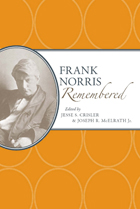 Frank Norris Remembered
Edited by Jesse S. Crisler and Joseph R. McElrath Jr.
University of Alabama Press, 2013 Frank Norris Remembered is a collection of reminiscences by Norris’s contemporaries, friends, and family that illuminate the life of one of America’s most popular novelists. Considering his undergraduate education spent studying art at Académie Julian in Paris and creative writing at Harvard and his journalism career reporting from the far reaches of South Africa and Cuba, it is difficult to fathom how Frank Norris also found time to compose seven novels during the course of his brief life. But despite his adventures abroad, Norris turned out novels at a dizzying pace. He published Moran of the Lady Letty in 1898, McTeague early in 1899, Blix later that year, A Man’s Woman in February 1900, and The Octopus, the first in his ultimately unfinished “Epic of the Wheat” trilogy, in 1901. By informing his novels with his own experiences abroad, Norris composed works that were politically charged and culturally relevant and that made considerable contributions to the character of American literature in the twentieth century. Frank Norris died at the age of thirty-two in 1902 from peritonitis resulting from a burst appendix, leaving behind a wife, a daughter, and an unfinished series of novels (two of which, The Pit and Vandover and the Brute, were published posthumously). The aim of Frank Norris Remembered, edited by Jesse S. Crisler and Joseph R. McElrath Jr., is to re-create the short, spectacular life of this American author through the eyes of those who knew him best. The fifty reminiscences included in this book feature the voices of Frank N. Doubleday; William Dean Howells; Hamlin Garland; Norris’s wife, Jeannette; and many others who were lucky enough to form a relationship with this vital twentieth-century American author, artist, and adventurer.
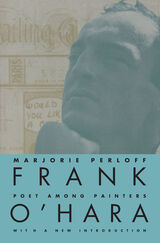 Frank O'Hara: Poet Among Painters
Marjorie Perloff
University of Chicago Press, 1997 Drawing extensively upon the poet's unpublished manuscripts—poems, journals, essays, and letters—as well as all his published works, Marjorie Perloff presents Frank O'Hara as one of the central poets of the postwar period and an important critic of the visual arts. Perloff traces the poet's development through his early years at Harvard and his interest in French Dadaism and Surrealism to his later poems that fuse literary influence with elements from Abstract Expressionist painting, atonal music, and contemporary film. This edition contains a new Introduction addressing O'Hara's homosexuality, his attitudes toward racism, and changes in poetic climate cover the past few decades.
"A groundbreaking study. [This book] is a genuine work of criticism. . . . Through Marjorie Perloff's book we see an O'Hara perhaps only his closer associates saw before: a poet fully aware of the traditions and techniques of his craft who, in a life tragically foreshortened, produced an adventurous if somewhat erratic body of American verse."—David Lenson, Chronicle of Higher Education
"Perloff is a reliable, well-informed, discreet, sensitive . . . guide. . . . She is impressive in the way she deals with O'Hara's relationship to painters and paintings, and she does give first-rate readings of four major poems."—Jonathan Cott, New York Times Book Review
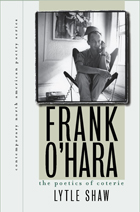 Frank O'Hara: The Poetics of Coterie
Lytle Shaw
University of Iowa Press, 2006 In this stimulating and innovative synthesis of New York's artistic and literary worlds, Lytle Shaw uses the social and philosophical problems involved in “reading” a coterie to propose a new language for understanding the poet, art critic, and Museum of Modern Art curator Frank O'Hara (1926-1966). O'Hara's poems are famously filled with proper names---from those of his immediate friends and colleagues in the New York writing and art worlds (John Ashbery, Kenneth Koch, Grace Hartigan, Willem de Kooning, and many musicians, dancers, and filmmakers) to a broad range of popular cultural and literary heroes (Apollinaire to Jackie O). But rather than understand O'Hara's most commonly referenced names as a fixed and insular audience, Shaw argues that he uses the ambiguities of reference associated with the names to invent a fluid and shifting kinship structure---one that opened up radical possibilities for a gay writer operating outside the structure of the family. As Shaw demonstrates, this commitment to an experimental model of association also guides O'Hara's art writing. Like his poetry, O'Hara's art writing too has been condemned as insular, coterie writing. In fact, though, he was alone among 1950s critics in his willingness to consider abstract expressionism not only within the dominant languages of existentialism and formalism but also within the cold war political and popular cultural frameworks that anticipate many of the concerns of contemporary art historians. Situating O'Hara within a range of debates about art's possible relations to its audience, Shaw demonstrates that his interest in coterie is less a symptomatic offshoot of his biography than a radical literary and artistic invention.
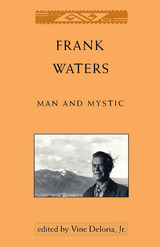 Frank Waters: Man and Mystic
Vine Deloria Jr.
Ohio University Press, 1993 “In addition to his accomplishments as a talented novelist, a thorough historian, and an excellent essayist, Frank Waters is that rare breed of man who has merged heart and mind early in his life and moved forward to confront ultimate questions. This dilemma of faith and heritage, religion and identity, and commitment and comfort has never been resolved intellectually. Even with profound faith and rigorous discipline of self, mystics have found it difficult to resolve through action and prayer…I look at the life and writing of Frank Waters…and find…a remarkable journey of inquiry spanning nearly a century and illuminating questions which I did not think possible to formulate.” —Vine Deloria, Jr., editor Contributors to this volume are Alvin M. Josephy, Jr., Bobby Bridger, Steven Wall, Will Wright, William Eastlake, Larry Evers, David Jongeward, Max Evans, Win Blevins, Barbara Waters, Rudolfo Anaya, Thomas J. Lyon, Joe Gordon, Robert Kostka, Charles Adams, Father Peter J. Powell, Quay Grigg, Alexander Blackburn, and T. N. Luther.
 A Frank Waters Reader: A Southwestern Life in Writing
Frank Waters
Ohio University Press, 2000 Over the course of his life, Frank Waters amassed a body of work that has few equals in the literature of the American West. Because his was a writing that touched every facet of the Western experience, his voice still echoes throughout that region’s literary world. Swallow Press is especially proud to present this generous sampling of Frank Waters’s writings. A Frank Waters Reader encompasses the full range of his work and draws from both his nonfiction and his many novels. It stands as a testament to his singular achievement and proof of the talent that established him as the foremost writer in the Southwest. This collection spanning forty years of writing provides an excellent introduction for the uninitiated as well as a retrospective for those already familiar with this giant talent. His gift for achieving a delicate balance among the many contrary forces at work in the land and the people who inhabit it is as true and enduring as the region that inspired him.
 A Frank Waters Reader: A Southwestern Life In Writing
Frank Waters
Ohio University Press, 2000 Over the course of his life, Frank Waters amassed a body of work that has few equals in the literature of the American West. Because his was a writing that touched every facet of the Western experience, his voice still echoes throughout that region’s literary world. Swallow Press is especially proud to present this generous sampling of Frank Waters’s writings. A Frank Waters Reader encompasses the full range of his work and draws from both his nonfiction and his many novels. It stands as a testament to his singular achievement and proof of the talent that established him as the foremost writer in the Southwest. This collection spanning forty years of writing provides an excellent introduction for the uninitiated as well as a retrospective for those already familiar with this giant talent. His gift for achieving a delicate balance among the many contrary forces at work in the land and the people who inhabit it is as true and enduring as the region that inspired him.
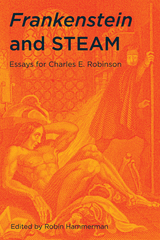 Frankenstein and STEAM: Essays for Charles E. Robinson
Robin Hammerman
University of Delaware Press, 2022 Charles E. Robinson, Professor Emeritus of English at The University of Delaware, definitively transformed study of the novel Frankenstein with his foundational volume The Frankenstein Notebooks and, in nineteenth century studies more broadly, brought heightened attention to the nuances of writing and editing. Frankenstein and STEAM consolidates the generative legacy of his later work on the novel's broad relation to topics in science, technology, engineering, arts, and mathematics (STEAM). Seven chapters written by leading and emerging scholars pay homage to Robinson's later perspectives of the novel and a concluding postscript contains remembrances by his colleagues and students. This volume not only makes explicit the question of what it means to be human, a question Robinson invited students and colleagues to examine throughout his career, but it also illustrates the depth of the field and diversity of those who have been inspired by Robinson's work. Frankenstein and STEAM offers direction for continuing scholarship on the intersections of literature, science, and technology. Published by the University of Delaware Press. Distributed worldwide by Rutgers University Press.
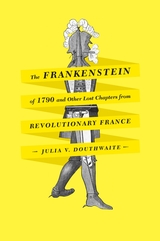 The Frankenstein of 1790 and Other Lost Chapters from Revolutionary France
Julia V. Douthwaite
University of Chicago Press, 2012 The French Revolution brings to mind violent mobs, the guillotine, and Madame Defarge, but it was also a publishing revolution: more than 1,200 novels were published between 1789 and 1804, when Napoleon declared the Revolution at an end. In this book, Julia V. Douthwaite explores how the works within this enormous corpus announced the new shapes of literature to come and reveals that vestiges of these stories can be found in novels by the likes of Mary Shelley, E. T. A. Hoffmann, Honoré de Balzac, Charles Dickens, Gustave Flaubert, and L. Frank Baum. Deploying political history, archival research, and textual analysis with eye-opening results, Douthwaite focuses on five major events between 1789 and 1794—first in newspapers, then in fiction—and shows how the symbolic stories generated by Louis XVI, Robespierre, the market women who stormed Versailles, and others were transformed into new tales with ongoing appeal. She uncovers a 1790 story of an automaton-builder named Frankénsteïn, links Baum to the suffrage campaign going back to 1789, and discovers a royalist anthem’s power to undo Balzac’s Père Goriot. Bringing to light the missing links between the ancien régime and modernity, The Frankenstein of 1790 and Other Lost Chapters from Revolutionary France is an ambitious account of a remarkable politico-literary moment and its aftermath.
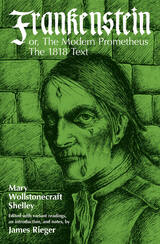 Frankenstein, or the Modern Prometheus: The 1818 Text
Mary Wollstonecraft Shelley
University of Chicago Press, 1982 The definitive edition of the original version of Mary Shelley's enduring classic
When Mary Shelley published Frankenstein in 1818, she created a legend that, like the monster of her story, grew far beyond anything she could ever have dreamed of, or that anyone could ever control. With one book, she founded the field of science fiction, pushed the gothic into new territory, and gave us an unforgettable character capable of being monster, man, and metaphor, a symbol simultaneously of the potential and perils of science--even of humanity itself.
The novel was originally published in three volumes in March 1818. In 1831, a different publisher issued a single-volume edition that had been heavily rewritten by an older Mary Shelley. That edition served as the standard Frankenstein for well over a century. In recent decades, however, growing awareness of the role of Shelley's husband, Percy Bysshe Shelley, in the revision process, and corresponding interest in giving readers access to the original text from Mary Shelley's hand, has led to increasing attention to the original 1818 edition.
This edition reproduces the text of the 1818 edition with the addition, clearly indicated within the book, of minor changes that Mary Shelley made by hand in 1823. It also preserves the original three-volume structure within this single book, helping readers better understand the symmetries within the story as Shelley constructed it. Explanatory notes, meanwhile, explain references and provide historical and cultural context.
The result is a new look at a lasting classic, one that has as much to say to readers today as it did when first published more than two centuries ago.
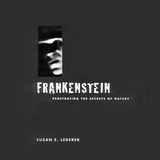 Frankenstein: Penetrating the Secrets of Nature
Lederer, Susan E
Rutgers University Press, 2002 As science penetrates the secrets of nature, with each discovery generating new questions, Mary Shelley's Frankenstein will sound its note of warning. Many scientific developments have provoked references to Frankenstein, a story that, for nearly two centuries, has gripped our imaginations and haunted our nightmares. How can society balance the benefits of medical discoveries against the ethical or spiritual questions posed? Frankenstein: Penetrating the Secrets of Nature accompanies a traveling exhibit of the same name. This lavishly illustrated volume begins by highlighting Shelley's novel and the context in which she conceived it. It next focuses on the redefinition of the Frankenstein myth in popular culture. Here, the fate of the monster becomes a moral lesson illustrating the punishment for ambitious scientists who seek to usurp the place of God by creating life. The final section examines the continuing power of the Frankenstein story to articulate present-day concerns raised by new developments in biomedicine such as cloning and xenografting (the use of animal organs in human bodies), and the role scientists and citizens play in determining acceptable limits of scientific and medical advances.
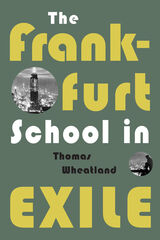 The Frankfurt School in Exile
Thomas Wheatland
University of Minnesota Press, 2009 Members of the Frankfurt School have had an enormous effect on Western thought, beginning soon after Max Horkheimer became the director of the Institute for Social Research at the University of Frankfurt am Main, in 1930. Also known as the Horkheimer Circle, the group included such eminent intellectuals as Theodor Adorno, Herbert Marcuse, Erich Fromm, Leo Lowenthal, and Friedrich Pollock. Fleeing Nazi oppression, Horkheimer moved the Institute and many of its affiliated scholars to Columbia University in 1934, where it remained until 1950.
Until now, the conventional portrayal of the Institute has held that its members found refuge by relocating to Columbia but that they had little contact with, or impact on, American intellectual life. With insight and clarity, Thomas Wheatland demonstrates that the standard account is wrong. Based on deep archival research in Germany and in the United States, and on interviews conducted with luminaries such as Daniel Bell, Bernadine Dohrn, Peter Gay, Todd Gitlin, Nathan Glazer, Tom Hayden, Robert Merton, and others, Wheatland skillfully traces the profound connections between the Horkheimer Circle’s members and the intellectual life of the era. Reassessing the group’s involvement with the American New Left in the 1960s, he argues that Herbert Marcuse’s role was misunderstood in shaping the radical student movement’s agenda. More broadly, he illustrates how the Circle influenced American social thought and made an even more dramatic impression on German postwar sociology.
Although much has been written about the Frankfurt School, this is the first book to closely examine the relationship between its members and their American contemporaries. The Frankfurt School in Exile uncovers an important but neglected dimension of the history of the Frankfurt School and adds immeasurably to our understanding of the contributions made by its émigré intellectuals to postwar intellectual life.
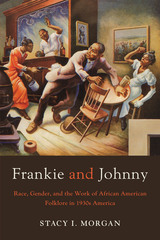 Frankie and Johnny: Race, Gender, and the Work of African American Folklore in 1930s America
By Stacy I. Morgan
University of Texas Press, 2017 Winner, Wayland D. Hand Prize, American Folklore Society, 2018 Originating in a homicide in St. Louis in 1899, the ballad of “Frankie and Johnny” became one of America’s most familiar songs during the first half of the twentieth century. It crossed lines of race, class, and artistic genres, taking form in such varied expressions as a folk song performed by Huddie Ledbetter (Lead Belly); a ballet choreographed by Ruth Page and Bentley Stone under New Deal sponsorship; a mural in the Missouri State Capitol by Thomas Hart Benton; a play by John Huston; a motion picture, She Done Him Wrong, that made Mae West a national celebrity; and an anti-lynching poem by Sterling Brown. In this innovative book, Stacy I. Morgan explores why African American folklore—and “Frankie and Johnny” in particular—became prized source material for artists of diverse political and aesthetic sensibilities. He looks at a confluence of factors, including the Harlem Renaissance, the Great Depression, and resurgent nationalism, that led those creators to engage with this ubiquitous song. Morgan’s research uncovers the wide range of work that artists called upon African American folklore to perform in the 1930s, as it alternately reinforced and challenged norms of race, gender, and appropriate subjects for artistic expression. He demonstrates that the folklorists and creative artists of that generation forged a new national culture in which African American folk songs featured centrally not only in folk and popular culture but in the fine arts as well.
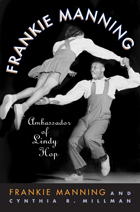 Frankie Manning: Ambassador of Lindy Hop
Frankie Manning
Temple University Press, 2008 In the early days of swing dancing, Frankie Manning stood out for his moves and his innovative routines; he created the "air step" in the Lindy hop, a dance that took the U.S. and then the world by storm. In this fascinating autobiography, the choreographer and Tony Award winner (Black and Blue) Frankie Manning recalls how his first years of dancing as a teenager at Harlem's Savoy Ballroom led to his becoming chief choreographer and a lead dancer for Whitey's Lindy Hoppers, a group that appeared on Broadway, in Hollywood musicals, and on stages around the globe. Manning brings the Swing Era vividly back to life with his recollections of the crowded ballrooms, and of Lindy hoppers trying to outdo each other in spectacular performances. His memories of the many headliners and film stars, as well as uncelebrated dancers with whom he shared the stage, create a unique portrait of an era in which African American performers enjoyed the spotlight if not a star's prerogatives and salary. With collaborator Cynthia Millman, Manning traces the evolution of swing dancing from its early days in Harlem through the post-World War II period, until it was eclipsed by rock 'n' roll and then disco. When swing made a comeback, Manning's 30-year hiatus ended. He has been performing, choreographing, and teaching ever since.
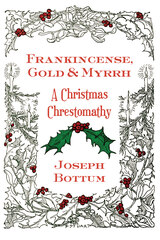 Frankincense, Gold, and Myrrh: A Christmas Chrestomathy
Joseph Bottum
St. Augustine's Press, 2024 For over thirty years, Joseph Bottum has been writing widely acclaimed Christmas essays, columns, short stories, and carols for American magazines and newspapers. Now, for the first time, St. Augustine’s Press has gathered a selection of these classic pieces—with a vast range across the Christmas spectrum.
There’s the comic: “Tinsel. No one needs tinsel. Even the word is a tinselly kind of word.” There’s the sentimental: “Her hair was the same thin shade of gray as the weather-beaten pickets of the fence around her frozen garden.” There’s the reminiscent: “Christmas was books, and books Christmas, in those days now mostly washed down to the cold sea.” Along the way, there’s the theological, the learned, the mystical, and the musical.
“Tastefulness is just small-mindedness pretending to be art,” he writes in praise of mad and cluttered holidays. “Christmas will not be defined by our failures to apply its lessons and carols,” he explains about Yuletide poetry. To see these essays and short stories gathered in one place—in a beautiful illustrated edition from St. Augustine’s Press—is to see the whole of the vision that Joseph Bottum has been painting for decades: a picture of Christmas as a thin place in the wall between the natural and the numinous, where a burning grace slips into a cold winter world.
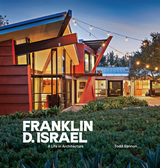 Franklin D. Israel: A Life in Architecture
Todd Gannon
J. Paul Getty Trust, The, 2024 This book examines the life and legacy of Franklin D. Israel, an influential member of the Los Angeles school of architects.
Acclaimed Los Angeles architect Franklin D. Israel (1945–1996) created innovative residential projects and office interiors that made him one of the most talked-about designers of his generation. In this vivid account, architectural historian Todd Gannon draws on archival resources, analyses of Israel’s buildings, and recent interviews with the architect’s colleagues, clients, and contemporaries, including Frank Gehry, Thom Mayne, and Robert A. M. Stern. Gannon traces Israel’s development from his early years and career on the East Coast to his formative world travels and residence at the American Academy in Rome. The author guides readers through the Los Angeles architectural context, Israel’s influential teaching at UCLA, his dalliance with Hollywood, and the personal motivations behind his architecture and design work—all aspects of an influential career that was cut short by his death from AIDS-related complications at the age of fifty.
Franklin D. Israel is a compelling work of architectural history and biography, chronicling one gay man’s engagement with the largely heteronormative world of American architectural culture. It explores the achievement of this central figure in the still largely unstudied history of late twentieth-century avant-garde Los Angeles architecture.
 Franklin D. Roosevelt and Foreign Affairs
Franklin D. Roosevelt
Harvard University Press These three volumes cover Roosevelt's first administration 1933-1937. The documents relating to foreign affairs during his first administration form a diverse body of information on such issues as war debts, currency stabilization, tariff matters, naval parity, neutrality legislation, diplomatic recognition of Russia, the rise to power of Hitler and Mussolini, the St. Lawrence Waterway Treaty, the Italian-Ethiopian War, the Spanish Civil War, and the "good neighbor" policy.
Foreign affairs has been defined in broad terms by the editor of these volumes, and materials selected relate not only to the President's handling of foreign relations, but also to the domestic background, particularly Roosevelt's efforts to gain support for his policies. Included are press conference transcripts, messages to Congress, speeches, press releases, memoranda to and from executive officers, and correspondence with legislators, ambassadors, heads of state, organizations, and individual citizens. Of the 1,400 documents selected from the papers in the Roosevelt Library at Hyde Park, all but a few are published here for the first time.
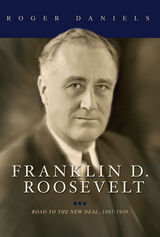 Franklin D. Roosevelt: Road to the New Deal, 1882-1939
Roger Daniels
University of Illinois Press, 2015 Franklin D. Roosevelt, consensus choice as one of three great presidents, led the American people through the two major crises of modern times. The first volume of an epic two-part biography, Franklin D. Roosevelt: Road to the New Deal, 1882-1939 presents FDR from a privileged Hyde Park childhood through his leadership in the Great Depression to the ominous buildup to global war. Roger Daniels revisits the sources and closely examines Roosevelt's own words and deeds to create a twenty-first century analysis of how Roosevelt forged the modern presidency. Daniels's close analysis yields new insights into the expansion of Roosevelt's economic views; FDR's steady mastery of the complexities of federal administrative practices and possibilities; the ways the press and presidential handlers treated questions surrounding his health; and his genius for channeling the lessons learned from an unprecedented collection of scholars and experts into bold political action. Revelatory and nuanced, Franklin D. Roosevelt: Road to the New Deal, 1882-1939 reappraises the rise of a political titan and his impact on the country he remade.
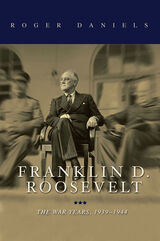 Franklin D. Roosevelt: The War Years, 1939-1945
Roger Daniels
University of Illinois Press, 2016 Having guided the nation through the worst economic crisis in its history, Franklin Delano Roosevelt by 1939 was turning his attention to a world on the brink of war. The second part of Roger Daniels's biography focuses on FDR's growing mastery in foreign affairs. Relying on FDR's own words to the American people and eyewitness accounts of the man and his accomplishments, Daniels reveals a chief executive orchestrating an immense wartime effort. Roosevelt had effective command of military and diplomatic information and unprecedented power over strategic military and diplomatic affairs. He simultaneously created an arsenal of democracy that armed the Allies while inventing the United Nations intended to ensure a lasting postwar peace. FDR achieved these aims while expanding general prosperity, limiting inflation, and continuing liberal reform despite an increasingly conservative and often hostile Congress. Although fate robbed him of the chance to see the victory he had never doubted, events in 1944 assured him that the victory he had done so much to bring about would not be long delayed. A compelling reconsideration of Roosevelt the president and campaigner, The War Years, 1939-1945 provides new views and vivid insights about a towering figure--and six years that changed the world.
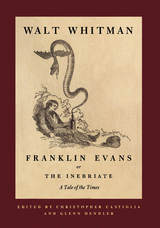 Franklin Evans, or The Inebriate: A Tale of the Times
Walt Whitman
Duke University Press, 2007 Not many people know that Walt Whitman—arguably the preeminent American poet of the nineteenth century—began his literary career as a novelist. Franklin Evans, or The Inebriate: A Tale of the Times was his first and only novel. Published in 1842, during a period of widespread temperance activity, it became Whitman’s most popular work during his lifetime, selling some twenty thousand copies. The novel tells the rags-to-riches story of Franklin Evans, an innocent young man from the Long Island countryside who seeks his fortune in New York City. Corrupted by music halls, theaters, and above all taverns, he gradually becomes a drunkard. Until the very end of the tale, Evans’s efforts to abstain fail, and each time he resumes drinking, another series of misadventures ensues. Along the way, Evans encounters a world of mores and conventions rapidly changing in response to the vicissitudes of slavery, investment capital, urban mass culture, and fervent reform. Although Evans finally signs a temperance pledge, his sobriety remains haunted by the often contradictory and unsettling changes in antebellum American culture. The editors’ substantial introduction situates Franklin Evans in relation to Whitman’s life and career, mid-nineteenth-century American print culture, and many of the developments and institutions the novel depicts, including urbanization, immigration, slavery, the temperance movement, and new understandings of class, race, gender, and sexuality. This edition includes a short temperance story Whitman published at about the same time as he did Franklin Evans, the surviving fragment of what appears to be another unfinished temperance novel by Whitman, and a temperance speech Abraham Lincoln gave the same year that Franklin Evans was published.
 Franklin Furnace and the Spirit of the Avant-Garde: A History of the Future
Toni Sant
Intellect Books, 2011 Franklin Furnace is a renowned New York–based artsorganization whose mission is to preserve, document, and present works of avant-garde art by emerging artists—particularly those whose works may be vulnerable due to institutional neglect or politically unpopular content. Over more than thirty years, Franklin Furnace has exhibited works by hundreds of avant-garde artists, some of whom—Laurie Anderson, Vito Acconci, Karen Finley, Guillermo Gómez-Peña, Jenny Holzer, and the Blue Man Group, to name a few—are now established names in contemporary art. Here, for the first time, is a comprehensive history of this remarkable organization from its conception to the present. Organized around the major art genres that emerged in the second half of the twentieth century, this book intersperses first-person narratives with readings by artists and scholars on issues critical to the organization's success as well as Franklin Furnace's many contributions to avant-garde art.
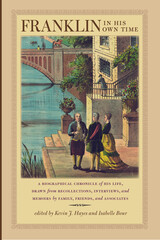 Franklin in His Own Time: A Biographical Chronicle of His Life, Drawn from Recollections, Interviews, and Memoirs by Family, Friends, and Associates
Kevin J. Hayes
University of Iowa Press, 2011 @font-face { font-family: "Courier New";}@font-face { font-family: "Times";}@font-face { font-family: "Cambria";}@font-face { font-family: "Palatino";}p.MsoNormal, li.MsoNormal, div.MsoNormal { margin: 0in 0in 0.0001pt; font-size: 12pt; font-family: "Times New Roman"; }div.Section1 { page: Section1; } In his time Benjamin Franklin (1706–1790) was the most famous American in the world. Even those personally unacquainted with the man knew him as the author of Poor Richard’s Almanack, as a pioneer in the study of electricity and a major figure in the American Enlightenment, as the creator of such life-changing innovations as the lightning rod and America’s first circulating library, and as a leader of the American Revolution. His friends also knew him as a brilliant conversationalist, a great wit, an intellectual filled with curiosity, and most of all a master anecdotist whose vast store of knowledge complemented his conversational skills. In Franklin in His Own Time, by reprinting the original documents in which those anecdotes occur, Kevin Hayes and Isabelle Bour restore those oft-told stories to their cultural contexts to create a comprehensive narrative of his life and work. The thirty-five recollections gathered in Franklin in His Own Time form an animated, collaborative biography designed to provide a multitude of perspectives on the “First American.” Opening with an account by botanist Peter Kalm showing that Franklin was doing all he could to encourage the development of science in North America, it includes on-the-spot impressions from Daniel Fisher’s diary, the earliest surviving interview with Franklin, recollections from James Madison and Abigail Adams, Manasseh Cutler’s detailed description of the library at Franklin Court, and extracts from Alexander Hamilton’s unvarnished Minutes of the Tuesday Club. Franklin’s political missions to Great Britain and France, where he took full advantage of rich social and intellectual opportunities, are a source of many reminiscences, some published here in new translations. Genuine memories from such old friends as Thomas Jefferson and John Adams, as opposed to memories influenced by the Autobiography, clarify Franklin’s reputation. Robert Carr may have been the last remaining person who knew Franklin personally, and thus his recollections are particularly signific
 Franklin of Philadelphia
Esmond Wright
Harvard University Press, 1986 The most original and most delightful of the Founding Fathers, Benjamin Franklin was publisher and printer, essayist and author, businessman and “general,” scientist and philologist, politician and diplomat, moralist and sage—and a thoroughly rational patriot who was a major force in winning his country’s independence and securing its life in the Constitution. Born poor in Cotton Mather’s Boston, he was soon at ease in Quaker Philadelphia, and later in royal London, and in elegant Paris. Born with no advantages, he died wealthy and esteemed. He was the quintessential American, almost totally free of the limits of his environment, ready to accept any challenge, to speculate, experiment, and question.
Esmond Wright, the distinguished English scholar of America, sees Franklin as an Old England Man and a reluctant revolutionary; civilized, urbane, devious, and on occasion just a little unscrupulous. For, despite his charm and genius, Franklin was not admired by everybody. His contemporary John Adams thought little of his political abilities, and the Federalist pamphleteer William Cobbett called him a “crafty and lecherous old hypocrite.” In the next century, Mark Twain, Hawthorne, and Melville did not value him; still later, D. H. Lawrence despised the middle-class morality he promoted. Many today deplore his lack of interest in the arts or metaphysics, his lack of passionate commitment, his opportunism, his occasional coarseness. Yet his success in business, his many-faceted public career, his ingenious inventions and world-renowned scientific genius, his splendid prose style, his worldly wisdom, and the attractive personality that shines through his remarks and writings, made Benjamin Franklin the “new man” of the eighteenth-century dream and also vastly appealing to the modern temper. Wright’s new biography presents a fully rounded portrait of this remarkable man for all ages.
This first comprehensive biography of Franklin in fifty years has taken advantage of Yale’s massive edition-in-progress of Franklin’s papers and of the many specialized studies inspired by the correspondence. Franklin of Philadelphia, designed for the general reader, is also a work for scholars, for the author appends a thorough analysis of other interpretations of Franklin’s career and personality.
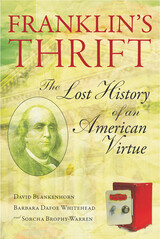 Franklin's Thrift: The Lost History of an American Virtue
David Blankenhorn
Templeton Press, 2009 Americans today often think of thrift as a negative value—a miserly hoarding of resources and a denial of pleasure. Even more telling, many Americans don’t even think of thrift at all anymore. Franklin’s Thrift challenges this state of mind by recovering the rich history of thrift as a quintessentially American virtue. The contributors to this volume trace how the idea and practice of thrift have been a vital part of the American vision of economic freedom and social abundance. For Benjamin Franklin, who personified and promoted the idea, thrift meant working productively, consuming wisely, saving proportionally, and giving generously. Franklin’s thrift became the cornerstone of a new kind of secular faith in the ordinary person’s capacity to shape his lot and fortune in life. Later chapters document how thrift moved into new domains in the nineteenth and twentieth centuries. It became the animating idea behind social movements to promote children’s school savings, create mutual savings banks and credit unions for working men and women, establish a federal savings bond program, and galvanize the nation to conserve resources during two world wars. Historians, enthusiasts of Americana or traditional American virtues, and anyone interested in resolving our society’s current financial woes will find much to treasure in this diverse collection, with topics ranging from the inspirational lessons we can learn from the film It’s a Wonderful Life to a history of the roles played by mutual savings banks, credit unions, and thrift stores in America’s national thrift movement. It also includes actual policy recommendations for our present situation.
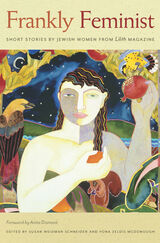 Frankly Feminist: Short Stories by Jewish Women from Lilith Magazine
Edited by Susan Weidman Schneider and Yona Zeldis McDonough
Brandeis University Press, 2022 A groundbreaking Jewish feminist short story collection.
Short story collections focusing on Jewish writers have—no surprise—typically given women authors short shrift. This new volume represents the best Jewish feminist fiction published in Lilith magazine, and does what no other collection has done before in its geographic scope, its inclusion of twenty-first-century stories, and its Jewish feminist focus.
This collection showcases a wide range of stories offering variegated cultures and contexts and points of view: Persian Jews; a Biblical matriarch; an Ethiopian mother in modern Israel; suburban American teens; Eastern European academics; a sexual questioner; a Jew by choice; a new immigrant escaping her Lower East Side sweatshop; a Black Jewish marcher for justice; in Vichy France, a toddler’s mother hiding out; and more.
Organized by theme, the stories in this book emphasize a breadth of content, and our hope is that in reading you’ll appreciate the liveliness of the burgeoning self-awareness brought to life in each tale, and the occasional funny, call-your-friend-and-tell-her-about-it moment. Skip around, encounter an author whose other work you may know, be enticed by a title, or an opening line. We hope you’ll find both pleasure and enlightenment—and sometimes revelation—within these pages.
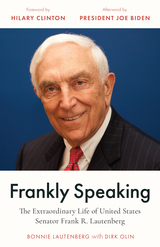 Frankly Speaking: The Extraordinary Life of United States Senator Frank R. Lautenberg
Bonnie Lautenberg
Rutgers University Press, 2024 Frank Lautenberg was the embodiment of the American dream. The son of Eastern European immigrants who toiled in the factories of northern New Jersey, he rose to become a Fortune 500 CEO and eventually a five-term US senator. Yet his is not a simple rags-to-riches tale, but is rather the story of someone who used his newfound affluence and influence to improve the lives of ordinary Americans.
Told by one of the people who knew him best, his widow Bonnie, Frankly Speaking reveals the political strategies that made Lautenberg one of the Senate’s most powerful advocates for the health and safety of America’s citizens. He championed seemingly minor, unglamorous reforms that made a big difference to everyday lives, from raising the national drinking age to preventing domestic abusers from purchasing guns. These campaigns earned him powerful enemies in the alcohol, tobacco, and firearms industries, and he was subjected to some of the most brutal campaign mudslinging in American history. Yet, as this inspiring biography reveals, New Jersey’s longest-serving senator was not afraid to take big political risks if it meant standing up for his principles, whether that meant opposing the Iraq War or protecting LGBTQ and women’s rights.
 Frans Hals: Iconography – Technique – Reputation
Norbert Middelkoop
Amsterdam University Press, 2025 Frans Hals (1582/83-1666) is rightfully considered one of the most important seventeenth-century Dutch painters. His portraits are admired for their virtuoso brushwork and their seemingly spontaneous character. This volume, with fourteen contributions by twenty-six specialists on Hals’s paintings and his artistic network in Haarlem and beyond, presents a rich palette of new research.
The authors introduce subjects such as the artist's clientele - from clergymen and fellow painters to governors of charitable institutions - as well as stylistic and technical aspects of individual paintings. Results of recent restorations are discussed, but also how advanced digital technologies contribute to our understanding of the painter's style and artistic development. A final section is dedicated to the rediscovery of Frans Hals in the second half of the nineteenth century and to the following art historical debate among connoisseurs about the artist’s oeuvre.
Frans Hals: Iconography - Technique - Reputation is the first volume in the Frans Hals Studies book series and is richly illustrated with close to two hundred colour illustrations.
 Frantz Fanon: Philosopher of the Barricades
Peter Hudis
Pluto Press, 2015 Few figures loom as large in the intellectual history of revolution and postcolonialism than Frantz Fanon. An intellectual who devoted his life to activism, he utilized his deep knowledge of psychology and philosophy in the service of the movement for democratic participation and political sovereignty in his native Martinique and around the world.
With FranzFanon, Peter Hudis presents a penetrating critical biography of the activist’s life and work. Countering the prevailing belief that Fanon’s contributions to modern thought can be wholly defined by an advocacy of violence, Hudis presents his work instead as an integrated whole, showing that its nuances—and thus its importance—can only be appreciated in light of Fanon’s efforts to fuse philosophical theory and actual practice. By taking seriously Fanon’s philosophical and psychological contributions, as well as his political activism, Hudis presents a powerful and perceptive new view of the man and his achievement.
This brief, richly perceptive introduction to Fanon will give new force to his ideas, his life, and his example for people engaged in radical political theory and taking action against oppression around the world today.
Frantz Fanon: Toward a Revolutionary Humanism
Christopher J. Lee
Ohio University Press, 2015 Psychiatrist, philosopher, and revolutionary, Frantz Fanon is one of the most important intellectuals of the twentieth century. He presented powerful critiques of racism, colonialism, and nationalism in his classic books, Black Skin, White Masks (1952) and The Wretched of the Earth (1961). This biography reintroduces Fanon for a new generation of readers, revisiting these enduring themes while also arguing for those less appreciated—namely, his anti-Manichean sensibility and his personal ethic of radical empathy, both of which underpinned his utopian vision of a new humanism. Written with clarity and passion, Christopher J. Lee’s account ultimately argues for the pragmatic idealism of Frantz Fanon and his continued importance today.
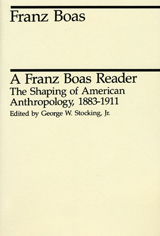 A Franz Boas Reader: The Shaping of American Anthropology, 1883-1911
Franz Boas
University of Chicago Press, 1989 "The Shaping of American Anthropology is a book which is outstanding in many respects. Stocking is probably the leading authority on Franz Boas; he understands Boas's contributions to American anthropology, as well as anthropology in general, very well. . . . He is, in a word, the foremost historian of anthropology in the world today. . . . The reader is both a collection of Boas's papers and a solid 23-page introduction to giving the background and basic assumptions of Boasian anthropology."—David Schneider, University of Chicago
"While Stocking has not attempted to present a person biography, nevertheless Boas's personal characteristics emerge not only in his scholarly essays, but perhaps more vividly in his personal correspondence. . . . Stocking is to be commended for collecting this material together in a most interesting and enjoyable reader."—Gustav Thaiss, American Anthropologist
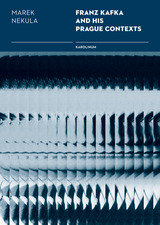 Franz Kafka and His Prague Contexts: Studies on Language and Literature
Marek Nekula
Karolinum Press, 2015 Franz Kafka is by far the Prague author most widely read and admired internationally. However, his reception in Czechoslovakia, launched by the Liblice conference in 1963, has been conflicted. While rescuing Kafka from years of censorship and neglect, Czech critics of the 1960s “overwrote” his German and Jewish literary and cultural contexts in order to focus on his Czech cultural connections. Seeking to rediscover Kafka’s multiple backgrounds, in Franz Kafka and His Prague Contexts Marek Nekula focuses on Kafka’s Jewish social and literary networks in Prague, his German and Czech bilingualism, and his knowledge of Yiddish and Hebrew. Kafka’s bilingualism is discussed in the context of contemporary essentialist views of a writer’s “organic” language and identity. Nekula also pays particular attention to Kafka’s education, examining his studies of Czech language and literature as well as its role in his intellectual life. The book concludes by asking how Kafka “read” his urban environment, looking at the readings of Prague encoded in his fictional and non-fictional texts.
 Franz Kafka: Narration, Rhetoric, and Reading
Edited by Jakob Lothe, Beatrice Sandberg, and Ronald Speirs
Ohio State University Press, 2011 Franz Kafka: Narration, Rhetoric, and Reading presents essays by noted Kafka critics and by leading narratologists who explore Kafka’s original and innovative uses of narrative throughout his career. Collectively, these essays by Stanley Corngold, Anniken Greve, Gerhard Kurz, Jakob Lothe, J. Hillis Miller, Gerhard Neumann, James Phelan, Beatrice Sandberg, Ronald Speirs, and Benno Wagner examine a number of provocative questions that arise in narration and narratives in Kafka’s fiction. The arguments of the essays relate both to the peculiarities of Kafka’s story-telling and to general issues in narrative theory. They reflect, for example, the complexity of the issues surrounding the “somebody” doing the telling, the attitude of the narrator to what is told, the perceived purpose(s) of the telling, the implied or actual reader, the progression of events, and the progression of the telling. As the essays also demonstrate, Kafka’s narratives still present a considerable challenge to, as well as a great resource for, narrative theory and analysis.
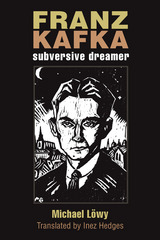 Franz Kafka: Subversive Dreamer
Michael Löwy, translated by Inez Hedges
University of Michigan Press, 2016 Franz Kafka: Subversive Dreamer is an attempt to identify and properly contextualize the social critique in Kafka’s biography and work that links father-son antagonisms, heterodox Jewish religious thinking, and anti-authoritarian or anarchist protest against the rising power of bureaucratic modernity. The book proceeds chronologically, starting with biographical facts often neglected or denied relating to Kafka’s relations with the Anarchist circles in Prague, followed by an analysis of the three great unfinished novels—Amerika, The Trial, The Castle—as well as some of his most important short stories. Fragments, parables, correspondence, and his diaries are also used in order to better understand the major literary works. Löwy’s book grapples with the critical and subversive dimension of Kafka’s writings, which is often hidden or masked by the fabulistic character of the work. Löwy’s reading has already generated controversy because of its distance from the usual canon of literary criticism about the Prague writer, but the book has been well received in its original French edition and has been translated into Spanish, Italian, Portuguese, Greek, and Turkish.
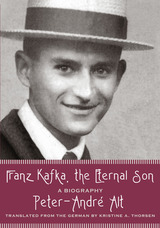 Franz Kafka, the Eternal Son: A Biography
Peter-André Alt, Translated from the German by Kristine A. Thorsen
Northwestern University Press, 2018 Franz Kafka remains one of the most influential writers of the twentieth century. His novels, stories, and letters are still regarded today as the epitome of the dark, fascinating, and uncanny, a model of the modernist aesthetic. Peter-André Alt’s landmark biography, Franz Kafka, the Eternal Son, recounts and explores Kafka’s life and literary work throughout the cultural and political upheavals of central Europe. Alt’s biography explores Franz Kafka’s own view of life and writing as a unity that shaped his identity. He locates links and echoes among the author’s work, life, and surroundings, situating him within the traditions of Prague's German literature, modernity, psychoanalysis, and philosophy as well as within its Jewish culture, arts, theater, and intellectual tradition. In this biographical tour de force, Kafka emerges as an observant flaneur and wistful loner, an anxious ascetic, an ecstatic and skeptic, a specialist in terror, and a master of irony. Alt masterfully illuminates Kafka's life not as source material but as a mirror of his literary genius. Readers begin to see Kafka’s unforgettable novels and stories as shards reflecting the life of their creator.
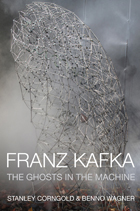 Franz Kafka: The Ghosts in the Machine
Stanley Corngold
Northwestern University Press, 2011 Franz Kafka: The Ghosts in the Machine adds an original critical framework to the work begun by Stanley Corngold and Benno Wagner in their monumental collection Franz Kafka: The Office Writings (2008). It is widely acknowledged that Kafka’s daytime occupation as a specialist in industrial accident insurance contributed in a significant way to his fiction.
Corngold and Wagner frame Kafka’s writings as cultural events, each work reflecting the economic and cultural discourses of his epoch. In pursuing Kafka’s avowed interest in the theory and practice of insurance, the authors view the two systems of his literary worlds—the official and the personal—as a “bundling” together of the various cultural accidents of Kafka’s time. The work of two of the leading scholars of the single most influential writer of literary modernity, Franz Kafka: The Ghosts in the Machine constitutes a breathtakingly original advance in the study of both the more famous and less well-known works of this enigmatic master.
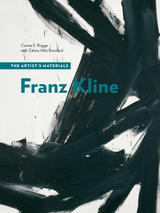 Franz Kline: The Artist's Materials
Corina E. Rogge
J. Paul Getty Trust, The, 2022 This book offers the most detailed investigation thus far of the materials and methods of this key American Abstract Expressionist artist.
Although Franz Kline was one of the seminal figures of the American Abstract Expressionist movement, he is less well known than contemporaries such as Jackson Pollock and Willem de Kooning. This is partly because Kline, unlike most artists in his circle, did not like to write or talk about his own art. In fact, when asked in a panel to discuss abstract art, Kline said, “I thought that was the reason for trying to do it, because you couldn’t [talk about it].” Still, his impact was such that the critic and art historian April Kingsley wrote, “Abstract Expressionism as a movement died with him.”
This volume, the newest addition to the Artist’s Materials series from the Getty Conservation Institute, looks closely at both Kline's life and work, from his early years in Pennsylvania to his later success in New York City. Kline's iconic paintings are poised on a critical cusp: some have already undergone conservation, but others remain unaltered and retain the artist’s color, gloss, and texture, and they are surprisingly vulnerable. The authors’ presentation of rigorous examination and scientific analysis of more than thirty of Kline’s paintings from the 1930s through the 1960s provides invaluable insight into his life, materials, and techniques. This study provides conservators with essential information that will shape future strategies for the care of Kline’s paintings, and offers readers a more thorough comprehension of this underappreciated artist who is so central to American Abstract Expressionism.
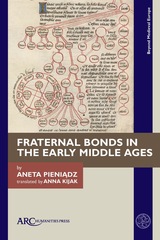 Fraternal Bonds in the Early Middle Ages
Aneta Pieniądz
Arc Humanities Press, 2023 The problem of fraternal relations in the early Middle Ages has not been hitherto studied in detail, especially in comparison with the multitude of studies dealing with the models of marriage, gender-based social roles, or the relations between generations. Historians have been often prone to assume that relations between siblings in European culture were naturally constant, based on loyalty, solidarity, and readiness to act in the common interest, stemming from blood ties. However, this conviction equates the category of brotherhood/fraternitas used by medieval authors with concepts associated with sources from later periods. This study does not concern narrowly defined family history, but is an attempt to examine fraternal relations in the early Middle Ages as a multidimensional cultural phenomenon. As the author seeks to demonstrate, it is difficult to speak of kinship in the ninth century and later without being aware of the religious and ideological implications of the transformations taking place at the time, even if direct traces of the impact of moralizing and theological teachings on the conduct of individuals are hard to capture in the sources.
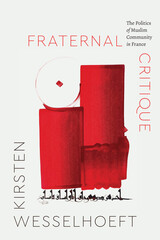 Fraternal Critique: The Politics of Muslim Community in France
Kirsten Wesselhoeft
University of Chicago Press, 2025 An exploration of ways that discord binds rather than divides communal life, through an ethnography of French Muslim activism.
The conversation about Islam in France is framed by the presumption that Muslim communities are a threat to secular solidarity or fraternité. In the face of state repression, French Muslims have not closed ranks around a narrow range of voices; instead, Kirsten Wesselhoeft finds that young Muslim activists have continued to purposefully spark debate about the values that anchor community life. Wesselhoeft argues that such disagreements, far from dividing communities, actually constitute a form of belonging. Some activists call this ethic “fraternal critique,” and Wesselhoeft finds in it profound insights about the place for critique in civic life. The French state has reacted to Muslim solidarity with repression, but Wesselhoeft argues that unity need not come at the expense of dissent. Instead, fraternal critique can teach us how to build communities that are worth fighting over and fighting for.
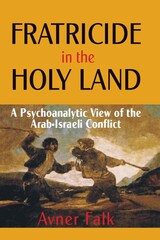 Fratricide in the Holy Land: A Psychoanalytic View of the Arab-Israeli Conflict
Avner Falk
University of Wisconsin Press, 2004 This is the first English-language book ever to apply psychoanalytic knowledge to the understanding of the most intractable international struggle in our world today—the Arab-Israeli conflict. Two ethnic groups fight over a single territory that both consider to be theirs by historical right—essentially a rational matter. But close historical examination shows that the two parties to this tragic conflict have missed innumerable opportunities for a rational partition of the territory between them and for a permanent state of peace and prosperity rather than perennial bloodshed and misery.
Falk suggests that a way to understand and explain such irrational matters is to examine the unconscious aspects of the conflict. He examines large-group psychology, nationalism, group narcissism, psychogeography, the Arab and Israeli minds, and suicidal terrorism, and he offers psychobiographical studies of Ariel Sharon and Yasser Arafat, two key players in this tragic conflict today.
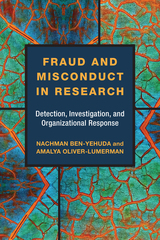 Fraud and Misconduct in Research: Detection, Investigation, and Organizational Response
Nachman Ben-Yehuda and Amalya Oliver-Lumerman
University of Michigan Press, 2017 In Fraud and Misconduct in Research, Nachman Ben-Yehuda and Amalya Oliver-Lumerman introduce the main characteristics of research misconduct, portray how the characteristics are distributed, and identify the elements of the organizational context and the practice of scientific research which enable or deter misconduct. Of the nearly 750 known cases between 1880 and 2010 which the authors examine, the overwhelming majority took place in funded research projects and involved falsification and fabrication, followed by misrepresentation and plagiarism. The incidents were often reported by the perpetrator’s colleagues or collaborators. If the accusations were confirmed, the organization usually punished the offender with temporary exclusion from academic activities and institutions launched organizational reforms, including new rules, the establishment of offices to deal with misconduct, and the creation of re-training and education programs for academic staff. Ben-Yehuda and Oliver-Lumerman suggest ways in which efforts to expose and prevent misconduct can further change the work of scientists, universities, and scientific research.
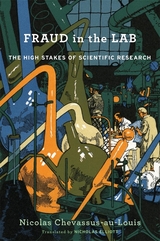 Fraud in the Lab: The High Stakes of Scientific Research
Nicolas Chevassus-au-Louis
Harvard University Press, 2019 From a journalist and former lab researcher, a penetrating investigation of the explosion in cases of scientific fraud and the factors behind it.
In the 1970s, a scientific scandal about painted mice hit the headlines. A cancer researcher was found to have deliberately falsified his experiments by coloring transplanted mouse skin with ink. This widely publicized case of scientific misconduct marked the beginning of an epidemic of fraud that plagues the scientific community today.
From manipulated results and made-up data to retouched illustrations and plagiarism, cases of scientific fraud have skyrocketed in the past two decades, especially in the biomedical sciences. Fraud in the Lab examines cases of scientific misconduct around the world and asks why this behavior is so pervasive. Nicolas Chevassus-au-Louis points to large-scale trends that have led to an environment of heightened competition, extreme self-interest, and emphasis on short-term payoffs. Because of the move toward highly specialized research, fewer experts are qualified to verify experimental findings. And the pace of journal publishing has exacerbated the scientific rewards system—publish or perish holds sway more than ever. Even when instances of misconduct are discovered, researchers often face few consequences, and falsified data may continue to circulate after an article has been retracted.
Sharp and damning, this exposé details the circumstances that have allowed scientific standards to decline. Fraud in the Lab reveals the intense social pressures that lead to fraud, documents the lasting impact it has had on the scientific community, and highlights recent initiatives and proposals to reduce the extent of misconduct in the future.
 Frauen: German Women Recall the Third Reich
Owings, Alison
Rutgers University Press, 1993 From Publishers Weekly
A vivid picture of Germany under the Nazis emerges from this collection of unsettling interviews conducted by freelance TV writer Owings with 29 women of diverse backgrounds, both Aryan and Jewish. Among the women whose lives in Germany's war-torn homefront are chronicled are the widow of a resistance leader and the wife of an SS guard, who refers to her husband's work in the Ravensbrook and Buchenwald "manufacturing plants." Not only did Hitler attract the young but, according to one supporter, "he understood how to fascinate women." Some of these women claim that they privately protested mistreatment of Jews and prisoners and risked their lives to assist them. Only one non-Jewish woman, however, admits to "hearing" that Jews were gassed.
From Library Journal
Owings, a freelance television writer who is neither a German nor a Jew, has compiled and edited a groundbreaking set of oral histories. She interviews women from many spectrums of the Third Reich: Germans, Jews, individuals of "mixed" parentage, a countess, a camp guard, women who hid Jews, Nazi supporters, Communists, and other women who witnessed and participated in everyday and extraordinary events. Owings has tried, as much as possible, to quote her interviewees directly yet still manages to create an even and engaging text. This volume is an excellent companion to Claudia Koonz's Mothers in the Fatherland: Women, Family Life, and Nazi Ideology , 1919-1945 ( LJ 11/1/86). Highly recommended.
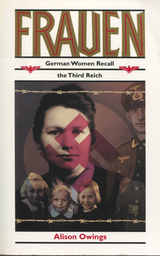 Frauen: German Women Recall the Third Reich
Owings, Alison
Rutgers University Press, 1995 What were the women of Germany doing during the Third Reich? What were they thinking? And what do they have to say a half century later?
In Frauen we hear their voices––most for the first time. Alison Owings interviewed and here records the words of twenty-nine German women who were there: Working for the Resistance. Joining the Nazi Party. Outsmarting the Gestapo. Disliking a Jewish neighbor. Hiding a Jewish friend. Witnessing "Kristallnacht." Witnessing the firebombing of Dresden. Shooting at Allied planes. Welcoming Allied troops. Being a prisoner. And being a guard. The women recall their own and others' enthusiasm, doubt, fear, fury, cowardice, guilt, and anguish.
Alison Owings, in her pursuit of such memories, was invited into the homes of these women. Because she is neither Jewish nor German, and because she speaks fluent colloquial German, many of the women she interviewed felt comfortable enough with her to unlock the past. What they have to say will surprise Americans, just as they surprised the women themselves. Not since Marcel Ophuls's controversial film The Sorrow and the Pity have we been on such intimate terms with "the enemy." In this case, the story is that of the women, those who did not make policy but were forced to participate in its effects and to witness its results. What they did and did not do is not just a reflection on them and their country––it also leads us to question what actions we might have taken in their place. The interviews do not allow for easy, smug answers.
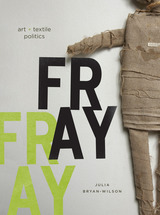 Fray: Art and Textile Politics
Julia Bryan-Wilson
University of Chicago Press, 2017 In 1974, women in a feminist consciousness-raising group in Eugene, Oregon, formed a mock organization called the Ladies Sewing Circle and Terrorist Society. Emblazoning its logo onto t-shirts, the group wryly envisioned female collective textile making as a practice that could upend conventions, threaten state structures, and wreak political havoc. Elaborating on this example as a prehistory to the more recent phenomenon of “craftivism”—the politics and social practices associated with handmaking—Fray explores textiles and their role at the forefront of debates about process, materiality, gender, and race in times of economic upheaval.
Closely examining how amateurs and fine artists in the United States and Chile turned to sewing, braiding, knotting, and quilting amid the rise of global manufacturing, Julia Bryan-Wilson argues that textiles unravel the high/low divide and urges us to think flexibly about what the politics of textiles might be. Her case studies from the 1970s through the 1990s—including the improvised costumes of the theater troupe the Cockettes, the braided rag rugs of US artist Harmony Hammond, the thread-based sculptures of Chilean artist Cecilia Vicuña, the small hand-sewn tapestries depicting Pinochet’s torture, and the NAMES Project AIDS Memorial Quilt—are often taken as evidence of the inherently progressive nature of handcrafted textiles. Fray, however, shows that such methods are recruited to often ambivalent ends, leaving textiles very much “in the fray” of debates about feminized labor, protest cultures, and queer identities; the malleability of cloth and fiber means that textiles can be activated, or stretched, in many ideological directions.
The first contemporary art history book to discuss both fine art and amateur registers of handmaking at such an expansive scale, Fray unveils crucial insights into how textiles inhabit the broad space between artistic and political poles—high and low, untrained and highly skilled, conformist and disobedient, craft and art.
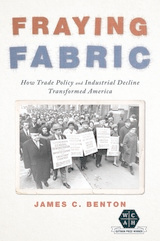 Fraying Fabric: How Trade Policy and Industrial Decline Transformed America
James C. Benton
University of Illinois Press, 2022 The decline of the U.S. textile and apparel industries between the 1940s and 1970s helped lay the groundwork for the twenty-first century's potent economic populism in America. James C. Benton looks at how shortsighted trade and economic policy by labor, business, and government undermined an employment sector that once employed millions and supported countless communities. Starting in the 1930s, Benton examines how the New Deal combined promoting trade with weakening worker rights. He then moves to the ineffective attempts to aid textile and apparel workers even as imports surged, the 1974 pivot by policymakers and big business to institute lowered trade barriers, and the deindustrialization and economic devastation that followed. Throughout, Benton provides the often-overlooked views of workers, executives, and federal officials who instituted the United States’ policy framework in the 1930s and guided it through the ensuing decades. Compelling and comprehensive, Fraying Fabric explains what happened to textile and apparel manufacturing and how it played a role in today's politics of anger.
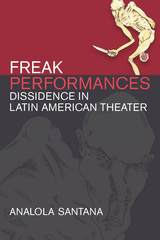 Freak Performances: Dissidence in Latin American Theater
Analola Santana
University of Michigan Press, 2018 The figure of the freak as perceived by the Western gaze has always been a part of the Latin American imaginary, from the letters that Columbus wrote about his encounters with dog-faced people to Shakespeare's Caliban. The freak acquires greater significance in a globalized, neoliberal world that defines the "abnormal" as one who does not conform mentally, physically, or emotionally and is unable or unwilling to follow the economic and cultural norms of the institutions in power. Freak Performances examines the continuing effects of colonialism on modern Latin American identities, with a particular focus on the way it has constructed the body of the other through performance. Theater questions the representations of these bodies, as it enables the empowerment of the silenced other; the freak as a spectacle of otherness finds in performance an opportunity for re-appropriation by artists resisting the dominant authority. Through an analysis of experimental theater, dance theater, performance art, and gallery-based installation art across eight countries, Analola Santana explores the theoretical issues shaped by the encounters and negotiations between different bodies in the current Latin American landscape.
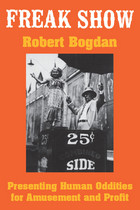 Freak Show: Presenting Human Oddities for Amusement and Profit
Robert Bogdan
University of Chicago Press, 1990 From 1840 until 1940, freak shows by the hundreds crisscrossed the United States, from the smallest towns to the largest cities, exhibiting their casts of dwarfs, giants, Siamese twins, bearded ladies, savages, snake charmers, fire eaters, and other oddities. By today's standards such displays would be considered cruel and exploitative—the pornography of disability. Yet for one hundred years the freak show was widely accepted as one of America's most popular forms of entertainment.
Robert Bogdan's fascinating social history brings to life the world of the freak show and explores the culture that nurtured and, later, abandoned it. In uncovering this neglected chapter of show business, he describes in detail the flimflam artistry behind the shows, the promoters and the audiences, and the gradual evolution of public opinion from awe to embarrassment. Freaks were not born, Bogdan reveals; they were manufactured by the amusement world, usually with the active participation of the freaks themselves. Many of the "human curiosities" found fame and fortune, becoming the celebrities of their time, until the ascent of professional medicine transformed them from marvels into pathological specimans.
Freak Weather: stories
Mary Kuryla
University of Massachusetts Press, 2017 From a nurse who sees a rattlesnake in the pediatric ICU to an animal control officer convinced she's found her abducted daughter in the house of a dog hoarder, the thirteen stories in Freak Weather are as unpredictable as the atmospheric changes that give this collection its name. With dark and raucous humor, Mary Kuryla creates female characters who, at times, combine a violent urgency with lack of introspection as they struggle to get out from under the thumb of a perceived authority. The intricate language is inseparable from the narrator's conviction; the characters lie with such bravado they're soon tangled up in their own webs. This brand of romanticism in a female character is little tolerated, and Freak Weather's mission—Kuryla's artistic mission overall—is to scratch at the intolerable. Call it bad instructions for moral behavior.
 Freaks of Fortune: The Emerging World of Capitalism and Risk in America
Jonathan Levy
Harvard University Press, 2012 Until the early nineteenth century, “risk” was a specialized term: it was the commodity exchanged in a marine insurance contract. Freaks of Fortune tells the story of how the modern concept of risk emerged in the United States. Born on the high seas, risk migrated inland and became essential to the financial management of an inherently uncertain capitalist future.
Focusing on the hopes and anxieties of ordinary people, Jonathan Levy shows how risk developed through the extraordinary growth of new financial institutions—insurance corporations, savings banks, mortgage-backed securities markets, commodities futures markets, and securities markets—while posing inescapable moral questions. For at the heart of risk’s rise was a new vision of freedom. To be a free individual, whether an emancipated slave, a plains farmer, or a Wall Street financier, was to take, assume, and manage one’s own personal risk. Yet this often meant offloading that same risk onto a series of new financial institutions, which together have only recently acquired the name “financial services industry.” Levy traces the fate of a new vision of personal freedom, as it unfolded in the new economic reality created by the American financial system.
Amid the nineteenth-century’s waning faith in God’s providence, Americans increasingly confronted unanticipated challenges to their independence and security in the boom and bust chance-world of capitalism. Freaks of Fortune is one of the first books to excavate the historical origins of our own financialized times and risk-defined lives.
Freaks of History: Two Performance Texts
James MacDonald
Intellect Books, 2017 Disability studies have long been the domain of medical and pedagogical academics. However, in recent years, the subject has outgrown its clinical origins. In Freaks of History, James MacDonald presents two dramatic explorations of disability within the wider themes of sexuality, gender, foreignness, and the other. Originally directed by Martin Harvey and performed by undergraduate students at the University of Exeter, Wellclose Square and Unsex Me Here analyze cultural marginalization against the backdrop of infamous historical events.
MacDonald, who is cerebral palsied, recognizes that disability narratives are rarely written by and for disabled people. Therefore his plays, accompanied by critical essays and director’s notes, are a welcome addition to the emerging discourse of Crip theory, and essential reading for disability students and academics alike.
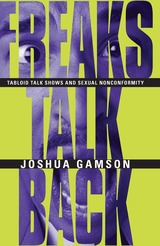 Freaks Talk Back: Tabloid Talk Shows and Sexual Nonconformity
Joshua Gamson
University of Chicago Press, 1998 Using extensive interviews, hundreds of transcripts, focus-group discussions with viewers, and his own experiences as an audience member, Joshua Gamson argues that talk shows give much-needed, high-impact public visibility to sexual nonconformists while also exacerbating all sorts of political tensions among those becoming visible. With wit and passion, Freaks Talk Back illuminates the joys, dilemmas, and practicalities of media visibility.
"This entertaining, accessible, sobering discussion should make every viewer sit up and ponder the effects and possibilities of America's daily talk-fest with newly sharpened eyes."—Publishers Weekly
"Bold, witty. . . . There's a lot of empirical work behind this deceptively easy read, then, and it allows for the most sophisticated and complex analysis of talk shows yet."—Elayne Rapping, Women's Review of Books
"Funny, well-researched, fully theorized. . . . Engaged and humane scholarship. . . . A pretty inspiring example of what talking back to the mass media can be."—Jesse Berrett, Village Voice
"An extraordinarily well-researched volume, one of the most comprehensive studies of popular media to appear in this decade."—James Ledbetter, Newsday
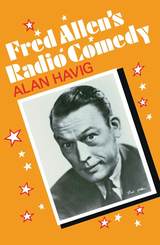 Fred Allen's Radio Comedy
Alan Havig
Temple University Press, 1991 "A notable example of radio at its best."
--Back Stage/SHOOT
In 1954, James Thurber wrote: "You can count on the thumb of one hand the American who is at once a comedian, a humorist, a wit, and a satirist, and his name is Fred Allen." Several decades after his death and more than forty years since his radio program left the air, Fred Allen's reputation as a respected humorist remains intact. In this book, Alan Havig explores the roots of his comedy, the themes it exploited, the problems and challenges that faced the radio comedy writer, and Allen's unique success with the one-dimensional medium of radio. Tracing a career that lasted from 1912 into the 1950s and encompassed vaudeville, Broadway revues, movies, radio, and television, Havig describes the "verbal slapstick" style that was Fred Allen's hallmark and legacy to American comedy.
More than a biography of Fred Allen, this is a study of the development of the radio industry, a discussion of American humor, and the story of how one relates to the other. Using a wide variety of published and unpublished sources, including the Allen Papers, Havig analyzes Allen's radio comedy of the 1930s and 40s within the context of the peculiar advantages and limitations of radio as a medium for comedy. He argues that Allen did not merely transfer vaudeville routines to a non-visual medium as did Eddie Cantor, Ed Wynn, and others. Allen developed a comedic style that depended on word play, sound effects, and on his audience's ability and readiness to imagine a visual world in which his eccentric characters operated.
Havig illustrates his story with numerous examples of Allen's humor, with fascinating anecdotes, and excerpts from radio broadcasts. In accounting for the comedian's success, he deals with vaudeville, comedy writing, sponsor's demands and censorship of material, and the organizational world of radio broadcasting companies.
Describing radio as "an instrument of wit," Fred Allen wrote: "on radio you could do subtle writing because you had access to the imagination...that was why I liked radio. we had some fun." Readers will also have some fun remembering or discovering for the first time Allen's Alley and the magic of radio comedy in its prime.
"Fred was one of the greatest of vaudeville and radio comedians. Anyone even casually concerned with the state of American humor will be well advised to give his work, as Mr. Havig presents it, careful study."
--Steve Allen
"Alan Havig has done an intelligent, careful and exhaustive research job. This is a well-written, solid performance-biography."
--J. Fred MacDonald, Curator of the Museum of Broadcast Communication, Chicago
 Fred in Love
Felice Picano
University of Wisconsin Press, 2005 In the early 1970s, when he was still an aspiring, unpublished writer, Felice Picano began a remarkable relationship with an extraordinary animal: a days-old kitten slated for euthanasia who refused to perish. Rescued, named, and trained, Fred became an extraordinarily intelligent companion, ally, teacher, and constant wonder to the author as he began his ascent through the Bohemian circles of Greenwich Village, among musicians, actors, curious characters, and even the famous British actress in hiding right next door.
But when an acquaintance brought his female cat to be serviced by Fred, an entire new set of experiences opened up for the cat-and for Picano, who'd never had the nerve to befriend her owner, his ideal man. The course of love seldom runs straight for cats or for men, and this time would prove (hilariously) no different.
This is another of Picano's distinguished portraits of a vanished era, when a new gay domain was solidifying only a few years after the Stonewall Riots, and the still nascent gay literary world that Picano would help invent was just a conception. Fred in Love is a charming, nostalgic, funny, gossipy, involving, and ultimately enlightening story about how we learn and grow, and how we love-whether the object of our affection is a cat or another human being. It's sure to take its place next to Picano's now classic literary memoirs Ambidextrous, Men Who Loved Me, and A House on the Ocean, a House on the Bay.
 Freda Kirchwey: A Woman of The Nation
Sara Alpern
Harvard University Press, 1987 Freda Kirchwey—writer, editor, publisher, opinionmaker, feminist, wife, and mother—was a salient figure in twentieth-century America, a beacon for liberals and activists of her era. A journalist with The Nation from 1918 to 1955—owner, editor, and publisher after 1937—she was an advocate of advanced ideas about sexual freedom and birth control and a tireless foe of fascism. The quintessential new woman, she combined a private and highly visible public life.
In this first full-scale biography of Kirchwey, Sara Alpern weaves the strands of gender-related issues with larger social explorations. An early feminist, from a privileged and progressive background, Kirchwey was determined to enjoy both career and marriage, but the early deaths of two of her three sons and strained relations with her husband led to self-doubt about her identity. Yet despite any hidden misgivings, her humanitarianism and outstanding journalistic and critical gifts projected her onto the larger stage of public life. Alpern richly describes Kirchwey’s extraordinary work editing The Nation, one of the longest surviving American liberal journals, and shaping public opinion on domestic and international affairs. Kirchwey focused on large political and international issues—the Spanish Civil War, democracy versus fascism and Nazism, pacifism and collective security, the plight of refugees and Zionism, McCarthyism and censorship, and, finally, the peaceful employment of atomic power.
Freda Kirchwey’s life story introduces a remarkable woman to a new generation struggling with personal and career goals as it recalls the efflorescence of liberalism for an older generation of readers.
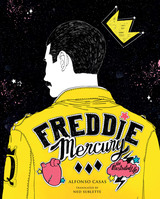 Freddie Mercury: An Illustrated Life
Alfonso Casas; translated by Ned Sublette
University of Texas Press, 2020 The music of Queen and powerhouse lead singer Freddie Mercury are best experienced with the volume turned all the way up. Alfonso Casas’s Freddie Mercury delivers a sonorous homage to the formidable singer and the turning points that produced a game-changing body of music that continues to inspire fans around the globe. First published in Spain and now available worldwide, this luminous work covers Freddie's three “births”: his birth as Farrokh Bulsara in Zanzibar; his adoption of the last name of Mercury and the launch of Queen with Brian May and Roger Taylor; and the emergence of the lasting legend after Freddie’s death at the age of forty-five. Casas's evocative illustrations highlight the key moments in the singer’s transformation from child prodigy to superstar, bringing to life the bold innovator who broke free of his conventional upbringing. Chronicling events from Freddie’s marriage to Mary Austin and early fame in London’s 1970s glam scene, to the making of multiple megahits (including the six-minute chart-topper “Bohemian Rhapsody”), to his final years in a lasting relationship with Jim Hutton, Freddie Mercury is an exhilarating, poignant portrait of a creative genius who lived life to the hilt.
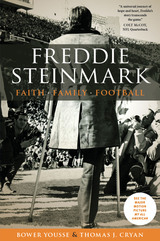 Freddie Steinmark: Faith, Family, Football
By Bower Yousse and Thomas J. Cryan
University of Texas Press, 2015 Freddie Steinmark tells the story of a legendary University of Texas football player whose courage on the field and in battling cancer still inspires the Longhorn nation.
Freddie Steinmark started at safety for the undefeated University of Texas Longhorns in 1969. In the thrilling “Game of the Century,” a come-from-behind victory against Arkansas that ensured Texas the national championship, Steinmark played with pain in his left leg. Two days later, X-rays revealed a bone tumor so large that it seemed a miracle Steinmark could walk, let alone play football. Within a week of the Arkansas game, his leg was amputated. A gritty, undersized player, Steinmark had quickly become a fan favorite at Texas. What he endured during the Longhorns’ memorable 1969 season, and what he encountered afterward, captivated not only Texans but the country at large. Americans watched closely as Steinmark confronted life’s ultimate challenge, and his openness during his battle against savage odds helped reframe the national conversation surrounding cancer and the ongoing race for a cure. Written with unfettered access to the Steinmark family and archives, Freddie Steinmark: Faith, Family, Football is the exploration of a brief but full life, one that began humbly but ended on a grand stage. It is a fitting tribute to a legendary Longhorn whose photograph, emblazoned with the word “Heart,” flashes on the Freddie Steinmark Scoreboard’s Jumbotron prior to each home football game in UT’s Darrell K Royal–Texas Memorial Stadium at Joe Jamail Field.
 Frederic Manning: An Unfinished Life
Jonathan L. Marwil
Duke University Press, 1988 In January 1930 Her Privates We appeared in London, advertised as "a record of experience on the Somme and Ancre fronts in 1916" from the pen of "Private 10922, a well known man of letters, already distinguished in another kind of literature." Reviewers praised the novel as the most accurate and moving portrayal yet rendered of the common soldier, and the work quickly became a bestseller. Shortly thereafter the author was revealed as Frederic Manning, a reclusive and little-known author of narrative poetry, philosophical dialogues, and works on Epicurus. An early contributor to Criterion, Manning enjoyed considerable esteem among his peers—T. E. Lawrence, Ernest Hemingway, Ezra Pound, and T. S. Eliot, among others.
How did a classical and noncommercial author come to write a grittily realistic war novel? Manning fled from the attendant publicity, avoiding the limelight assiduously and successfully. Marwil's search for the answer to this riddle and for the details of his life (in some ways the search is as interesting and revealing as the results) and his account of Manning's life and work reveal a great deal of the intellectual and social world of Edwardian and Georgian England.
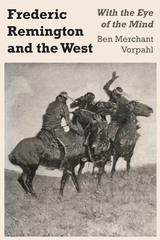 Frederic Remington and the West: With the Eye of the Mind
By Ben Merchant Vorpahl
University of Texas Press, 1978 Frederic Remington and the West sheds new light on the remarkably complicated and much misunderstood career of Frederic Remington. This study of the complex relationship between Remington and the American West focuses on the artist’s imagination and how it expressed itself. Ben Merchant Vorpahl takes into account all the dimensions of Remington’s extensive work—from journalism to fiction, sculpture, and painting. He traces the events of Remington’s life and makes extensive use of literary and art criticism and nineteenth-century American social cultural and military history in interpreting his work. Vorpahl reveals Remington as a talented, sensitive, and sometimes neurotic American whose work reflects with peculiar force the excitement and distress of the period between the Civil War and the Spanish-American War. Remington was not a “western” artist in the conventional sense; neither was he a historian: he lacked the historian’s breadth of vision and discipline, expressing himself not through analysis but through synthesis. Vorpahl shows that, even while Remington catered to the sometimes maudlin, sometimes jingoistic tastes of his public and his editors, his resourceful imagination was at work devising a far more demanding and worthwhile design—a composite work, executed in prose, pictures, and bronze. This body of work, as the author demonstrates, demands to be regarded as an interrelated whole. Here guilt, shame, and personal failure are honestly articulated, and death itself is confronted as the artist’s chief subject. Because Remington was so prolific a painter, sculptor, illustrator, and writer, and because his subjects, techniques, and media were so apparently diverse, the deeper continuity of his work had not previously been recognized. This study is a major contribution to our understanding of an important American artist. In addition, Vorpahl illuminates the interplay between history, artistic consciousness, and the development of America’s sense of itself during Remington’s lifetime.
 Frederic William Maitland: A Life
C. H. S. Fifoot
Harvard University Press, 1971 Renowned as a great scholar, teacher, and legal historian, Frederic William Maitland (1850-1906) advanced the cause of legal history, opposing the idea that legal history was law and not history, yet believing in the advantage of legal training.
He was Downing Professor of Law at Cambridge, helped to found the Selden Society, and himself edited Henry de Bracton's Notebook and four Year Books of Edward II. With Sir Frederick Pollock he wrote the brilliant work that is still a standard, The History of English Law before the Time of Edward I. He edited Memoranda de Parliamento, and wrote Domesday Book and Beyond, Township and Borough, and Roman Canon Law as well as many papers on legal history and law. His lectures on Equity, on The Forms of Action at Common Law, and on Constitutional History of England were published after his death.
C. H. S. Fifoot has written this biography of Maitland with care and devotion in a style that is lucid and eloquent. He traces the origin and development of Maitland's works, using them to reveal the man himself and his qualities of mind and spirit. Mr. Fifoot places his subject in the context not only of his age, but also of his family and friends. He has drawn on Maitland's letters as well as unpublished letters of his friends, private papers, manuscripts, and recollections, much of which would otherwise have perished. The many quotations of Maitland he has incorporated are delightful and revealing.
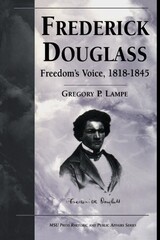 Frederick Douglass: Freedom's Voice, 1818-1845
Gregory P. Lampe
Michigan State University Press, 1998 This work in the MSU Press Rhetoric and Public Affairs Series chronicles Frederick Douglass's preparation for a career in oratory, his emergence as an abolitionist lecturer in 1841, and his development and activities as a public speaker and reformer from 1841 to 1845. Lampe's meticulous scholarship overturns much of the conventional wisdom about this phase of Douglass's life and career uncovering new information about his experiences as a slave and as a fugitive; it provokes a deeper and richer understanding of this renowned orator's emergence as an important voice in the crusade to end slavery.
Contrary to conventional wisdom, Douglass was well prepared to become a full-time lecturer for the Massachusetts Anti-Slavery Society in 1841. His emergence as an eloquent voice from slavery was not as miraculous as scholars have led us to believe. Lampe begins by tracing Douglass's life as slave in Maryland and as fugitive in New Bedford, showing that experiences gained at this time in his life contributed powerfully to his understanding of rhetoric and to his development as an orator. An examination of his daily oratorical activities from the time of his emergence in Nantucket in 1841 until his departure for England in 1845 dispels many conventional beliefs surrounding this period, especially the belief that Douglass was under the wing of William Lloyd Garrison. Lampe's research shows that Douglass was much more outspoken and independent than previously thought and that at times he was in conflict with white abolitionists.
Included in this work is a complete itinerary of Douglass's oratorical activities, correcting errors and omissions in previously published works, as well as two newly discovered complete speech texts, never before published.
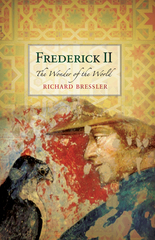 Frederick II: The Wonder of the World
Richard Bressler
Westholme Publishing, 2010 A Medieval King Who Embraced the Arts and Sciences One of the most remarkable personalities of the Middle Ages, Frederick II of Hohenstaufen was born in 1194. His parents—the reigning Holy Roman Emperor and the heiress to the Kingdom of Sicily—belonged to two of the leading ruling families in medieval Europe. The lands controlled by these two families extended from southern Denmark to Sicily, from modern Belgium to Bohemia. Frederick II eventually ruled the joint kingdom, and the story of how he gained and maintained this status is the primary thread running through his life. As a child in Sicily, Frederick was a ward of Pope Innocent III. When he came of age, he sought to be crowned Holy Roman Emperor but only succeeded in 1220 after many years of negotiations with the Vatican, which was reluctant to give up or share power. Resenting the influence and pressure from the papacy, Frederick became its leading opponent. As a result, the new pope, Gregory IX, condemned Frederick as the Antichrist. However, Frederick believed he was a sincere Christian, and led the Sixth Crusade to the Holy Land while under excommunication. As a ruler, Frederick was unusually modern in his sensibilities. Sicily was a cultural melting pot in the thirteenth century and Frederick ended up speaking several languages. He protected Jews and Muslims in his realms and prosecuted Christian heretics throughout his thirty-year reign. Frederick was married three times, and had four legitimate and eleven illegitimate children. He was a polymath with interests ranging from sculpture, architecture, and poetry to mathematics and science in many forms, earning him admiration from his contemporaries who called him Stupor mundi, “Wonder of the World.” His lifelong interest in hunting with birds of prey led to the writing of the classic work De Arte Venandi cum Avibus (The Art of Falconry), which is still in print. Based on the latest scholarship and written for the general reader, Frederick II: The Wonder of the World by Richard Bressler provides the complete story of this complex and fascinating man.
Frederick Jackson Turner: Wisconsin’s Historian of the Frontier
Martin Ridge
Wisconsin Historical Society Press, 1986 This book contains four essays by and about Frederick Jackson Turner (1861-1932), the Wisconsin-born historian whose ideas and writings have had such a profound impact upon the way Americans view their past, and their place in the world. It is a book not only for the scholar and teacher (who will find it both useful and incisive), but also for the mythic "general reader" who wants to broaden and enrich his aquaintanceship with Turner and the celebrated Frontier Thesis. In addition to essays by Turner and by Martin Ridge of The Huntington Library and the late Ray Allen Billington, the book is illustrated with photos from the State Historical Society of Wisconsin.
 Frederick Law Olmsted and the Boston Park System
Cynthia Zaitzevsky
Harvard University Press, 1982 Whether flying a kite in Franklin Park, gardening in the Fens, or jogging along the Riverway, today’s Bostonians are greatly indebted to the legacy of Frederick Law Olmsted. The man who dreamed of an “emerald necklace” of parks for Boston completed his plans in 1895, yet his invigorating influence shapes the city to this day, despite the encroachment of highways and urban sprawl. Cynthia Zaitzevsky’s book is the first fully illustrated account of Olmsted’s work: the process of “getting the plan” of a park, supervising its construction, adding the necessary “furniture” of bridges and other structures, and selecting plants, shrubs, and trees.
Frederick Law Olmsted’s stellar career in landscape architecture began with his design for Central Park in New York City. Public concern for open spaces led Boston to commission Olmsted to design peaceful “country parks” for the mental and physical refreshment of those who lived in the expanding city. He planned the system of five parks and connecting parkways extending out from the original Boston Common and Public Garden, as well as harbor and riverfront improvements—a vast set of projects involving 2,000 acres of open land. He and his firm also designed many smaller parks, playgrounds, and suburban subdivisions.
This book will be invaluable to anyone interested in landscape architecture, city planning, the history of Boston, or the nineteenth-century urban park movement and its current revival.
Frederick Novy and the Development of Bacteriology in Medicine
Kazanjian, Powel H
Rutgers University Press, 2017 At the turn of the twentieth century, Frederick Novy was the leader among a new breed of full-time bacteriologists at American medical schools. Although historians have examined bacteriologic work done in American health department laboratories, there has been little examination of similar work completed within U.S. medical schools during this period.
In Frederick Novy and the Development of Bacteriology in Medicine, medical historian, medical researcher, and clinician Powel H. Kazanjian uses Novy’s archived letters, laboratory notebooks, lecture notes, and published works to examine medical research and educational activities at the University of Michigan and other key medical schools during a formative period in modern medical science.
Frederik Pohl
Michael Page
University of Illinois Press, 2015 One of science fiction's undisputed grandmasters, Frederik Pohl built an astonishing career that spanned more than seven decades. Along the way he won millions of readers and seemingly as many awards while producing novels, short stories, and essays that left a profound mark on the genre. In this first-of-its-kind study, Michael R. Page traces Pohl's journey as an author but also uncovers his role as a transformative figure who shaped the genre as a literary agent, book editor, and in Gardner Dozois' words, "quite probably the best SF magazine editor who ever lived."
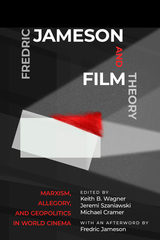 Fredric Jameson and Film Theory: Marxism, Allegory, and Geopolitics in World Cinema
Keith B. Wagner
Rutgers University Press, 2022 Frederic Jameson and Film Theory is the first collection of its kind, it assesses and critically responds to Fredric Jameson’s remarkable contribution to film theory. The essays assembled explore key Jamesonian concepts—such as totality, national allegory, geopolitics, globalization, representation, and pastiche—and his historical schema of realism, modernism, and postmodernism, considering, in both cases, how these can be applied, revised, expanded and challenged within film studies. Featuring essays by leading and emerging voices in the field, the volume probes the contours and complexities of neoliberal capitalism across the globe and explores world cinema's situation within these forces by deploying and adapting Jamesonian concepts, and placing them in dialogue with other theoretical paradigms. The result is an innovative and rigorously analytical effort that offers a range of Marxist-inspired approaches towards cinemas from Asia, Latin America, Europe, and North America in the spirit of Jameson's famous rallying cry: 'always historicize!'.
Fredric Jameson: The Project of Dialectical Criticism
Robert T. Tally
Pluto Press, 2014 Fredric Jameson is the most important Marxist critic in the world today. While consistently operating at the cutting edge of literary and cultural studies, Jameson has remained committed to seemingly old-fashioned philosophical discourses, most notably dialectical criticism and utopian thought.
In Fredric Jameson: The Project of Dialectical Criticism, Robert Tally surveys Jameson’s entire oeuvre, from his early studies of Sartre and formal criticism through his engagements with postmodernism and globalisation to his recent readings of Hegel, Marx and the valences of the dialectic.
The book is both a comprehensive critical guide to Jameson’s theoretical project and itself a convincing argument for the power of dialectical criticism to understand the world today.
Fredrik Barth: An Intellectual Biography
Thomas Hylland Eriksen
Pluto Press, 2015 Fredrik Barth, editor of the influential Ethnic Groups and Boundaries, is one of the towering figures of twentieth-century anthropology. In this accessible but penetrating intellectual biography, Thomas Hylland Eriksen explores Barth’s six-decade career, following Barth from his early ecological studies in Pakistan to political studies in Iran, to groundbreaking fieldwork in Norway, New Guinea, Bali, and Bhutan. Along the way, Eriksen raises many of the questions that emerge from Barth’s own work: questions of unity and diversity, of culture and relativism, and of art and science. This will surely be the definitive biography of Barth for many years to come.
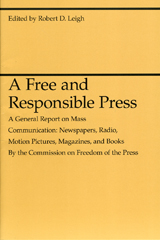 A Free and Responsible Press: A General Report on Mass Communication: Newspapers, Radio, Motion Pictures, Magazines, and Books
Edited by Robert D. Leigh
University of Chicago Press, 1974 The question of how much freedom the press should enjoy has been debated throughout American history. In 1942 an impartial commission was formed to study mass communication, evaluate the performance of the media, and make recommendations for possible regulation of the press. This book is the general report of that commission.
The Commission on Freedom of the Press began with the premise that freedom of the press is essential to political liberty; it is unique among the freedoms, for it promotes and protects all the rest. At the same time, the commission feared the concentration of media control into fewer and fewer hands, stating, "It [is] imperative that the great agencies of mass communication show hospitality to ideas which their owners do not share." The commission concluded that any regulation of the media must come from within, not from the government.
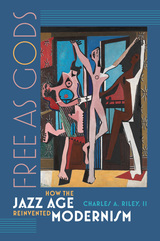 Free as Gods: How the Jazz Age Reinvented Modernism
Charles A. Riley
University Press of New England, 2017 Among many art, music and literature lovers, particularly devotees of modernism, the expatriate community in France during the Jazz Age represents a remarkable convergence of genius in one place and period—one of the most glorious in history. Drawn by the presence of such avant-garde figures as Joyce and Picasso, artists and writers fled the Prohibition in the United States and revolution in Russia to head for the free-wheeling scene in Paris, where they made contact with rivals, collaborators, and a sophisticated audience of collectors and patrons. The outpouring of boundary-pushing novels, paintings, ballets, music, and design was so profuse that it belies the brevity of the era (1918–1929). Drawing on unpublished albums, drawings, paintings, and manuscripts, Charles A. Riley offers a fresh examination of both canonic and overlooked writers and artists and their works, by revealing them in conversation with one another. He illuminates social interconnections and artistic collaborations among the most famous—Fitzgerald, Hemingway, Gershwin, Diaghilev, and Picasso—and goes a step further, setting their work alongside that of African Americans such as Sidney Bechet, Archibald Motley Jr., and Langston Hughes, and women such as Gertrude Stein and Nancy Cunard. Riley’s biographical and interpretive celebration of the many masterpieces of this remarkable group shows how the creative community of postwar Paris supported astounding experiments in content and form that still resonate today.
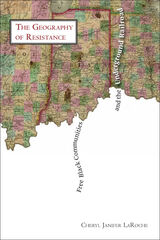 Free Black Communities and the Underground Railroad: The Geography of Resistance
Cheryl Janifer LaRoche
University of Illinois Press, 2013 This enlightening study employs the tools of archaeology to uncover a new historical perspective on the Underground Railroad. Unlike previous histories of the Underground Railroad, which have focused on frightened fugitive slaves and their benevolent abolitionist accomplices, Cheryl LaRoche focuses instead on free African American communities, the crucial help they provided to individuals fleeing slavery, and the terrain where those flights to freedom occurred. This study foregrounds several small, rural hamlets on the treacherous southern edge of the free North in Illinois, Indiana, and Ohio. LaRoche demonstrates how landscape features such as waterways, iron forges, and caves played a key role in the conduct and effectiveness of the Underground Railroad. Rich in oral histories, maps, memoirs, and archaeological investigations, this examination of the "geography of resistance" tells the new powerful and inspiring story of African Americans ensuring their own liberation in the midst of oppression.
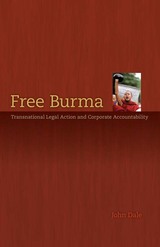 Free Burma: Transnational Legal Action and Corporate Accountability
John G. Dale
University of Minnesota Press, 2010 When the military’s ruling party violently quashed Burma’s pro-democracy movement, diplomatic condemnation quickly followed—to little effect. But when Burma’s activists began linking the movement to others around the world, the result was dramatically different. This book is the first to explain how Burma’s pro-democracy movement became a transnational social movement for human rights.
Through the experience of the Free Burma movement, John G. Dale demonstrates how social movements create and appropriate legal mechanisms for generating new transnational political opportunities. He presents three corporate accountability campaigns waged by the Free Burma movement. The cases focus on the legislation of “Free Burma” laws in local governments throughout the United States; the effort to force the state of California to de-charter Unocal Oil Corporation for its flagrant abuse of human rights; and the first-ever use of the U.S. Alien Tort Claims Act to sue a corporation in a U.S. court for human rights abuses committed abroad. Dale’s work also raises the issue of how foreign policies of so-called constructive engagement actually pose a threat to the hope of Burma’s activists—and others worldwide—for more democratic economic development.
 The Free Economy and the Strong State
Andrew Gamble
Duke University Press, 1988 A new politics emerged in the 1970s in response to the world recession, the exhaustion of Fordism (the theory, traced to Henry Ford, that well-paid industrial workers fuel continuous capitalist growth), and the breakdown of American hegemony. Thatcherism, one expression of this new politics, acquired its distinctive characteristics through the exceptional and deep-seated crisis of state authority that developed in Britain in the mid-1970s. By 1987, the Conservatives under Thatcher's leadership had won their third successive election victory over a divided opposition and enjoyed a degree of political and ideological dominance that led many commentators to speak of the end of the socialist era and the emergence of a new consensus in Britain. A new word—Thatcherism—had entered the political lexicon. It has come to signify a broad-ranging and distinctive program aimed at promoting economic recovery through the privatization of public enterprise and restoring the authority of the state. The Free Economy and the Strong State explores the roots of Thatcherism and its relationship to the Conservative tradition, to the economic liberal ideology of the New Right, and to the "new politics" which emerged from the recession and crisis of the world order in the mid 1970s.
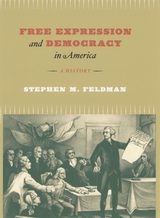 Free Expression and Democracy in America: A History
Stephen M. Feldman
University of Chicago Press, 2008 From the 1798 Sedition Act to the war on terror, numerous presidents, members of Congress, Supreme Court justices, and local officials have endorsed the silencing of free expression. If the connection between democracy and the freedom of speech is such a vital one, why would so many governmental leaders seek to quiet their citizens? Free Expression and Democracy in America traces two rival traditions in American culture—suppression of speech and dissent as a form of speech—to provide an unparalleled overview of the law, history, and politics of individual rights in the United States.
Charting the course of free expression alongside the nation’s political evolution, from the birth of the Constitution to the quagmire of the Vietnam War, Stephen M. Feldman argues that our level of freedom is determined not only by the Supreme Court, but also by cultural, social, and economic forces. Along the way, he pinpoints the struggles of excluded groups—women, African Americans, and laborers—to participate in democratic government as pivotal to the development of free expression. In an age when our freedom of speech is once again at risk, this momentous book will be essential reading for legal historians, political scientists, and history buffs alike.
Free for All?: Lessons from the RAND Health Insurance Experiment
Joseph P. Newhouse
Harvard University Press, 1993 From 1971 to 1982, researchers at the RAND Corporation devised an experiment to address two key questions in health care financing: how much more medical care will people use if it is provided free of charge? and what are the consequences for their health? This book presents a comprehensive account of the experiment and its findings. It will be an invaluable teaching tool and reference for anyone concerned with health-care policy.
Free for All: The Internet's Transformation of Journalism
Elliot King
Northwestern University Press, 2010 In Free for All, longtime scholar of digital media Elliot King begins with a brief history of the technological development of news media from the appearance of newspapers in the sixteenth century to the rise of broadcasting and the Internet. Within that context, King demystifies the emergence of online communication and social media as the third major technological platform for news, making the current pace of change appear less vertiginous. Free for All provides anyone with an interest in the future of journalism the grounding necessary for an informed discussion.
 Free India in Asia
Werner Levi
University of Minnesota Press, 1952
Free India in Asia was first published in 1952. Minnesota Archive Editions uses digital technology to make long-unavailable books once again accessible, and are published unaltered from the original University of Minnesota Press editions.
The critical importance of India to the global future of democracy is recognized throughout the world, but perhaps less well understood is the significance to India's future political course of her relations with the other Asian nations. This carefully documented study surveys India's position in the whole of Asia and her relations with each of the countries in the area, with emphasis on developments since India's independence in 1947. Much of the material is based on Dr. Levi's personal observations and interviews with Indian leaders during a recent visit to the country.
In contrast to most studies of India's foreign policy, which are either speculative or partisan, Dr. Levi's work is based on factual findings, not on preconceived ideas.
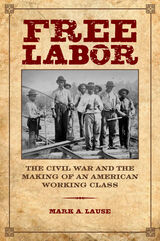 Free Labor: The Civil War and the Making of an American Working Class
Mark A. Lause
University of Illinois Press, 2015 Monumental and revelatory, Free Labor explores labor activism throughout the country during a period of incredible diversity and fluidity: the American Civil War. Mark A. Lause describes how the working class radicalized during the war as a response to economic crisis, the political opportunity created by the election of Abraham Lincoln, and the ideology of free labor and abolition. His account moves from battlefield and picket line to the negotiating table, as he discusses how leaders and the rank-and-file alike adapted tactics and modes of operation to specific circumstances. His close attention to women and African Americans, meanwhile, dismantles notions of the working class as synonymous with whiteness and maleness. In addition, Lause offers a nuanced consideration of race's role in the politics of national labor organizations, in segregated industries in the border North and South, and in black resistance in the secessionist South, creatively reading self-emancipation as the largest general strike in U.S. history.
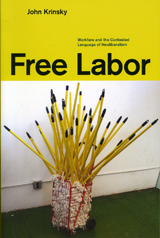 Free Labor: Workfare and the Contested Language of Neoliberalism
John Krinsky
University of Chicago Press, 2008 One of former New York City Mayor Rudolph Giuliani’s proudest accomplishments is his expansion of the Work Experience Program, which uses welfare recipients to do routine work once done by unionized city workers. The fact that WEP workers are denied the legal status of employees and make far less money and enjoy fewer rights than do city workers has sparked fierce opposition. For antipoverty activists, legal advocates, unions, and other critics of the program this double standard begs a troubling question: are workfare participants workers or welfare recipients?
At times the fight over workfare unfolded as an argument over who had the authority to define these terms, and in Free Labor, John Krinsky focuses on changes in the language and organization of the political coalitions on either side of the debate. Krinsky’s broadly interdisciplinary analysis draws from interviews, official documents, and media reports to pursue new directions in the study of the cultural and cognitive aspects of political activism. Free Labor will instigate a lively dialogue among students of culture, labor and social movements, welfare policy, and urban political economy.
The Free List: Property Without Taxes
Alfred Balk
Russell Sage Foundation, 1971 A recent Supreme Court decision confirmed the churches' right to tax exemption for religious property. In this highly relevant book, Alfred Balk places this question in social perspective and demonstrates how tax exemption and immunity affect the fiscal load of local communities and the well-being of our whole society. Among the "free list" or tax-free properties which the author examines are churches, hospitals, schools, and government buildings. Seven specific proposals for reform are set forth.
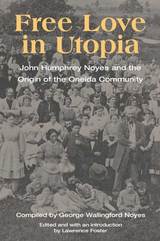 Free Love in Utopia: John Humphrey Noyes and the Origin of the Oneida Community
Compiled by George Wallingford Noyes
University of Illinois Press, 2001 The "free love" Oneida Community, founded in New York state during the turbulent decades before the Civil War, practiced an extraordinary system of "complex marriage" as part of its sustained experiment in creating the kingdom of heaven on earth. For more than thirty years, two hundred adult members considered themselves heterosexually married to the entire community rather than to a single monogamous partner.
Free Love in Utopia provides the first in-depth account of how complex marriage was introduced among previously monogamous or single Oneida Community members. Bringing together vivid, firsthand writings by members of the community--including personal correspondence, memoranda on spiritual and material concerns, and official pronouncements--this volume portrays daily life in Oneida and the deep religious commitment that permeated every aspect of it. It also presents a complex portrait of the community's founder, John Humphrey Noyes, who demanded not only complete religious loyalty from his followers but also minute control over their sexual lives. It recounts the formidable legal suits faced by the community--one of which almost forced it to disband in 1852--and the critical behind-the-scenes work of Noyes's second-in-command, John L. Miller. Most important, Free Love in Utopia describes in detail how Oneida's "enlarged family" was created and how its unorthodox practices affected its members.
Key selections from a large collection of primary documents detailing Oneida's early years were compiled by George Wallingford Noyes, nephew of the founder. The present volume, astutely edited and introduced by noted communitarian scholar Lawrence Foster, marks the first publication of G. W. Noyes's remarkable manuscript, excerpted from the irreplaceable original documents that were deliberately burned after his death. The volume also reproduces Oneida's First Annual Report, which contains the sexual manifesto that underlay the community.
Free Market in Its Twenties: Modern Business Decision Making in Central and Eastern Europe
George Soros
Central European University Press, 2014 This book provides a broadly managerial perspective on key trends that affect business decision-making in Central and Eastern Europe twenty years after the beginning of the region's transition to market economy. Reflecting different viewpoints, including economic, social, and political approaches, the essays helps managers of the region to understand better both regional and the global forces influencing their businesses – as well as to bring to their attention relevant cutting-edge approaches to business thinking and decision-making.
 Free Market Tuberculosis: Managing Epidemics in Post-Soviet Georgia
Erin Koch
Vanderbilt University Press, 2013 The Soviet health care infrastructure and its tuberculosis-control system were anchored in biomedicine, but the dire resurgence of tuberculosis at the end of the twentieth century changed how experts in post-Soviet nations--and globally--would treat the disease. As Free Market Tuberculosis dramatically demonstrates, market reforms and standardized treatment programs have both influenced and undermined the management of tuberculosis care in the now-independent country of Georgia. The alarming rate of tuberculosis infection in this nation at the crossroads of Eastern Europe and Asia cannot be disputed, and yet solutions to attacking the disease are very much debated.
Anthropologist Erin Koch explores the intersection of the nation's extensive medical history, the effects of Soviet control, and the highly standardized yet poorly regulated treatments promoted by the World Health Organization. Although statistics and reports tell one story--a tale of success in Georgia--Koch's ethnographic approach reveals all facets of this cautionary tale of a monolithic approach to medicine.
This book is the 2011 recipient of the annual Norman L. and Roselea J. Goldberg Prize for the best project in the area of medicine.
Free Markets with Solidarity and Sustainability
Martin Schlag
Catholic University of America Press, 2016 The contributors to Free Markets with Sustainability and Solidarity, who represent a unique combination of European and American scholars, present their reflections on evolving forms of economics. All are unified by a holistic, Christian anthropology, from which they draw epistemological consequences for free markets and a free society.
 Free Radical: Ernest Chambers, Black Power, and the Politics of Race
Tekla Agbala Ali Johnson, with foreword by Quintard Taylor
Texas Tech University Press, 2012 Amid the deadly racial violence of the 1960s, an unassuming student from a fundamentalist Christian home in Omaha emerged as a leader and nationally recognized black activist. Ernest Chambers, elected to the Nebraska State Legislature in 1970, eventually became one of the most powerful legislators the state has ever known. As Chambers bids for reelection in 2012 to the office he held for thirty-eight years, Omaha native Tekla Agbala Ali Johnson illuminates his embattled career as a fiercely independent defender of the downtrodden.Tracing the growth of the Black Power Movement in Nebraska and throughout the U.S., Johnson discovers its unprecedented emphasis on electoral politics. For the first time since Reconstruction, voters catapulted hundreds of African American community leaders into state and national political arenas. Special-interest groups and political machines would curb the success of aspiring African American politicians, just as urban renewal would erode their geographical and political bases, compelling the majority to join the Democratic or Republican parties. Chambers was one of few not to capitulate.In her revealing study of one man and those he represented, Johnson portrays one intellectual’s struggle alongside other African Americans to actualize their latent political power.
 Free Riding
Richard Tuck
Harvard University Press, 2008 One individual’s contribution to a large collective project—such as voting in a national election or contributing to a public television fund-raising campaign—often seems negligible. A striking proposition of contemporary economics and political science is that it would be an exercise of reason, not a failure of it, not to contribute to a collective project if the contribution is negligible, but to benefit from it nonetheless.
But Richard Tuck wonders whether this phenomenon of free riding is a timeless aspect of human nature or a recent, historically contingent one. He argues for the latter, showing that the notion would have seemed strange to people in the nineteenth century and earlier and that the concept only became accepted when the idea of perfect competition took hold in economics in the early twentieth century.
Tuck makes careful distinctions between the prisoner’s dilemma problem, threshold phenomena such as voting, and free riding. He analyzes the notion of negligibility, and shows some of the logical difficulties in the idea—and how the ancient paradox of the sorites illustrates the difficulties.
Tuck presents a bold challenge to the skeptical account of social cooperation so widely held today. If accepted, his argument may over time encourage more public-spirited behavior.
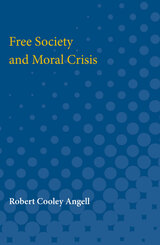 Free Society and Moral Crisis
Robert Cooley Angell
University of Michigan Press, 1958 Must freedom be bought at the price of conflict and chaos? Free society is in a state of crisis, beset with racial and religious tension, family conflict, juvenile delinquency, and rising crime rates. Must it always be so? This is the question Robert Cooley Angell undertakes to answer."This great study," Reinhold Niebuhr writes in the Foreword, "deals with the peculiar problems of a technical society such as ours—its rapid social change, the anonymity of its urban community, the peculiar hazards of its cities . . . It is a study in social dynamics, tracing the various self-righting tendencies by which pressures from without and within, and catastrophies of external and internal origin, may be met . . . But the book is more than this . . . Angell is studying not merely social integration but also moral discipline. He never loses sight of the full dimension of moral life—its individual no less than its social extension . . . This book—the fruit of wisdom and a vast erudition—thus is a precious resource to the general reader and to the specialist concerned with the problems of social and moral integration."
Free Spaces: The Sources of Democratic Change in America
Sara M. Evans and Harry C. Boyte
University of Chicago Press, 1992 What are the environments, the public spaces, in which ordinary people become participants in the complex, ambiguous, engaging conversation about democracy: participators in governance rather than spectators or complainers, victims or accomplices? What are the roots, not simply of movements against oppression, but also of those democratic social movements which both enlarge the opportunities for participation and enhance people's ability to participate in the public world?
In Free Spaces, Sara M. Evans and Harry C. Boyte argue for a new understanding of the foundations for democratic politics by analyzing the settings in which people learn to participate in democracy. In their new Introduction, the authors link the concept of free spaces to recent theoretical discussions about community, public life, civil society, and social movements.
Free Speech and Censorship Around the Globe
Peter Molnar
Central European University Press, 2015 This book focuses on regulatory challenges of creating and sustaining freedom of speech and freedom of information two decades after the fall of the Berlin wall, in global, comparative context. Some chapters overview, others address specific issues, or describe country case studies. Instead of trying to provide an exhaustive assessment which in one volume might not reach deeper analyzes of contextual details, this book will shed light on and help better understanding of general challenges for freedom of speech and information through varying comparative examples and highlighting important regulatory questions.
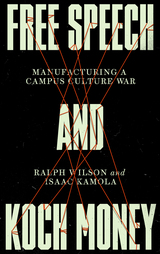 Free Speech and Koch Money: Manufacturing a Campus Culture War
Ralph Wilson
Pluto Press, 2021 In recent years hundreds of high-profile ‘free speech’ incidents have rocked US college campuses. Milo Yiannopoulos, Ben Shapiro, Ann Coulter and other right-wing speakers have faced considerable protest, with many being disinvited from speaking. These incidents are widely circulated as examples of the academy’s intolerance towards conservative views. But this response is not the spontaneous outrage of the liberal colleges. There is a darker element manufacturing the crisis, funded by political operatives, and designed to achieve specific political outcomes. If you follow the money, at the heart of the issue lies the infamous and ultra-libertarian Koch donor network. Grooming extremist celebrities, funding media platforms that promote these controversies, developing legal organzations to sue universities and corrupting legislators, the influence of the Koch network runs deep. We need to abandon the ‘campus free speech’ narrative and instead follow the money if we ever want to root out this dangerous network from our universities.
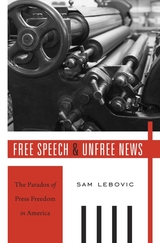 Free Speech and Unfree News: The Paradox of Press Freedom in America
Sam Lebovic
Harvard University Press, 2016 Does America have a free press? Many who answer yes appeal to First Amendment protections that shield the press from government censorship. But in this comprehensive history of American press freedom as it has existed in theory, law, and practice, Sam Lebovic shows that, on its own, the right of free speech has been insufficient to guarantee a free press.
Lebovic recovers a vision of press freedom, prevalent in the mid-twentieth century, based on the idea of unfettered public access to accurate information. This “right to the news” responded to persistent worries about the quality and diversity of the information circulating in the nation’s news. Yet as the meaning of press freedom was contested in various arenas—Supreme Court cases on government censorship, efforts to regulate the corporate newspaper industry, the drafting of state secrecy and freedom of information laws, the unionization of journalists, and the rise of the New Journalism—Americans chose to define freedom of the press as nothing more than the right to publish without government censorship. The idea of a public right to all the news and information was abandoned, and is today largely forgotten.
Free Speech and Unfree News compels us to reexamine assumptions about what freedom of the press means in a democratic society—and helps us make better sense of the crises that beset the press in an age of aggressive corporate consolidation in media industries, an increasingly secretive national security state, and the daily newspaper’s continued decline.
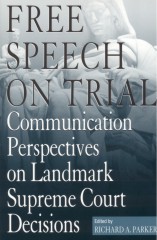 Free Speech On Trial: Communication Perspectives on Landmark Supreme Court Decisions
Edited by Richard A. Parker
University of Alabama Press, 2008 Describes landmark free speech decisions of the Supreme Court while highlighting the issues of language, rhetoric, and communication that underlie them.
At the intersection of communication and First Amendment law reside two significant questions: What is the speech we ought to protect, and why should we protect it? The 20 scholars of legal communication whose essays are gathered in this volume propose various answers to these questions, but their essays share an abiding concern with a constitutional guarantee of free speech and its symbiotic relationship with communication practices. Free Speech on Trial fills a gap between textbooks that summarize First Amendment law and books that analyze case law and legal theory. These essays explore questions regarding the significance of unregulated speech in a marketplace of goods and ideas, the limits of offensive language and obscenity as expression, the power of symbols, and consequences of restraint prior to publication versus the subsequent punishment of sources. As one example, Craig Smith cites Buckley vs. Valeo to examine how the context of corruption in the 1974 elections shaped the Court's view of the constitutionality of campaign contributions and expenditures. Collectively, the essays in this volume suggest that the life of free speech law is communication. The contributors reveal how the Court's free speech opinions constitute discursive performances that fashion, deconstruct, and reformulate the contours and parameters of the Constitution’s guarantee of free expression and that, ultimately, reconstitute our government, our culture, and our society.
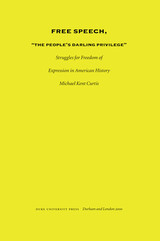 Free Speech, The People's Darling Privilege: Struggles for Freedom of Expression in American History
Michael Kent Curtis
Duke University Press, 2000 Modern ideas about the protection of free speech in the United States did not originate in twentieth-century Supreme Court cases, as many have thought. Free Speech, “The People’s Darling Privilege” refutes this misconception by examining popular struggles for free speech that stretch back through American history. Michael Kent Curtis focuses on struggles in which ordinary and extraordinary people, men and women, black and white, demanded and fought for freedom of speech during the period from 1791—when the Bill of Rights and its First Amendment bound only the federal government to protect free expression—to 1868, when the Fourteenth Amendment sought to extend this mandate to the states. A review chapter is also included to bring the story up to date.
Curtis analyzes three crucial political struggles: the controversy that surrounded the 1798 Sedition Act, which raised the question of whether criticism of elected officials would be protected speech; the battle against slavery, which raised the question of whether Americans would be free to criticize a great moral, social, and political evil; and the controversy over anti-war speech during the Civil War. Many speech issues raised by these controversies were ultimately decided outside the judicial arena—in Congress, in state legislatures, and, perhaps most importantly, in public discussion and debate. Curtis maintains that modern proposals for changing free speech doctrine can usefully be examined in the light of this often ignored history. This broader history shows the crucial effect that politicians, activists, ordinary citizens—and later the courts—have had on the American understanding of free speech.
Filling a gap in legal history, this enlightening, richly researched historical investigation will be valuable for students and scholars of law, U.S. history, and political science, as well as for general readers interested in civil liberties and free speech.
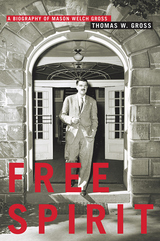 Free Spirit: A Biography of Mason Welch Gross
Thomas W. Gross
Rutgers University Press, 2022 The Mason Gross School of the Arts in New Brunswick, New Jersey, stands as a memorial to one of Rutgers University’s most influential leaders. Gross started teaching at Rutgers as an assistant professor of philosophy in 1946, but quickly rose through the ranks to become the university’s provost in 1949 and finally its president from 1959 to 1971. He led the university through an era when it experienced both some of its greatest growth and most intense controversies.
Free Spirit explores how Gross helped reshape Rutgers from a sleepy college into a world-renowned public research university. It also reveals how he steered the university through the tumult of the Red Scare, civil rights era, and the Vietnam War by taking principled stands in favor of both racial equality and academic freedom. This biography tells the story of how, from an early age, Gross came to believe in the importance of doing what was right, even when the backlash took a toll on his own health.
Written by his youngest son Thomas, this book offers a uniquely well-rounded portrait of Gross as both a public figure and a private person. Covering everything from his service in World War II to his stints as a game-show personality, Free Spirit introduces the reader to a remarkable academic leader.
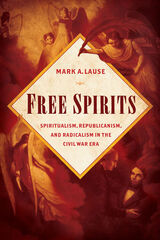 Free Spirits: Spiritualism, Republicanism, and Radicalism in the Civil War Era
Mark A. Lause
University of Illinois Press, 2016 Often dismissed as a nineteenth-century curiosity, spiritualism influenced the radical social and political movements of its time. Believers filled the ranks of the Free Democrats, agitated for land and monetary reform, fought for abolition, and held egalitarian leanings that found powerful expression in campaigns for gender and racial equality. In Free Spirits , Mark A. Lause considers spiritualism as a political and cultural force in Civil War-era America. Lause reveals the scope, spread, and influence of the movement, both in its links to reformist causes and its ability to amplify previously marginalized voices. Rooting spiritualism's appeal in the crises of the time, Lause considers how spiritualist influences, through the distillation of the war, forced reassessments of the question of Radical Republicanism and radicalism in general. He also delves into unexplored areas such as the movement's role in Lincoln's reelection and the relationship between Native Americans and spiritualists.
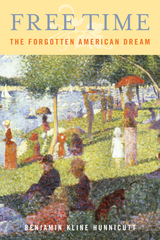 Free Time: The Forgotten American Dream
Benjamin Hunnicutt
Temple University Press, 2013 Has the "American Dream" become an unrealistic utopian fantasy, or have we simply forgotten what we are working for? In his topical book, Free Time, Benjamin Kline Hunnicutt examines the way that progress, once defined as more of the good things in life as well as more free time to enjoy them, has come to be understood only as economic growth and more work, forevermore.
Hunnicutt provides an incisive intellectual, cultural, and political history of the original "American Dream" from the colonial days to the present. Taking his cue from Walt Whitman's "higher progress," he follows the traces of that dream, cataloging the myriad voices that prepared for and lived in an opening "realm of freedom."
Free Time reminds Americans of the forgotten, best part of the "American Dream"-that more and more of our lives might be lived freely, with an enriching family life, with more time to enjoy nature, friendship, and the adventures of the mind and of the spirit.
|
|



